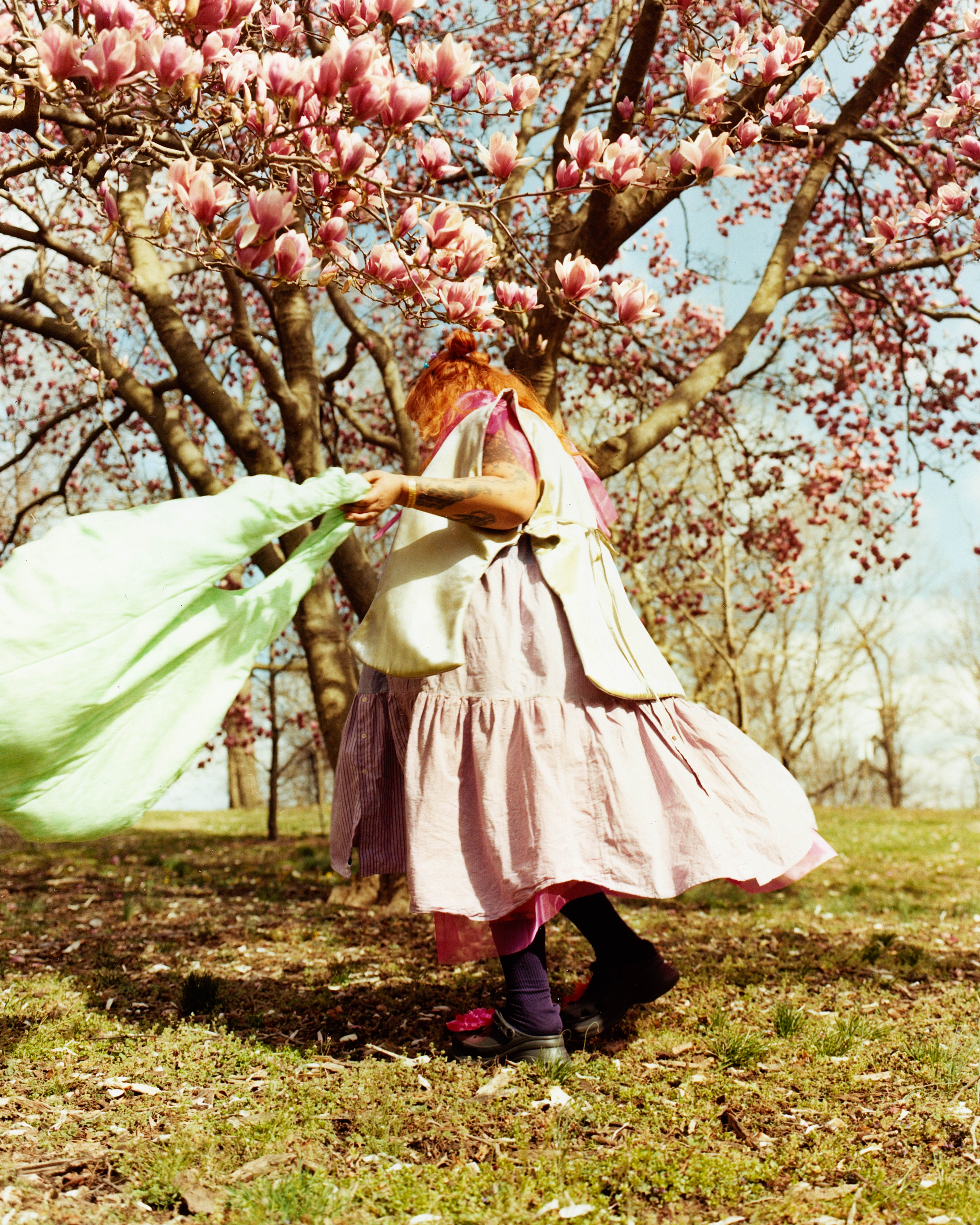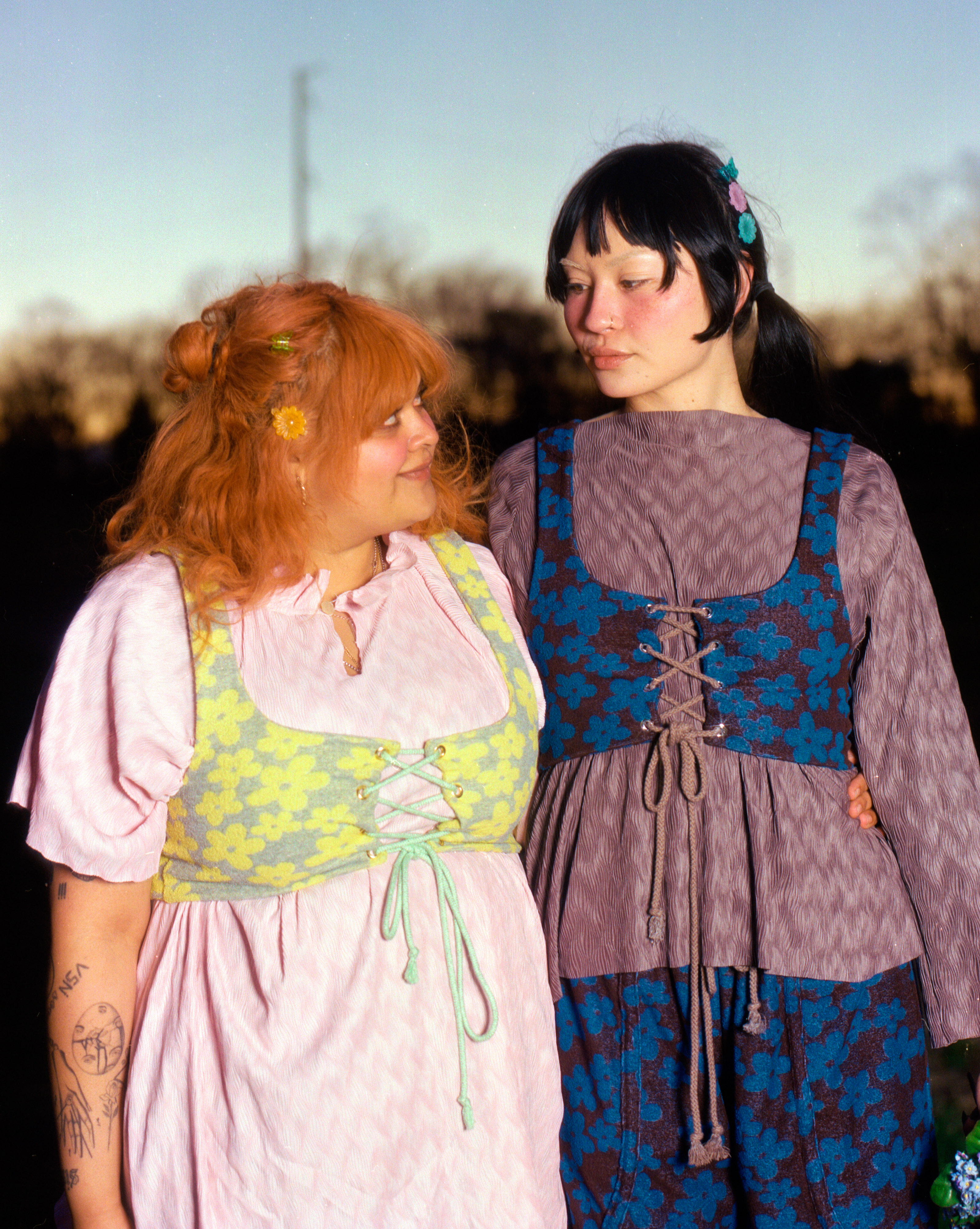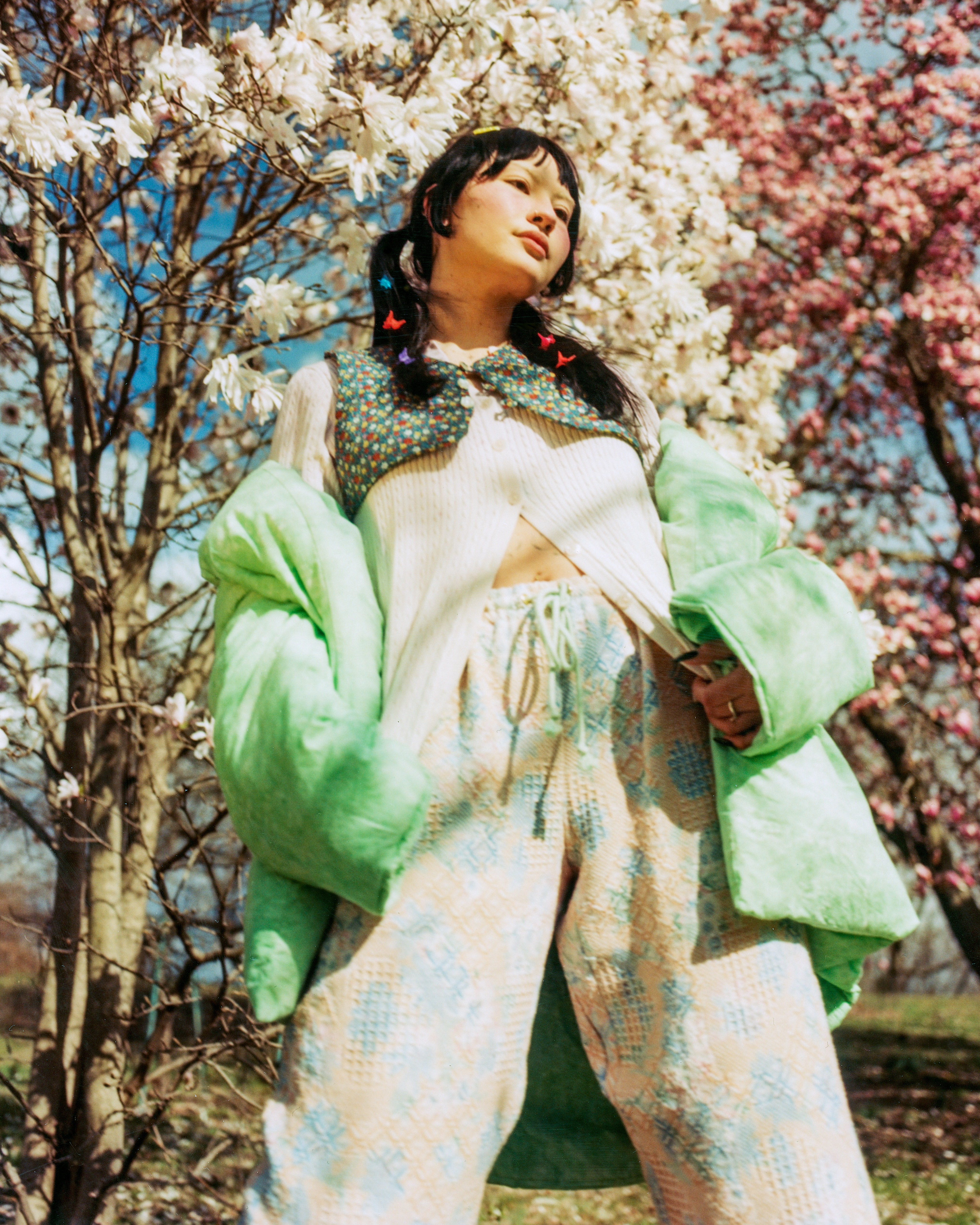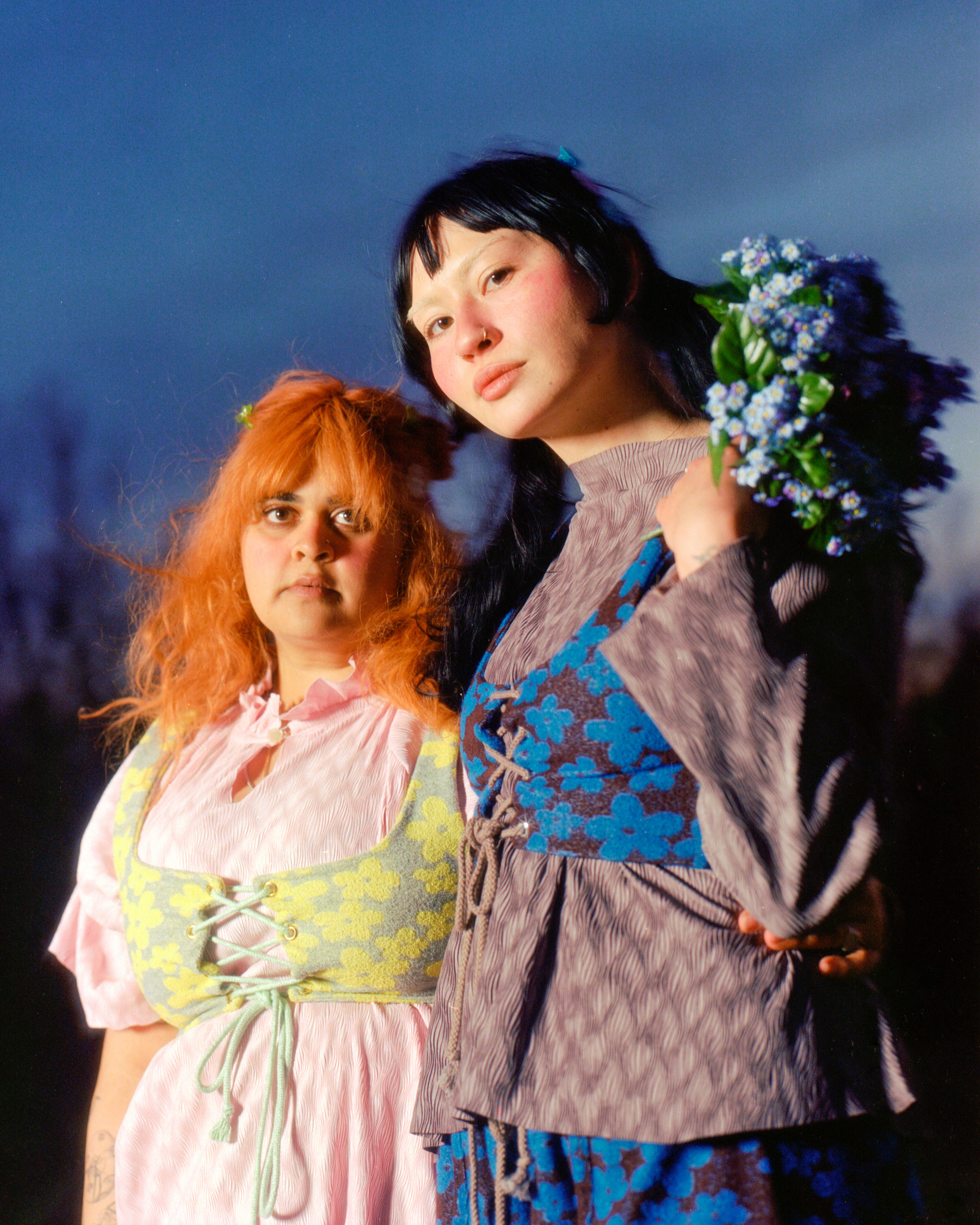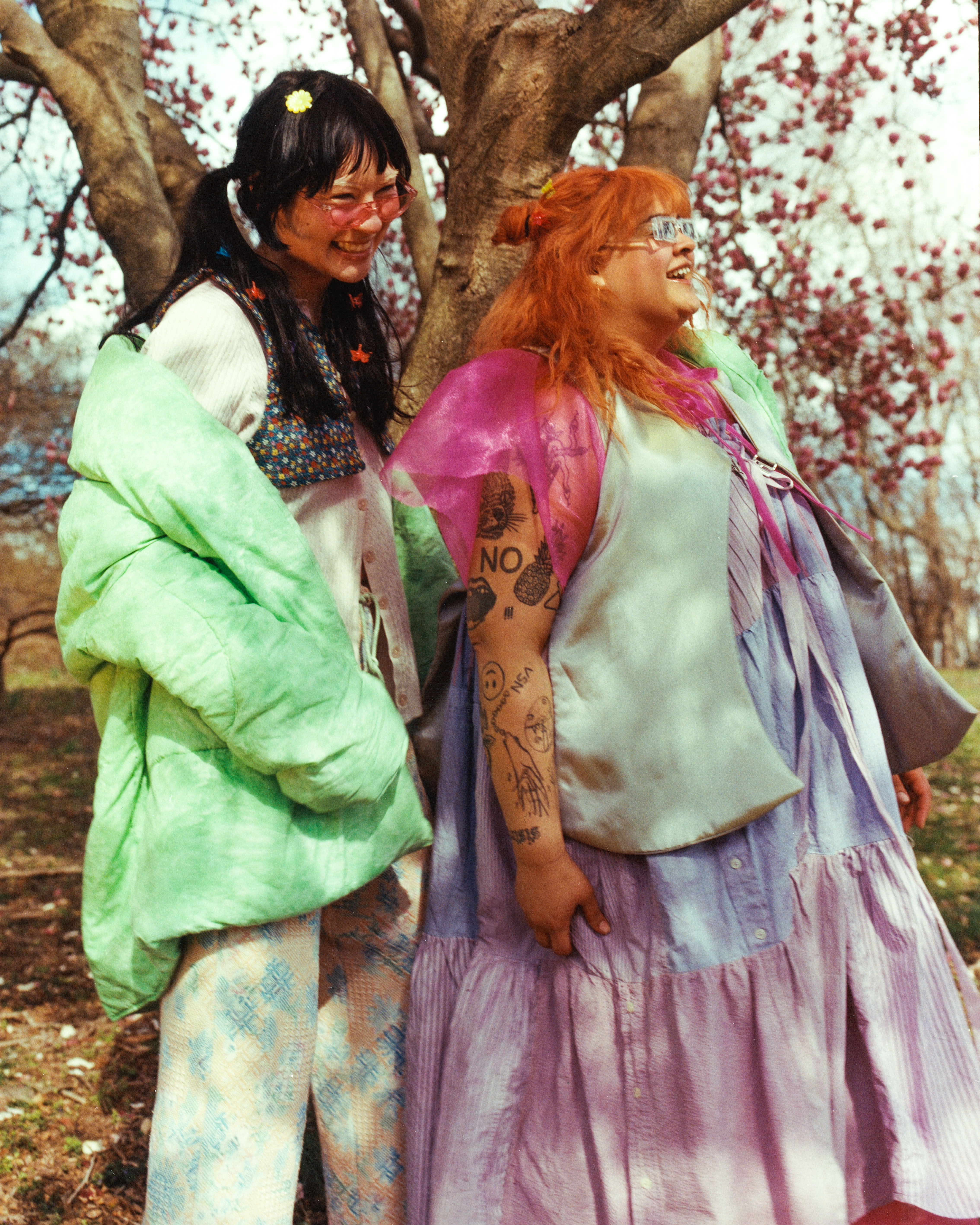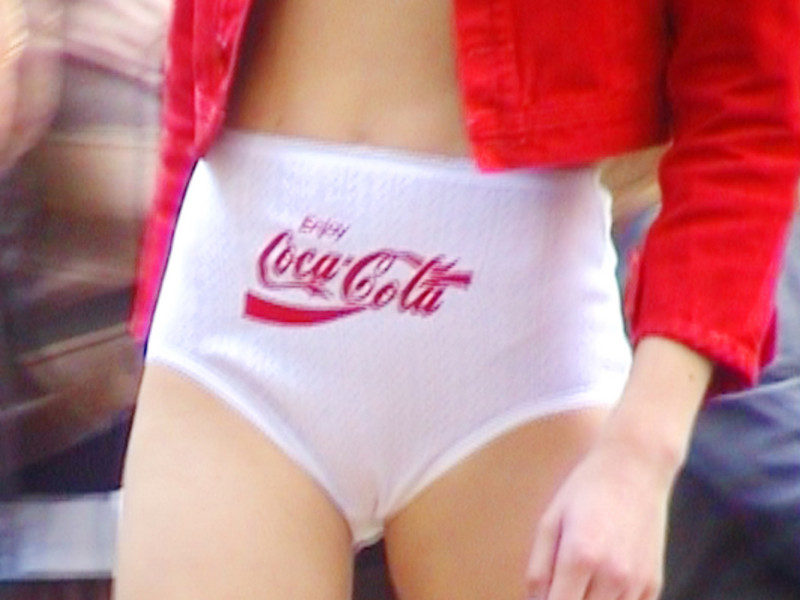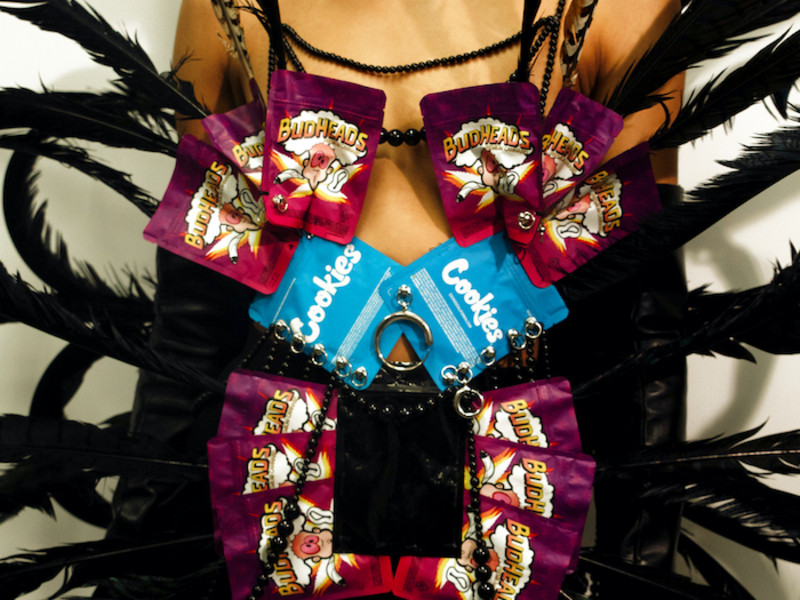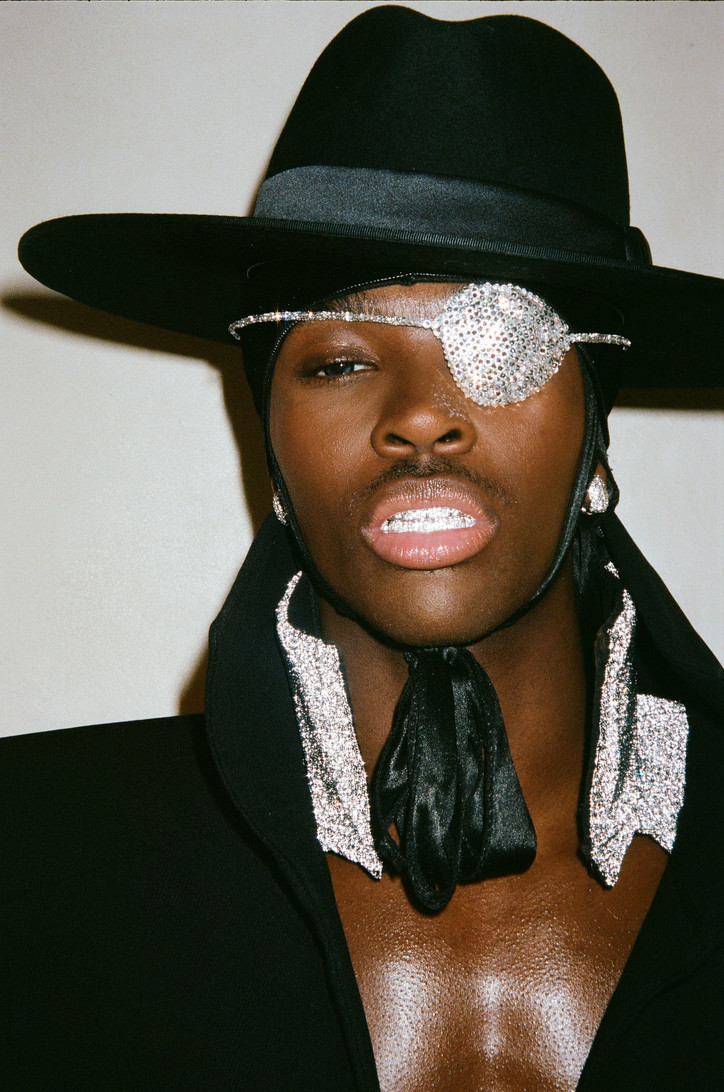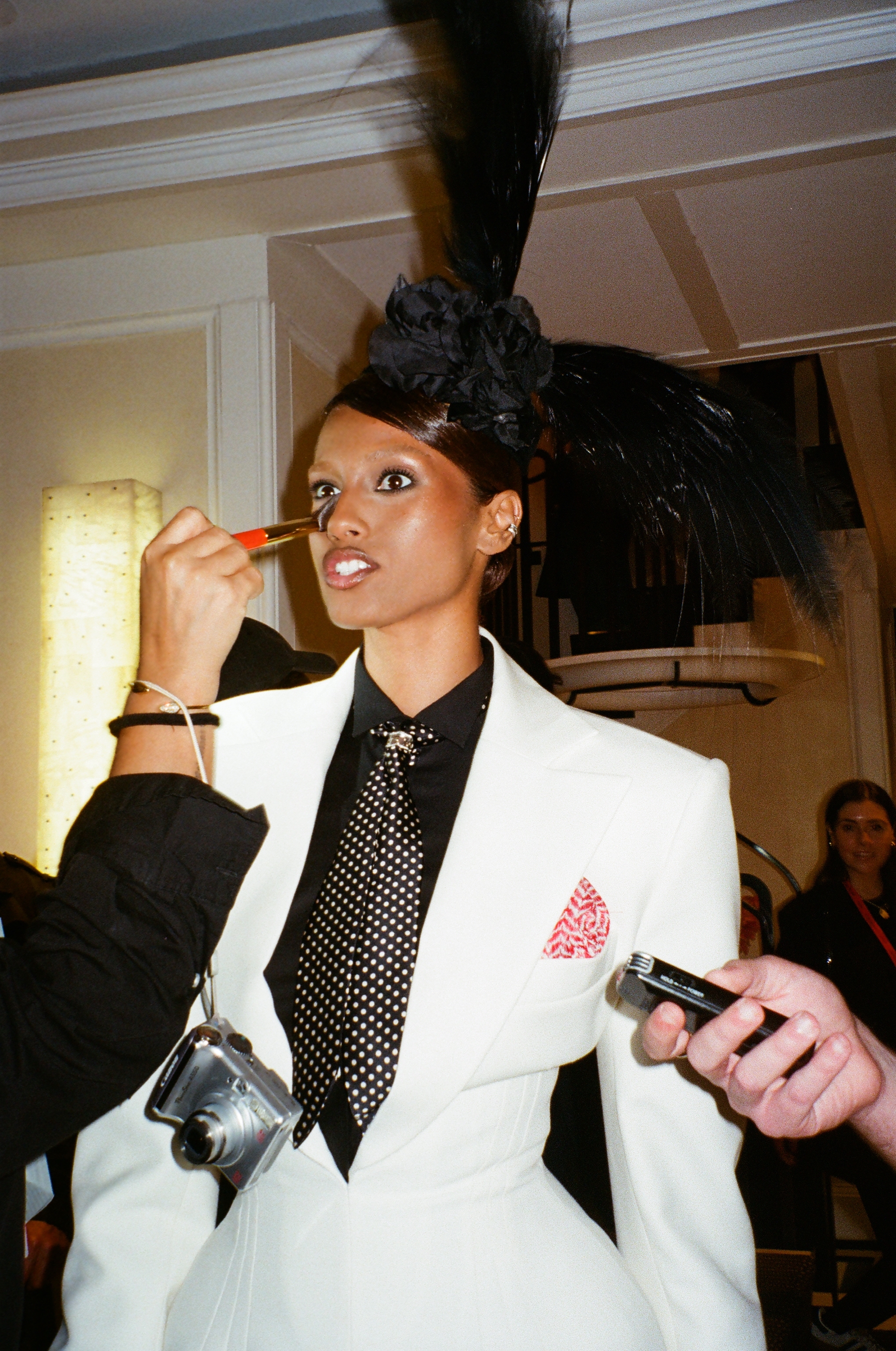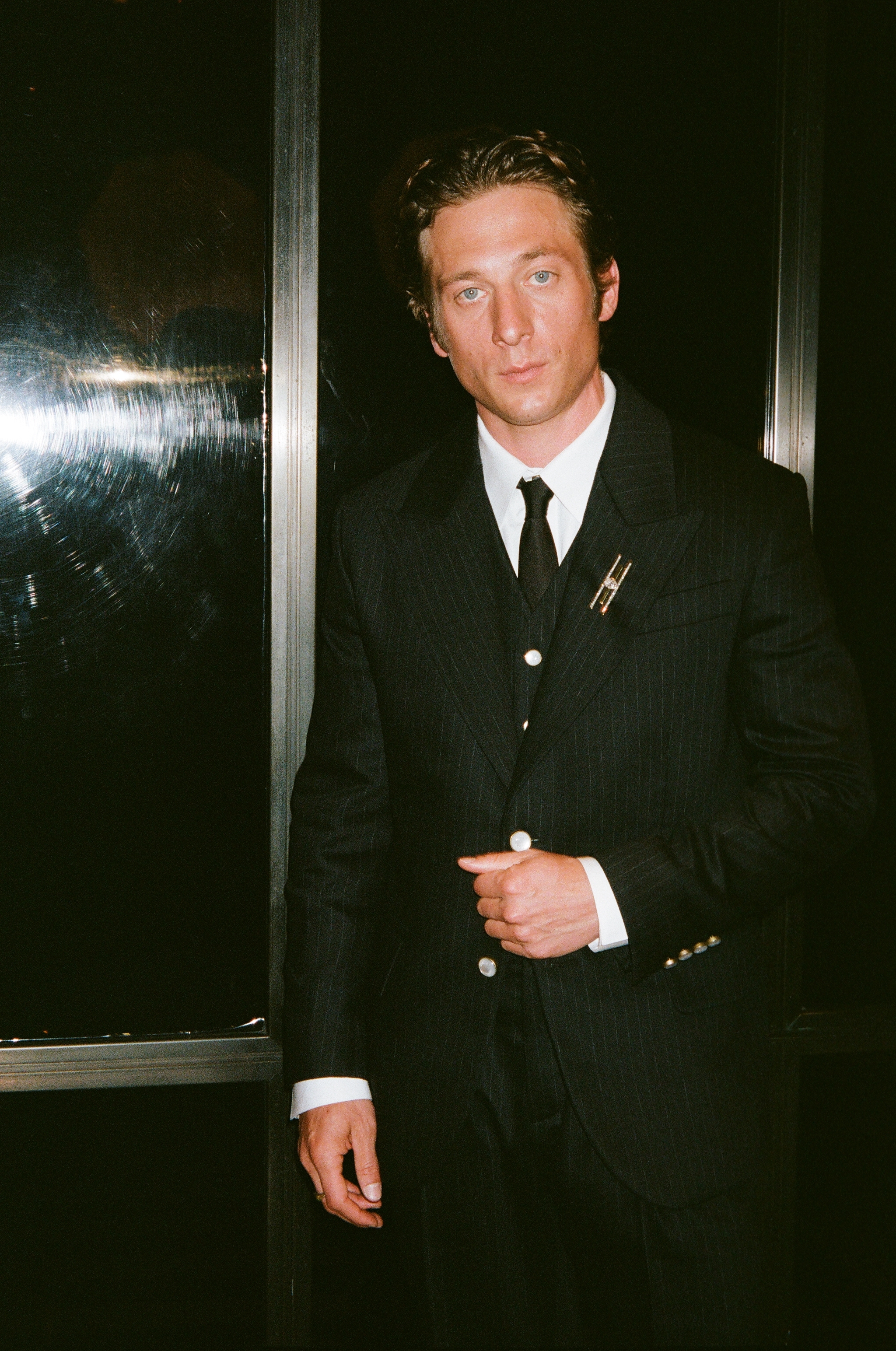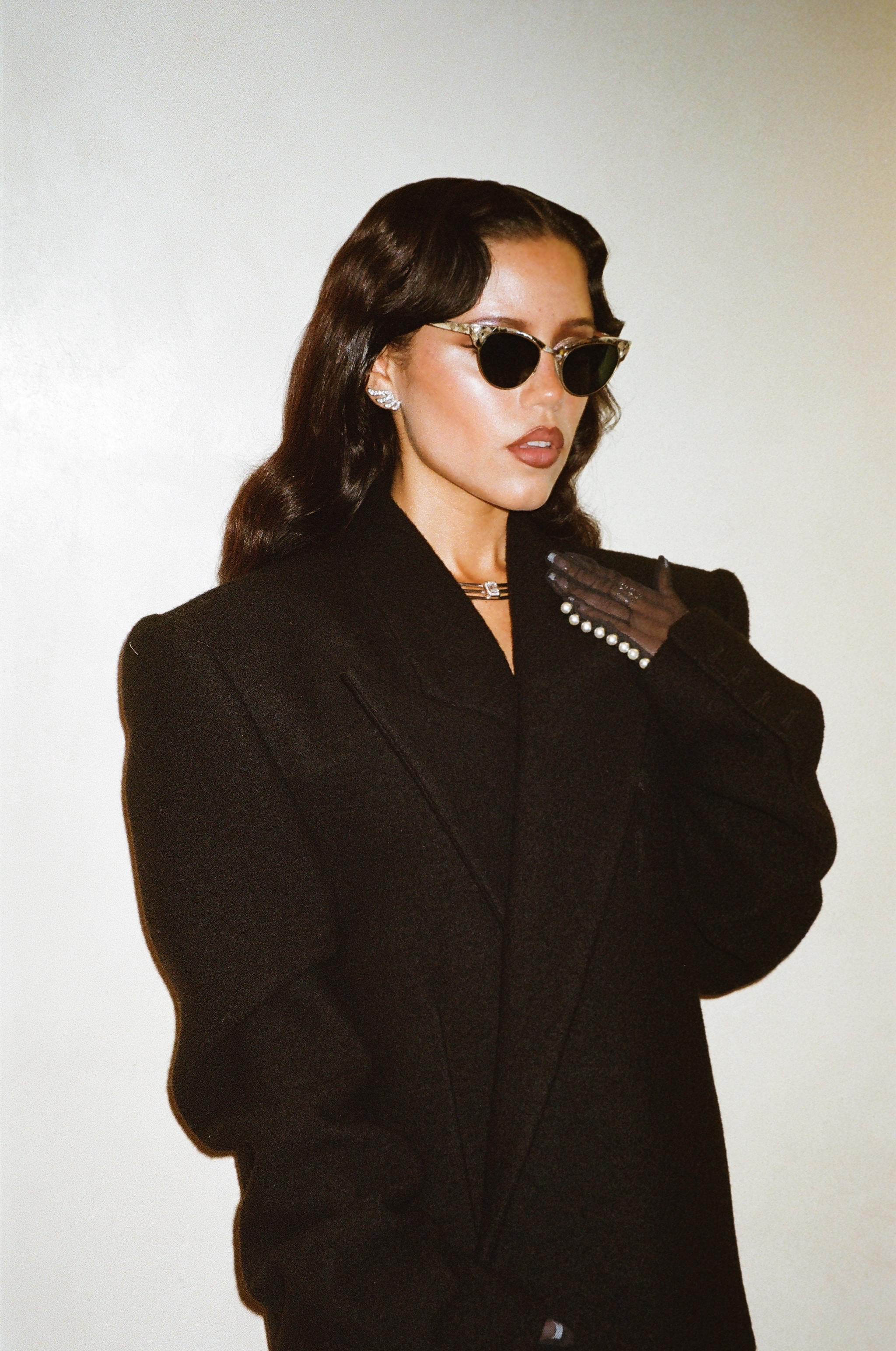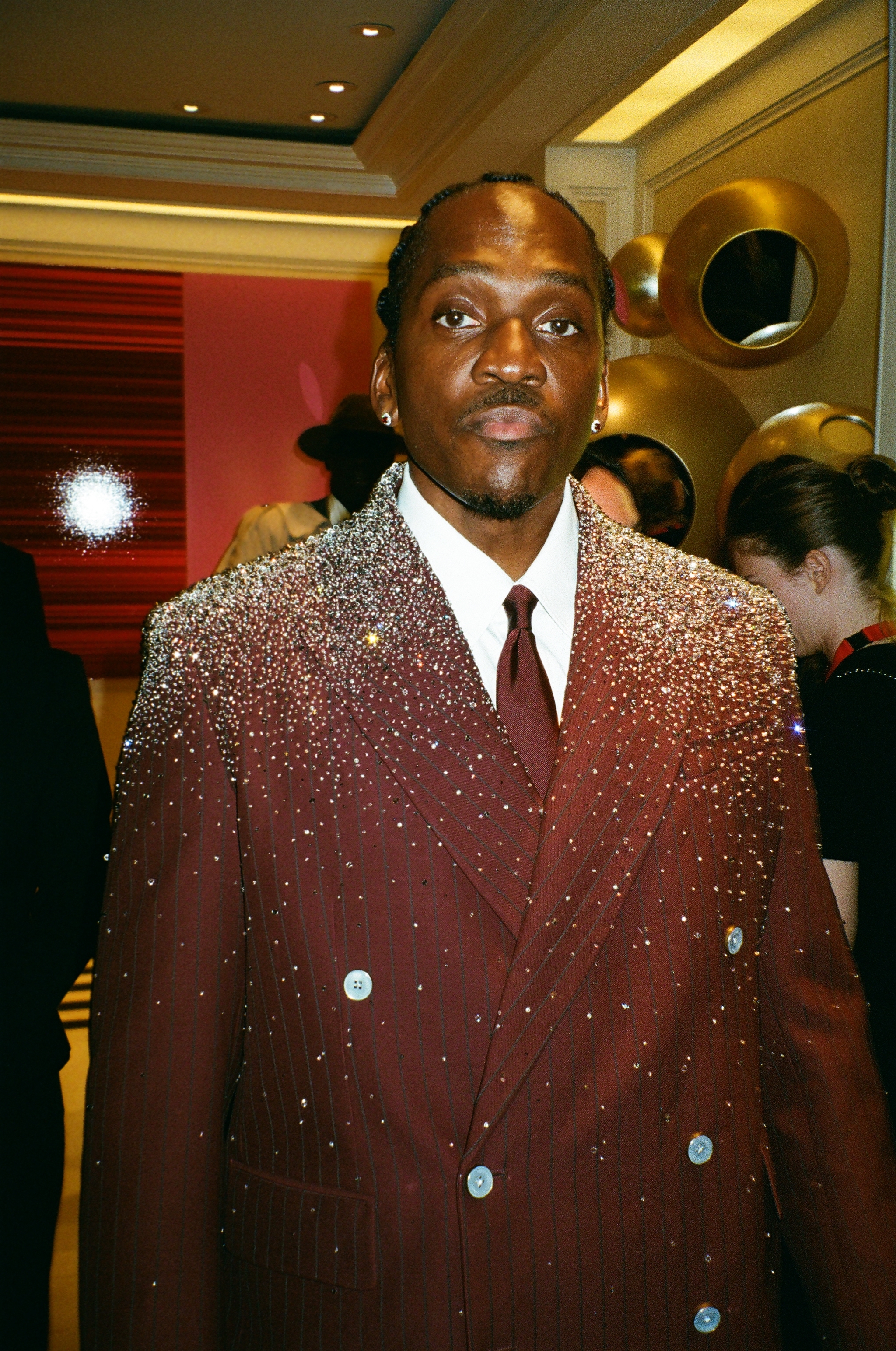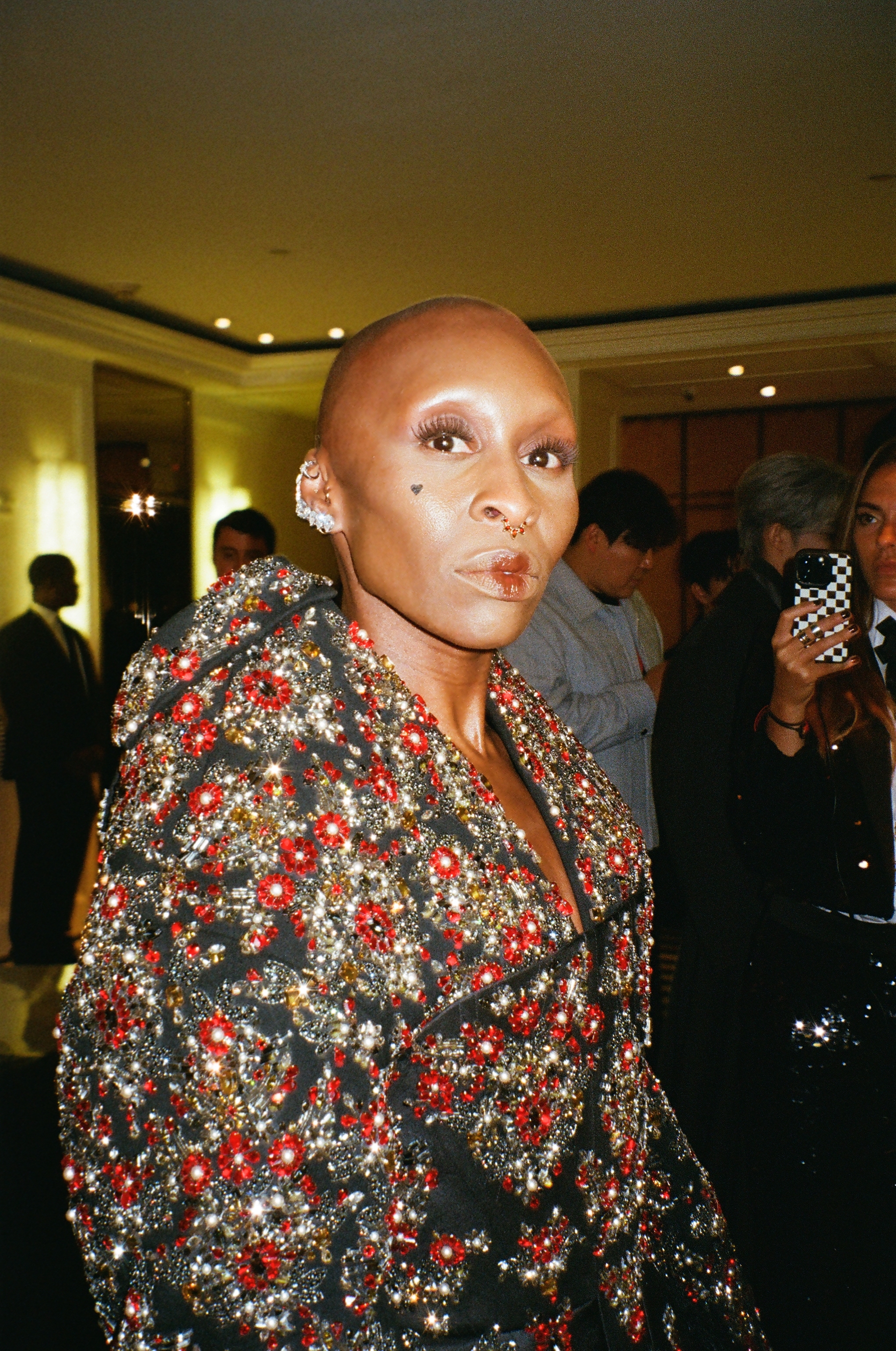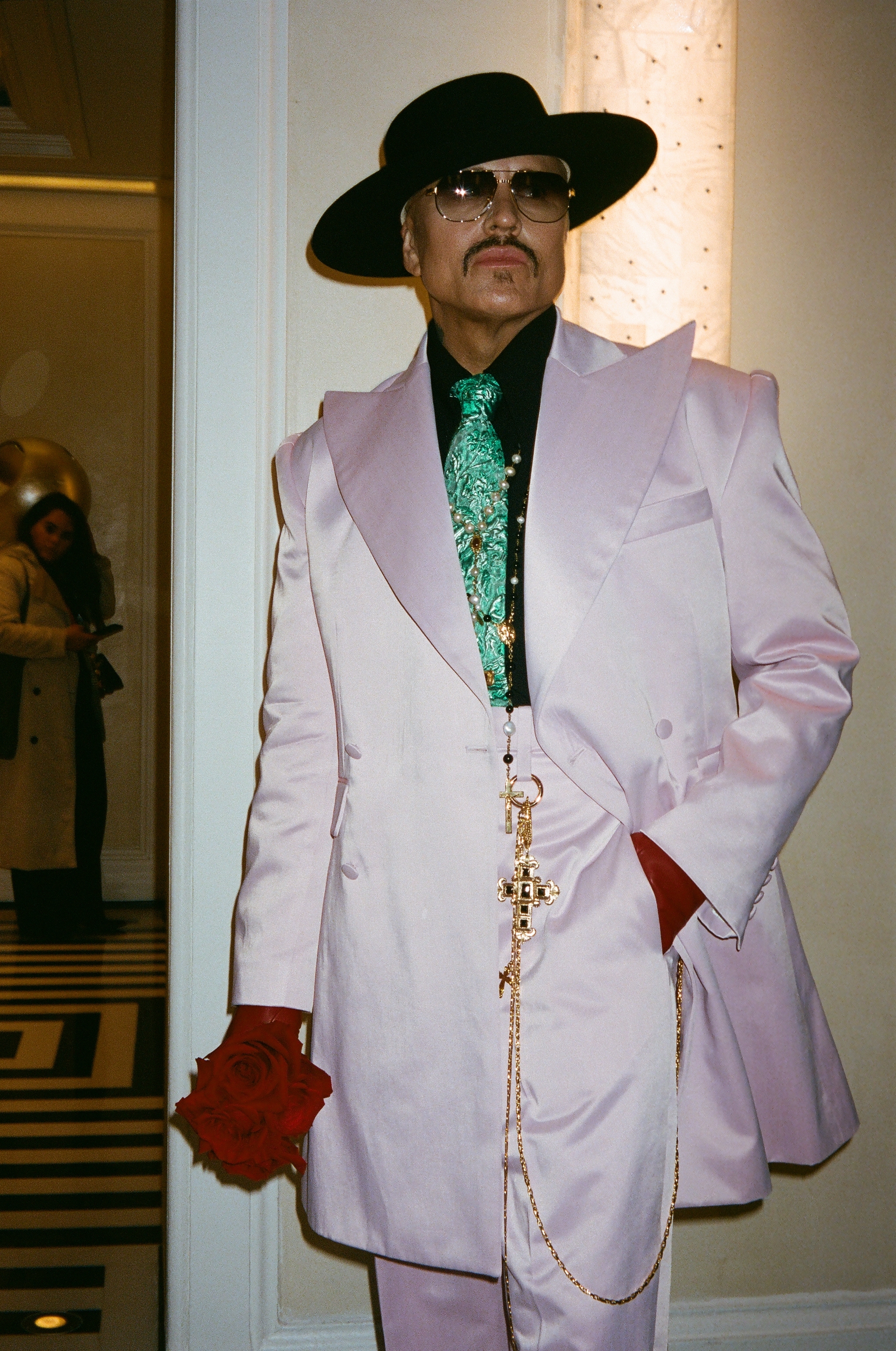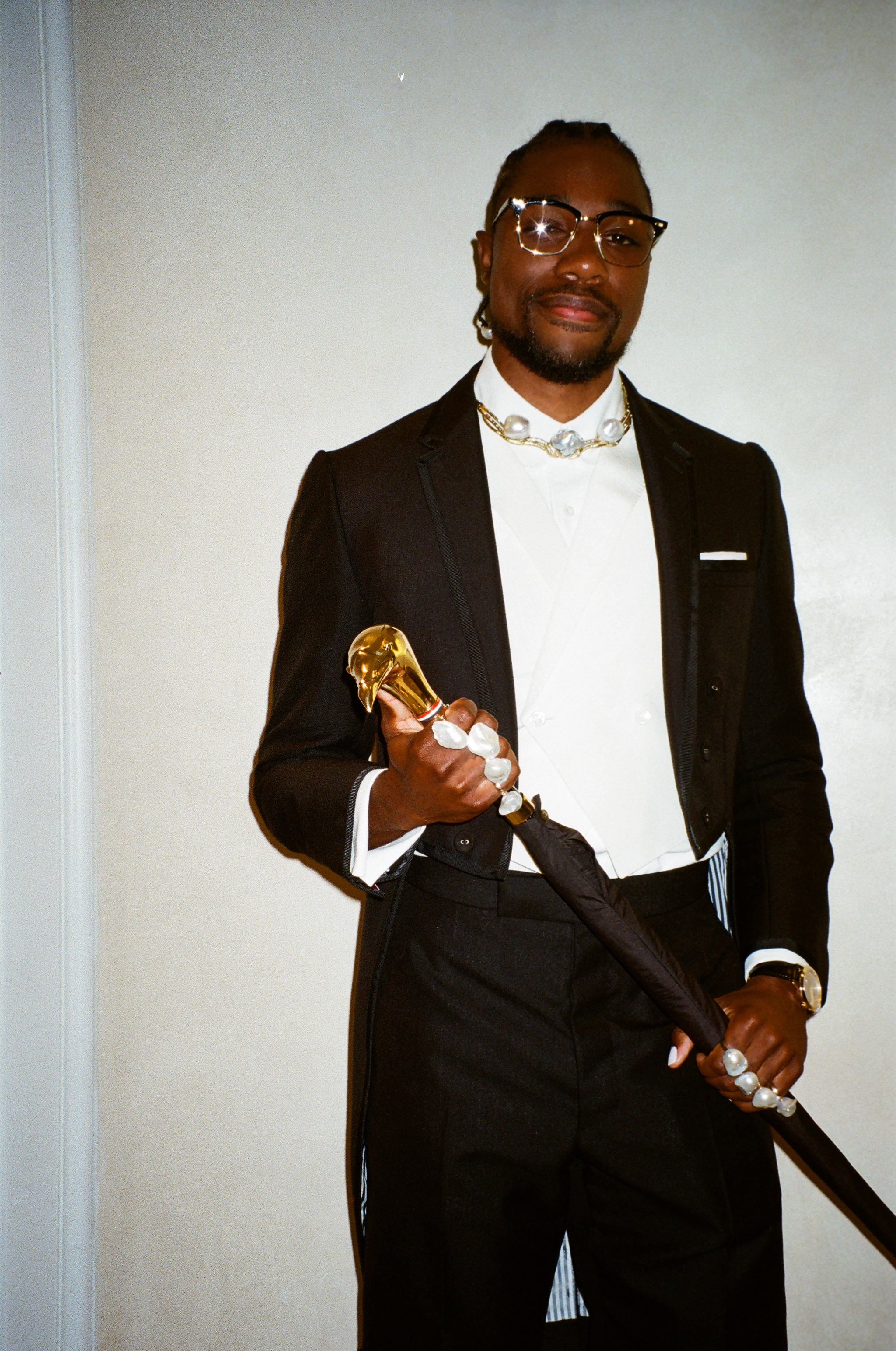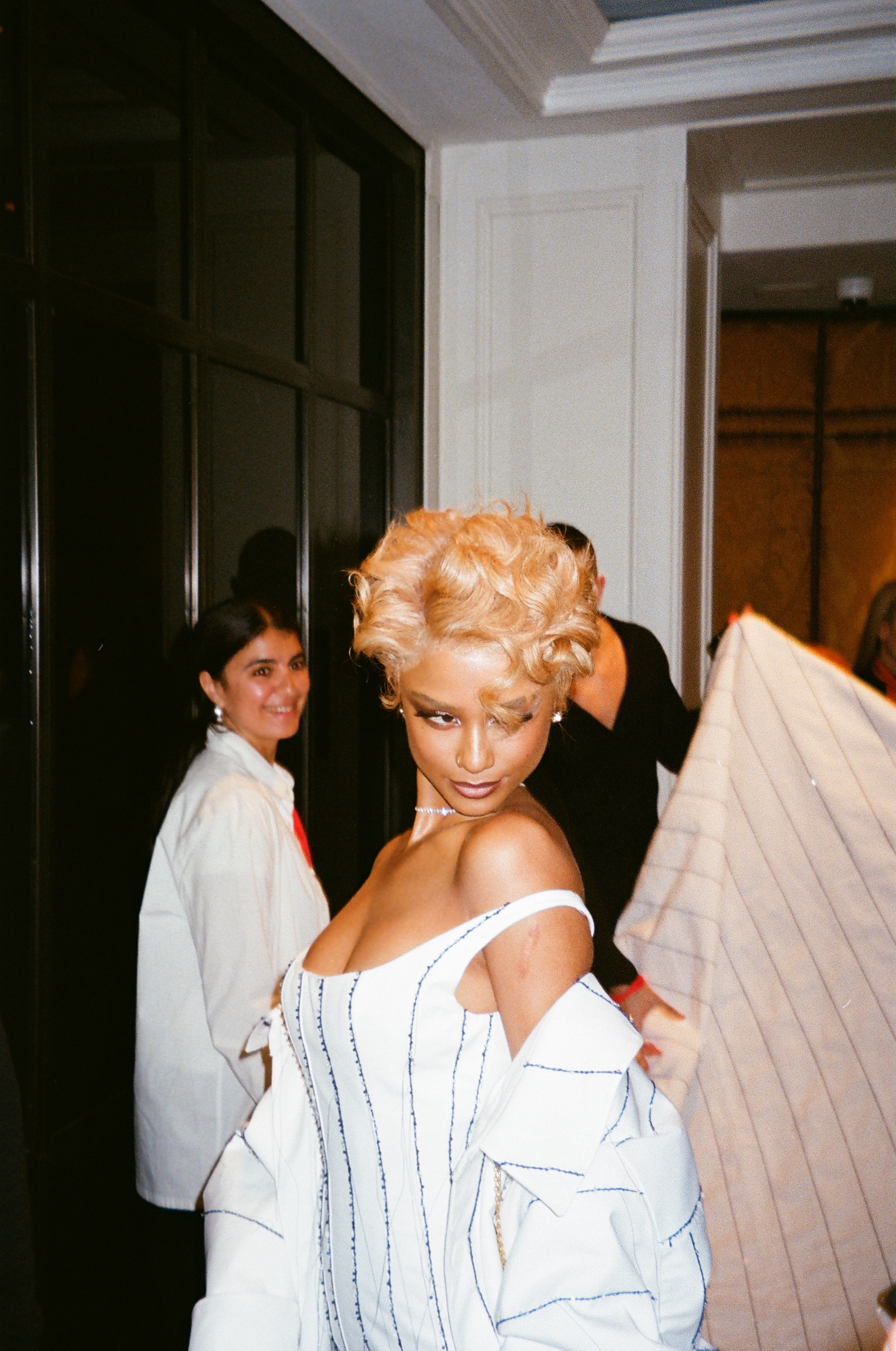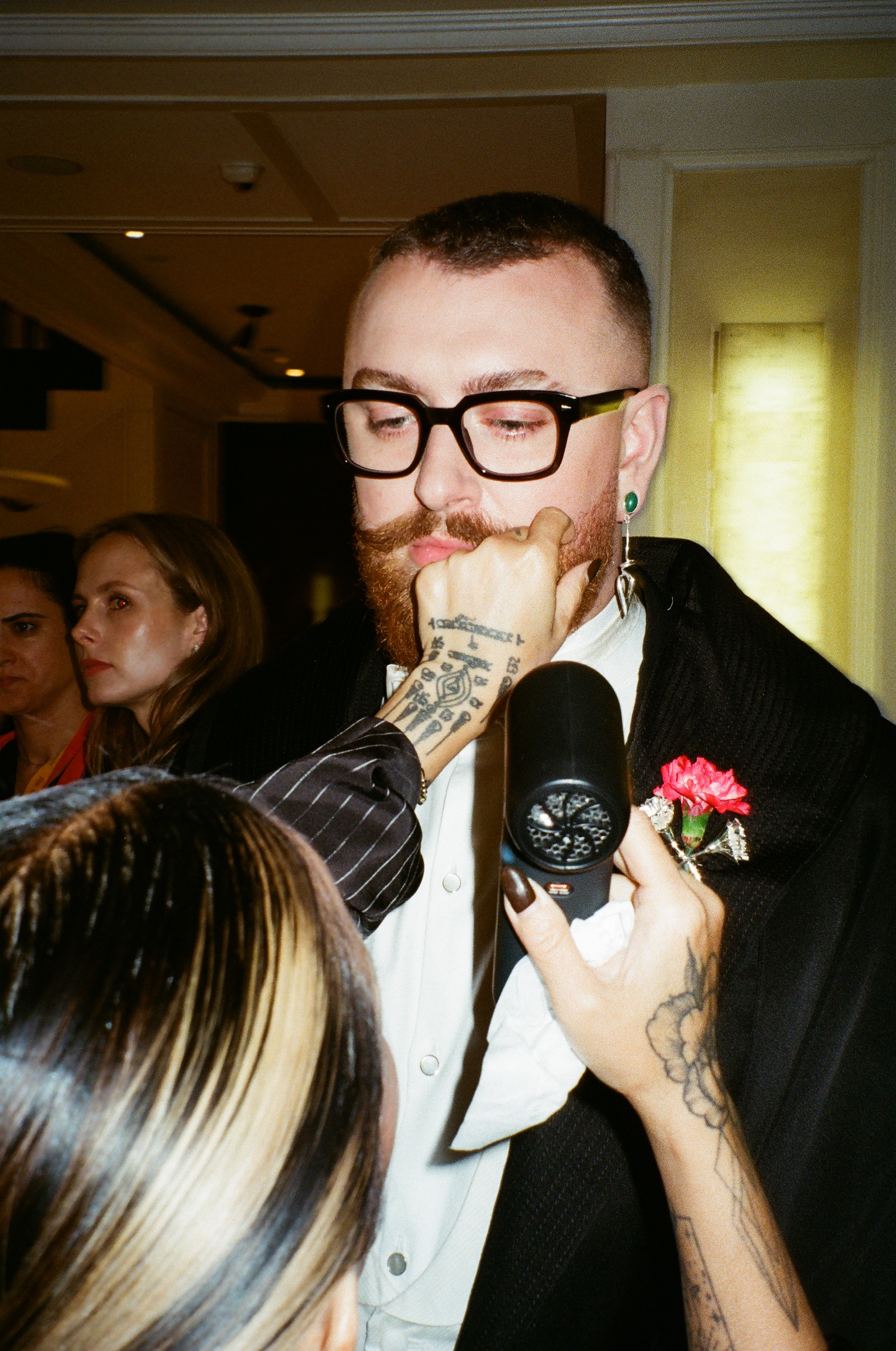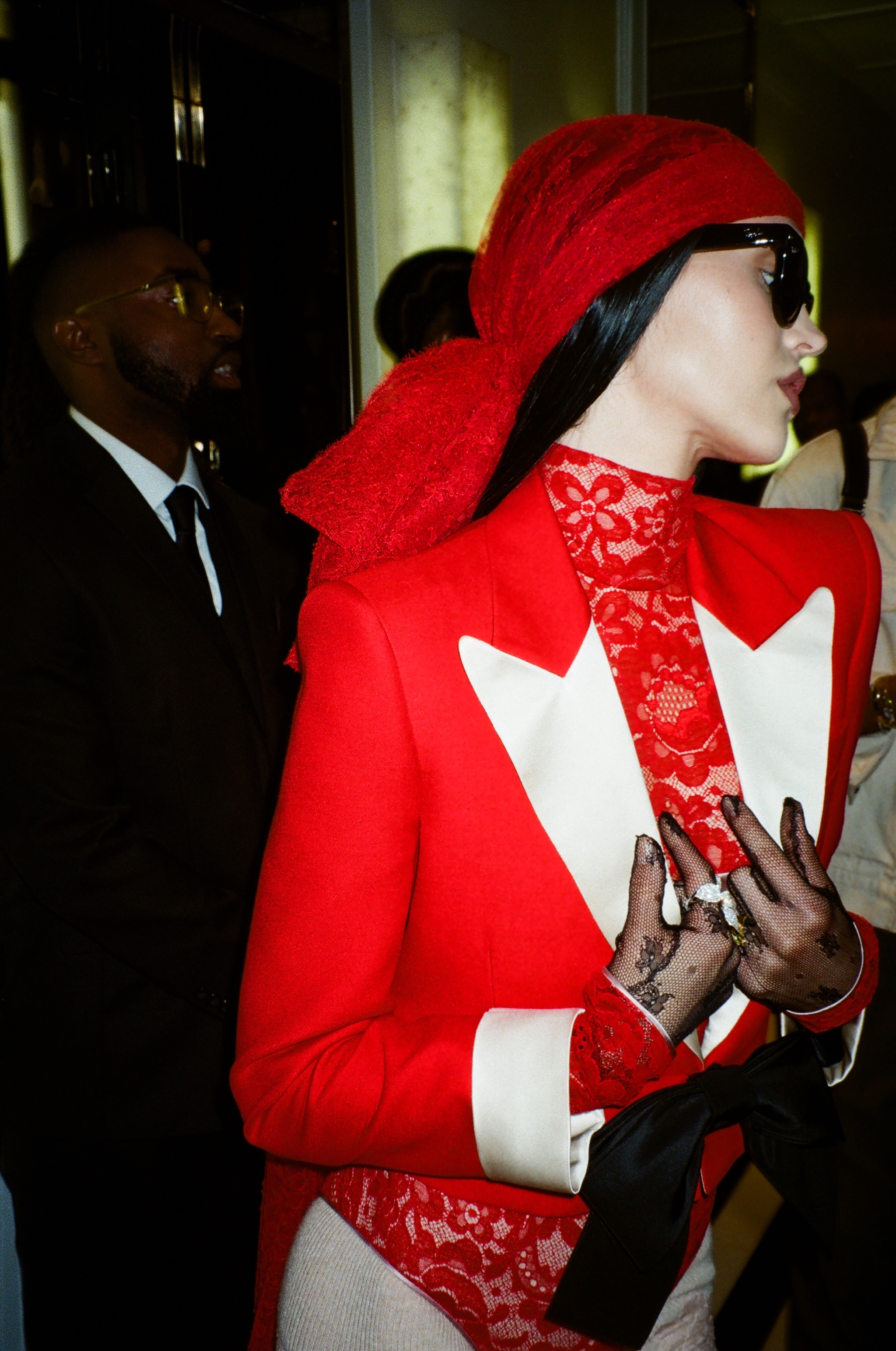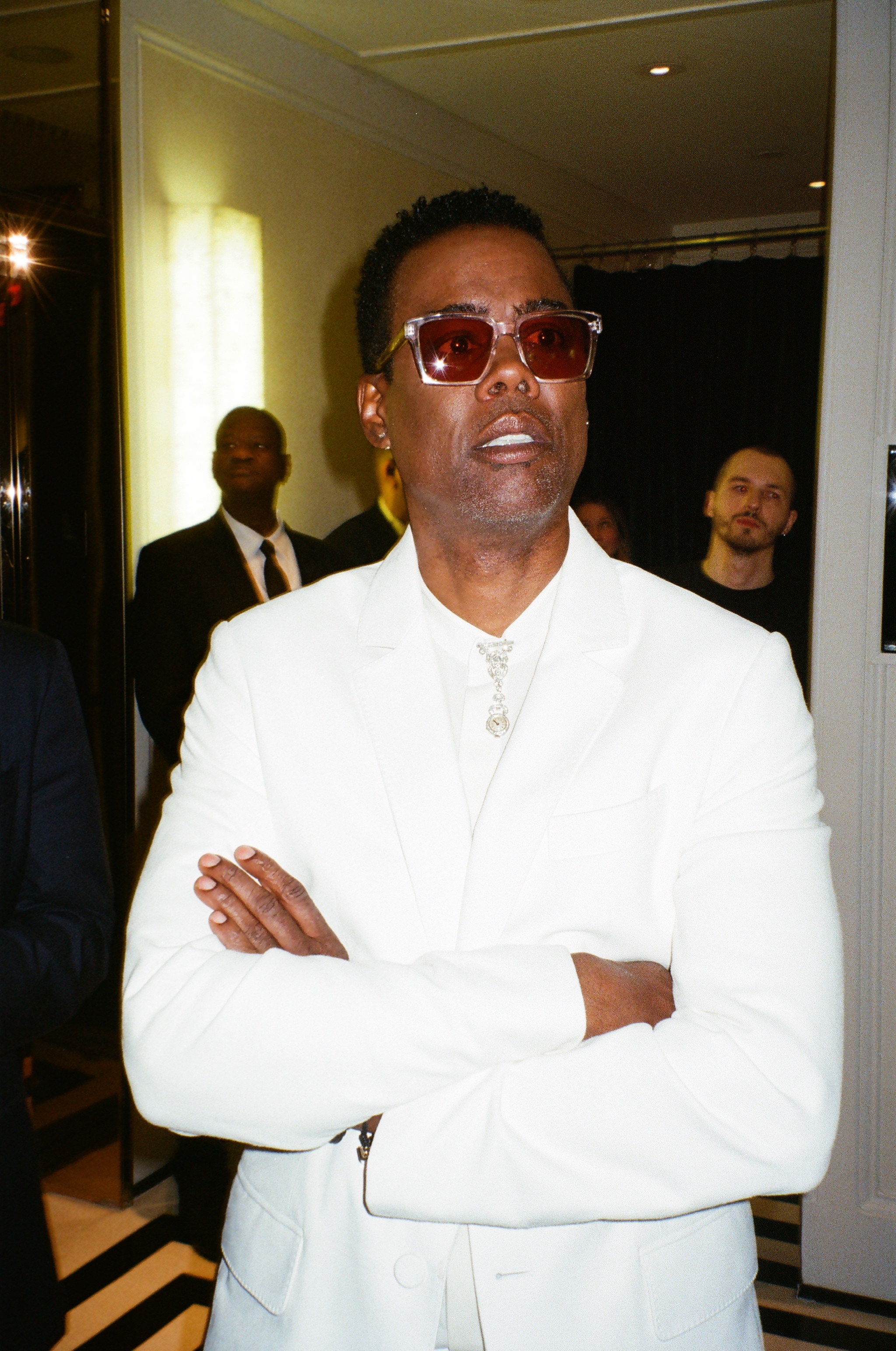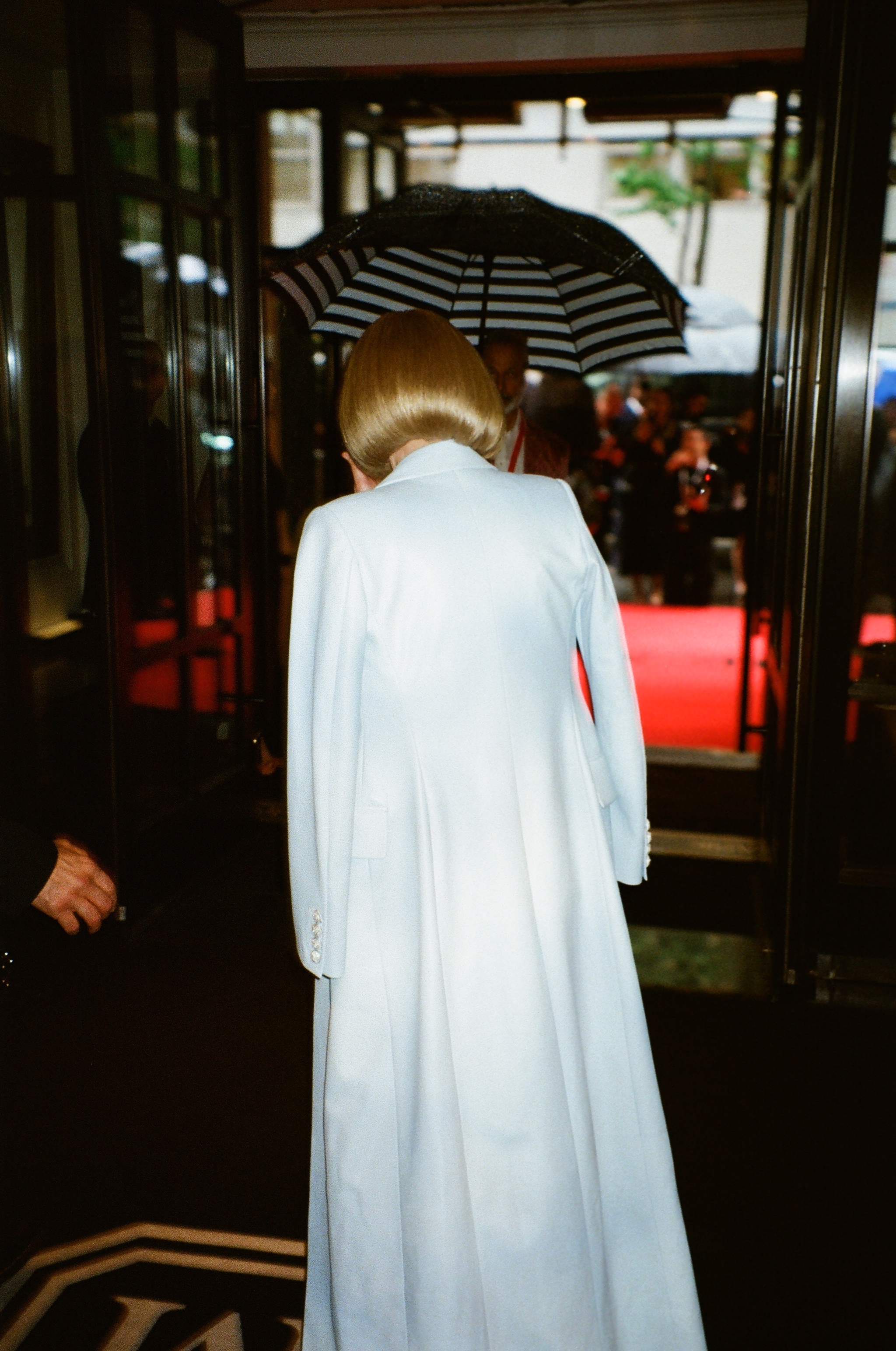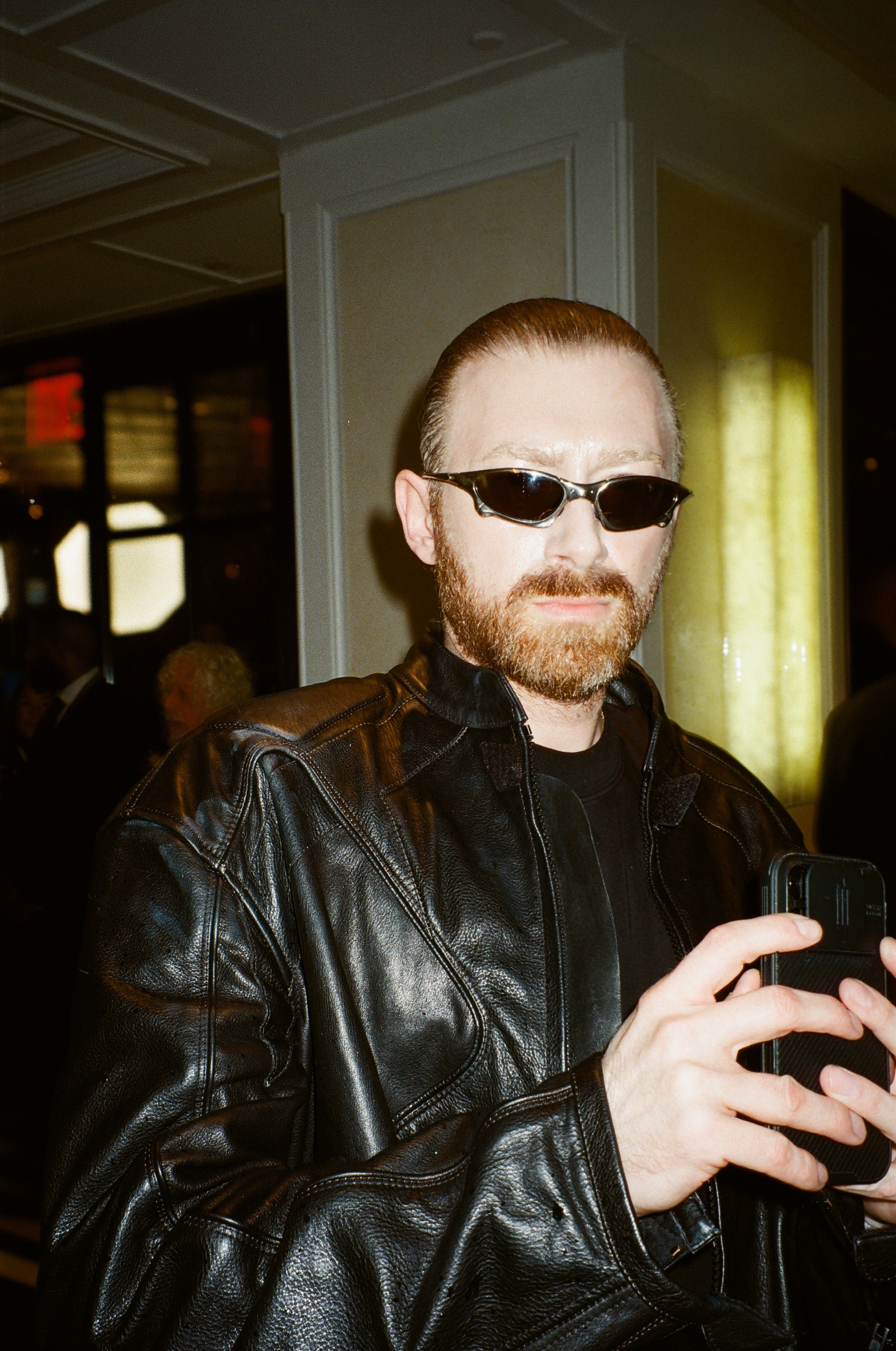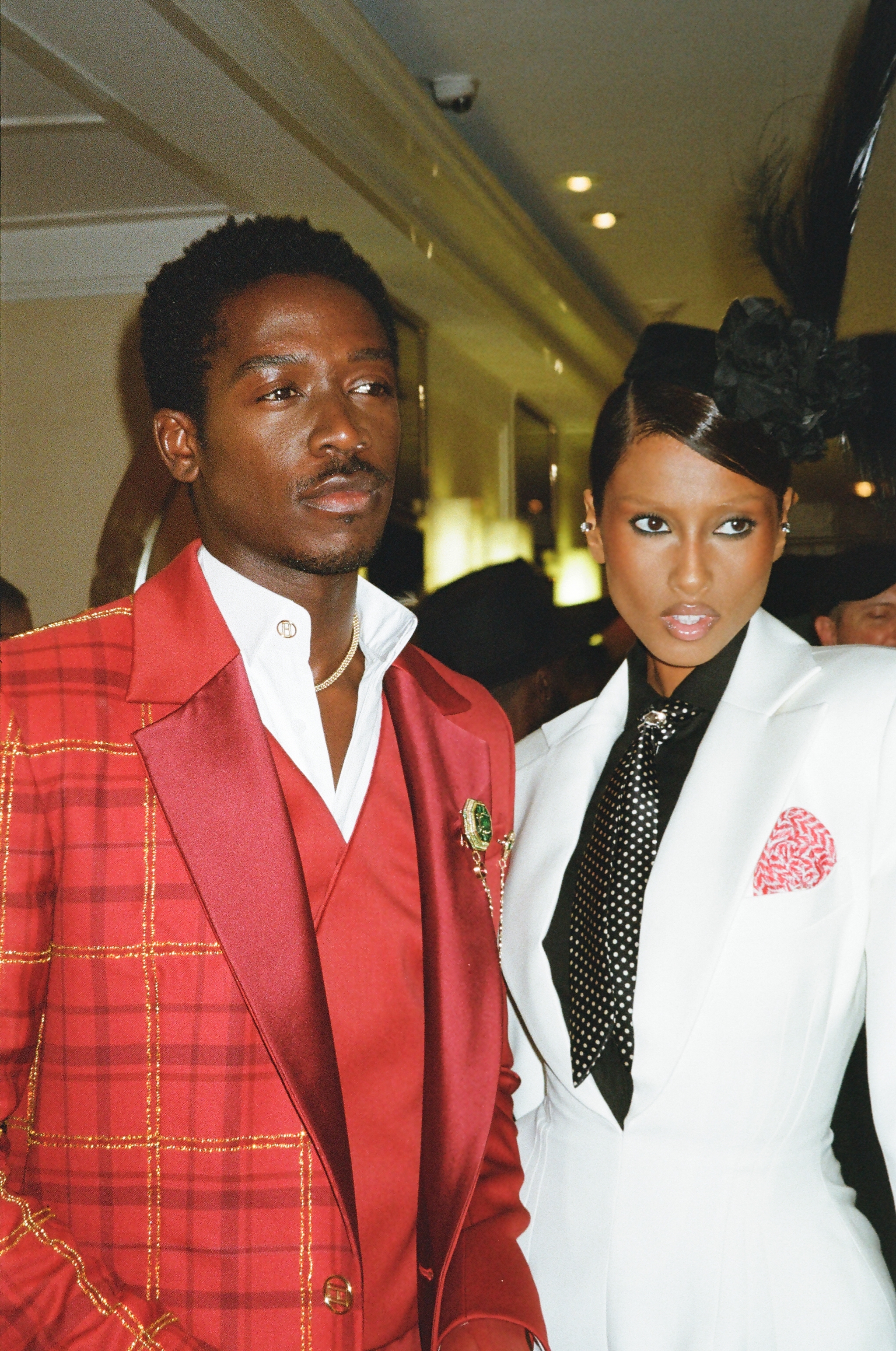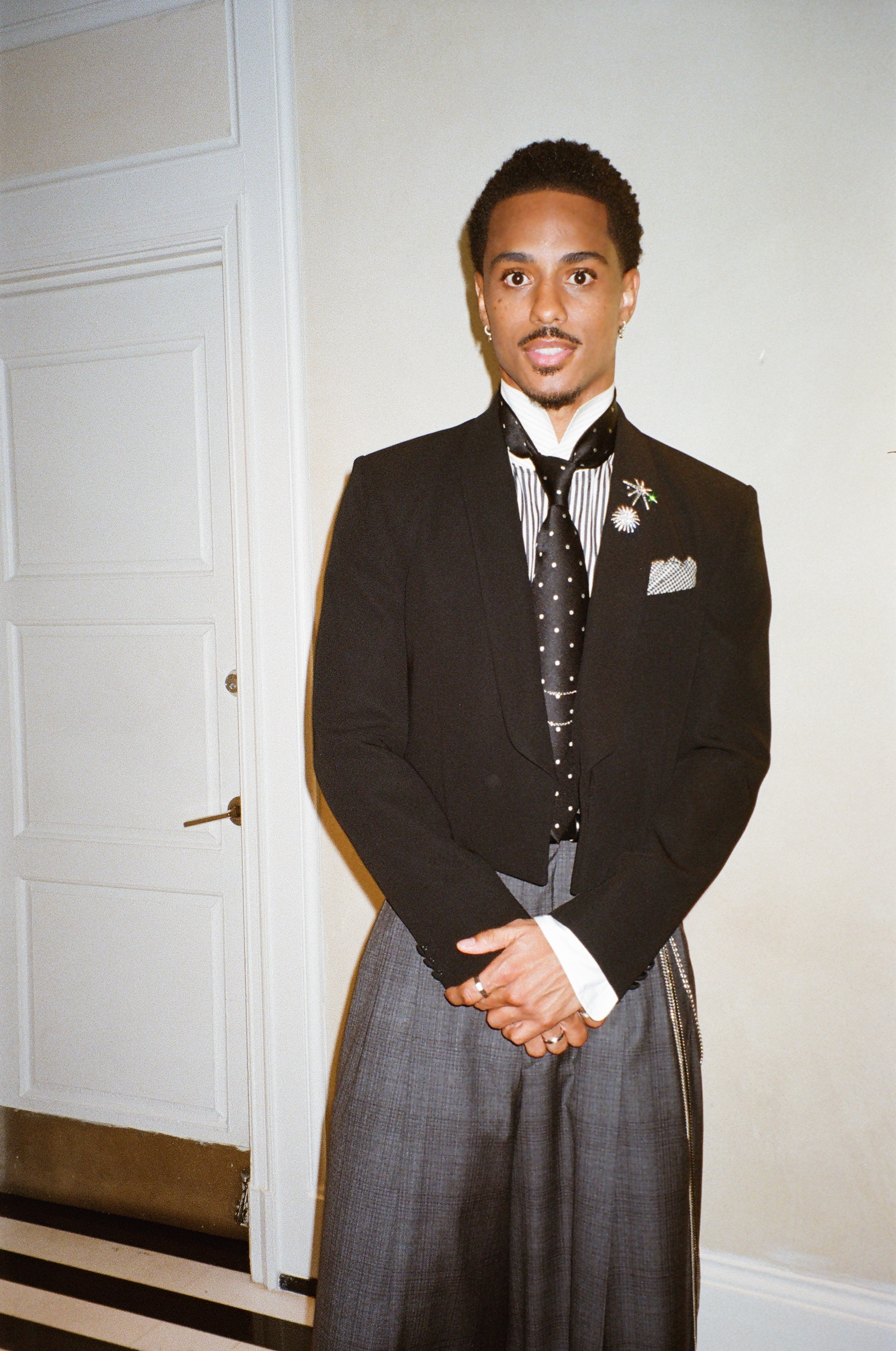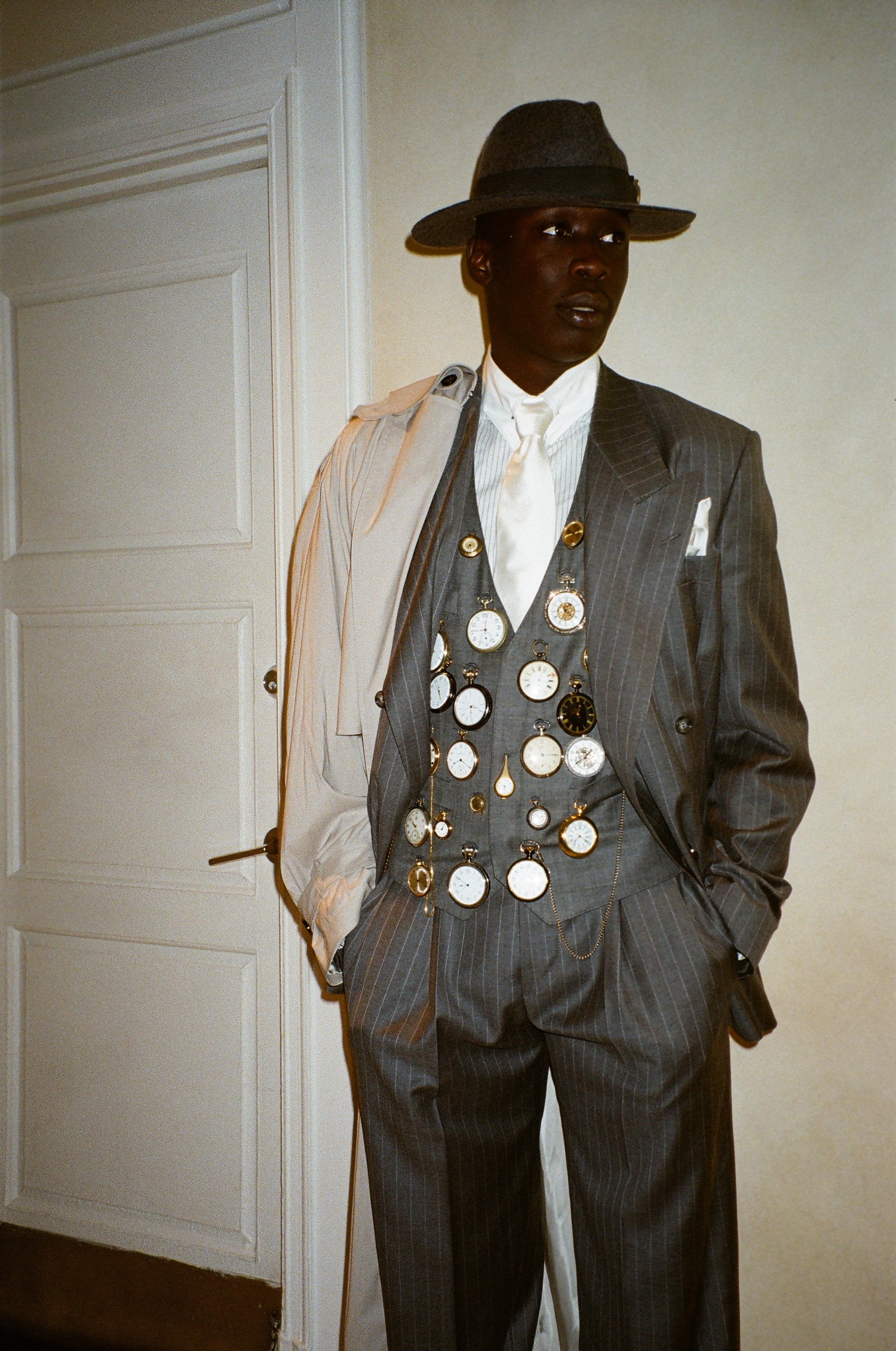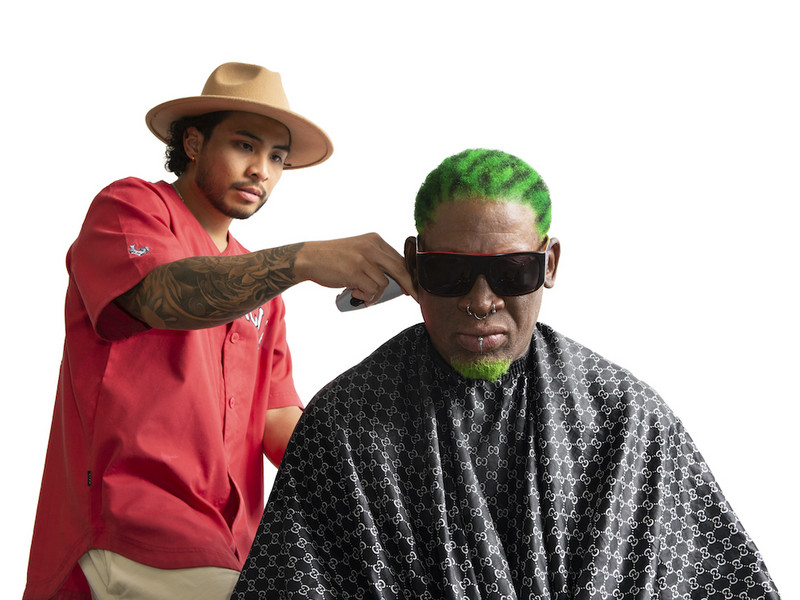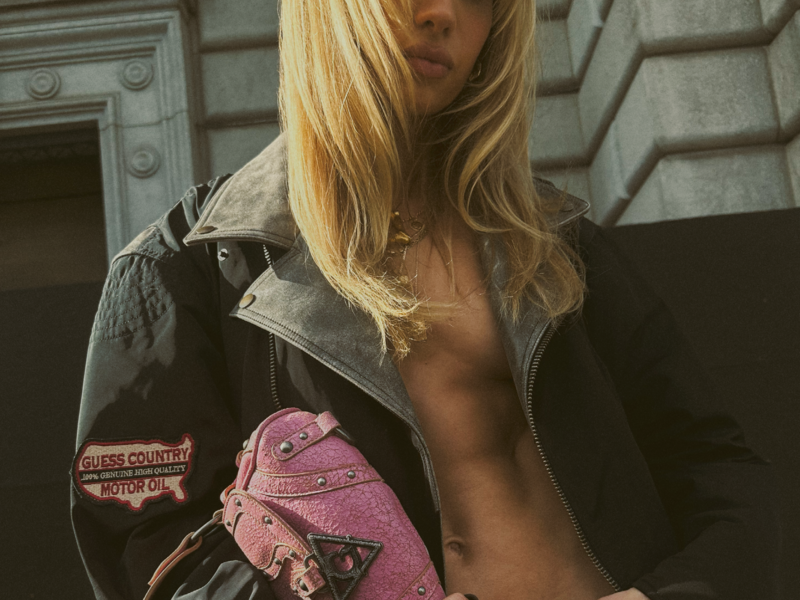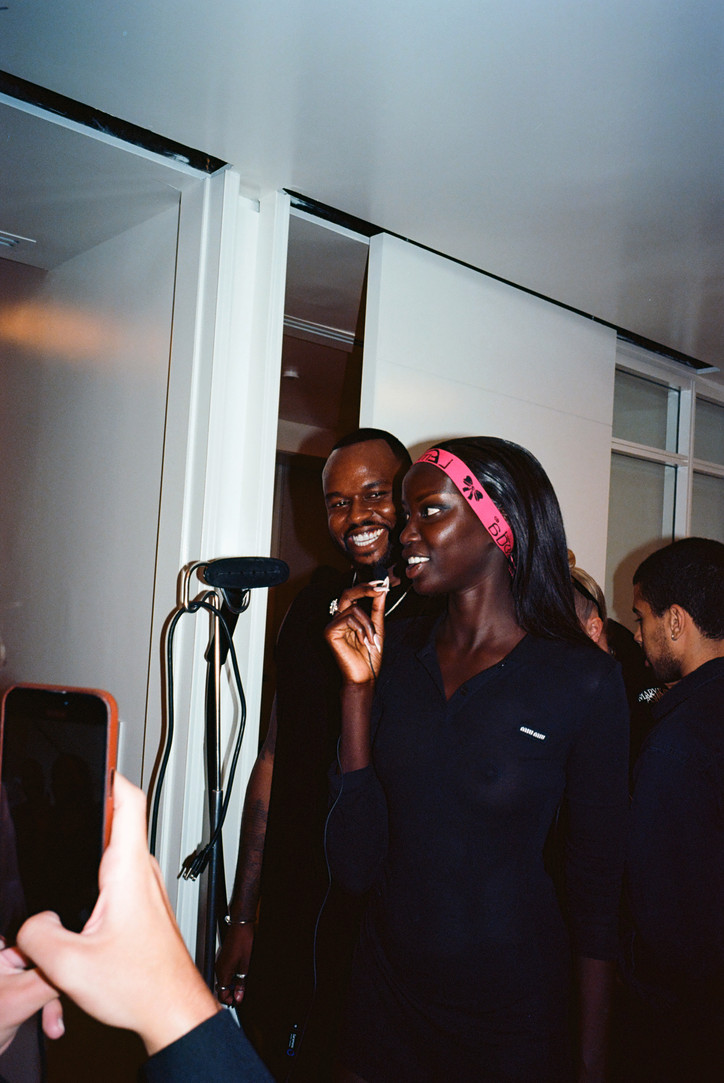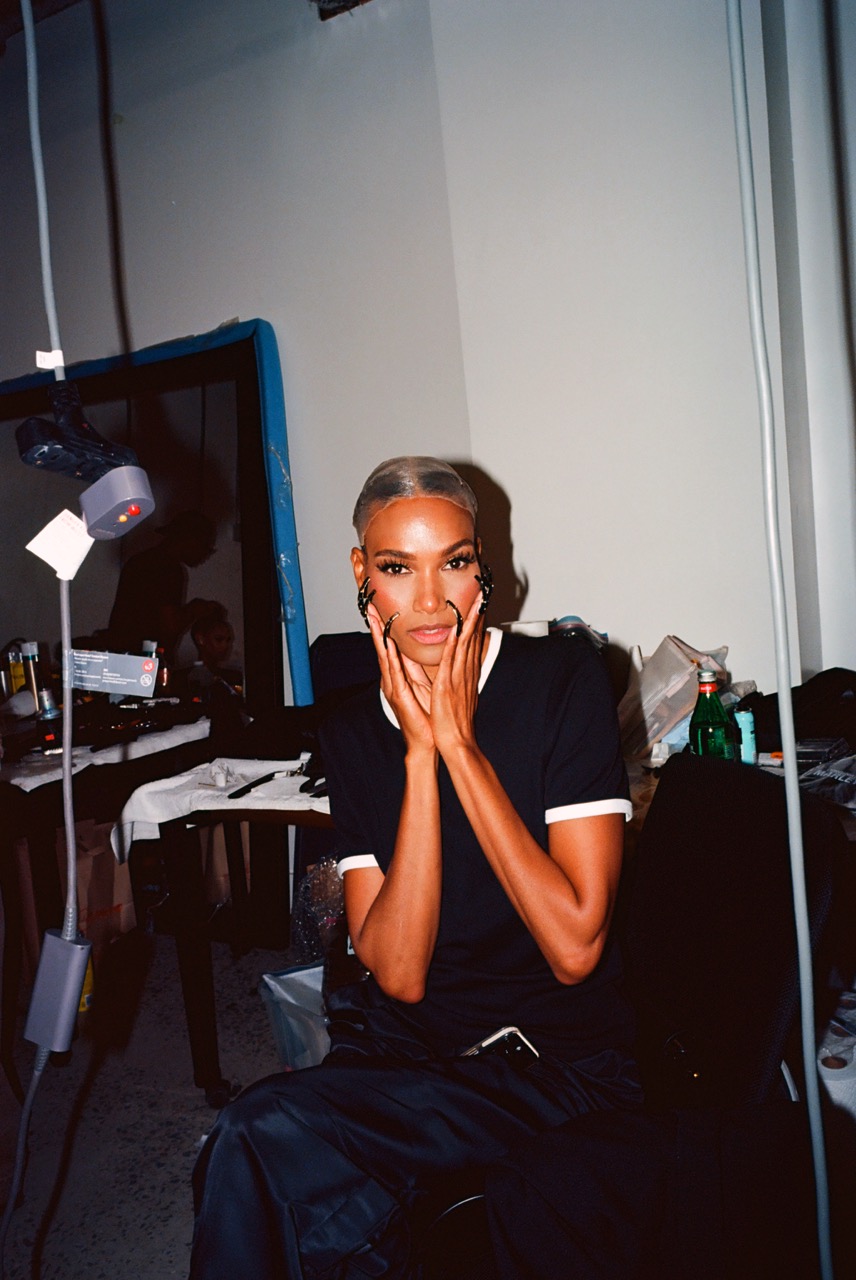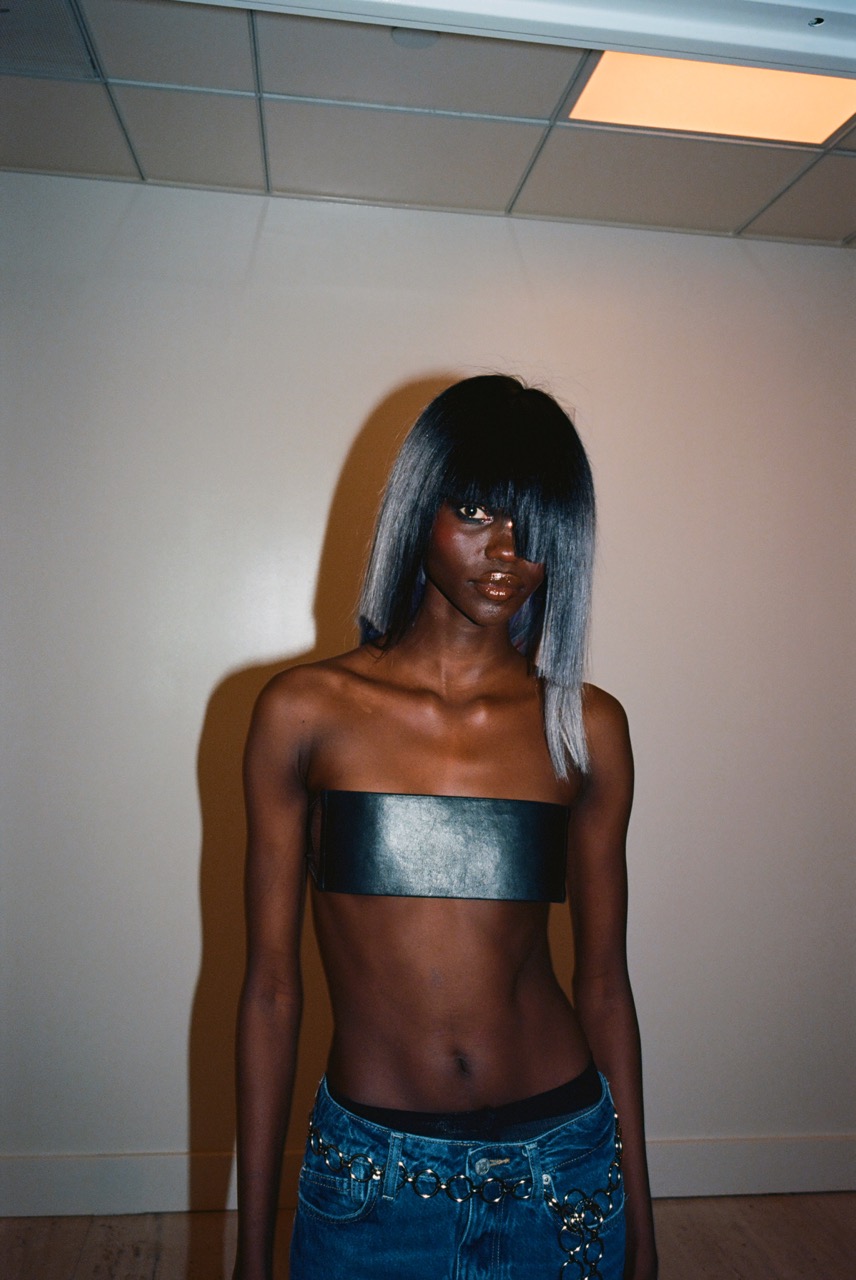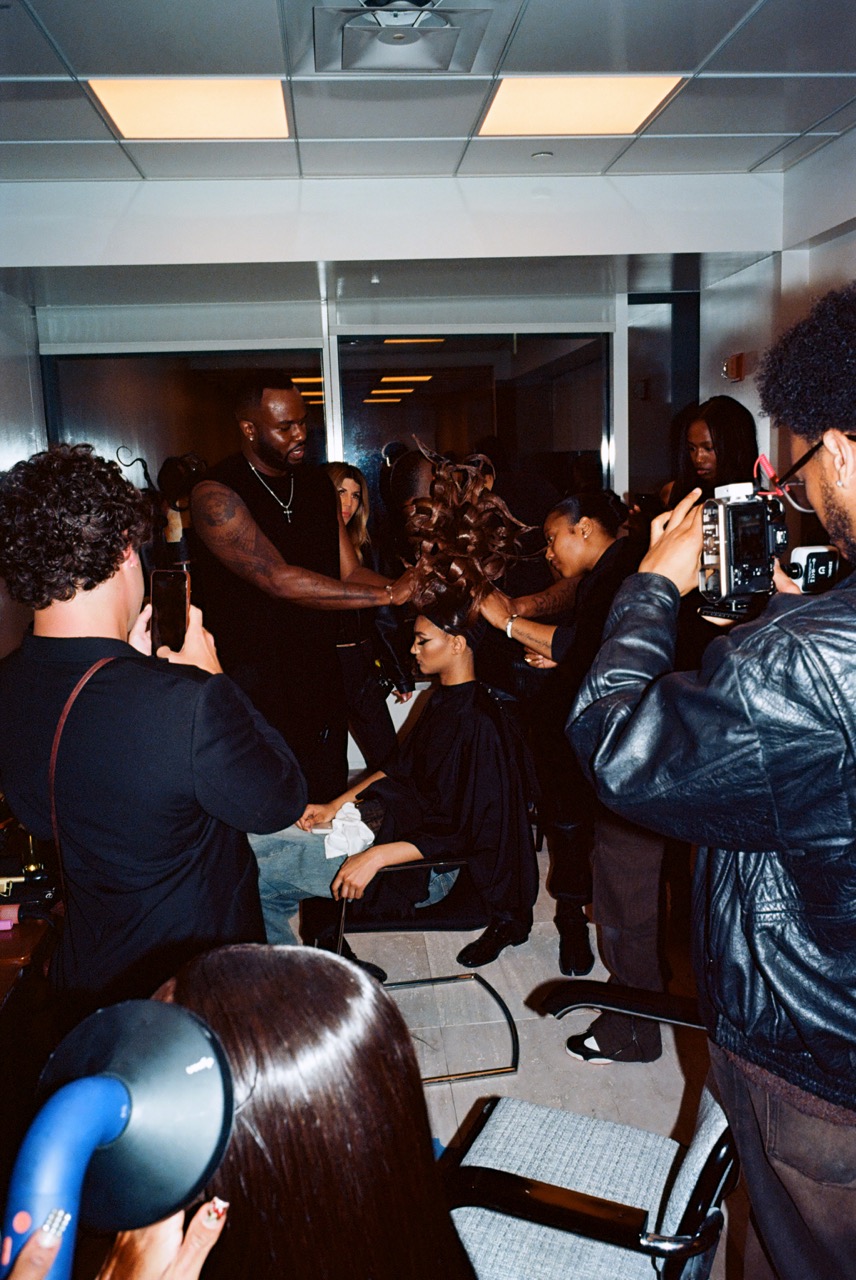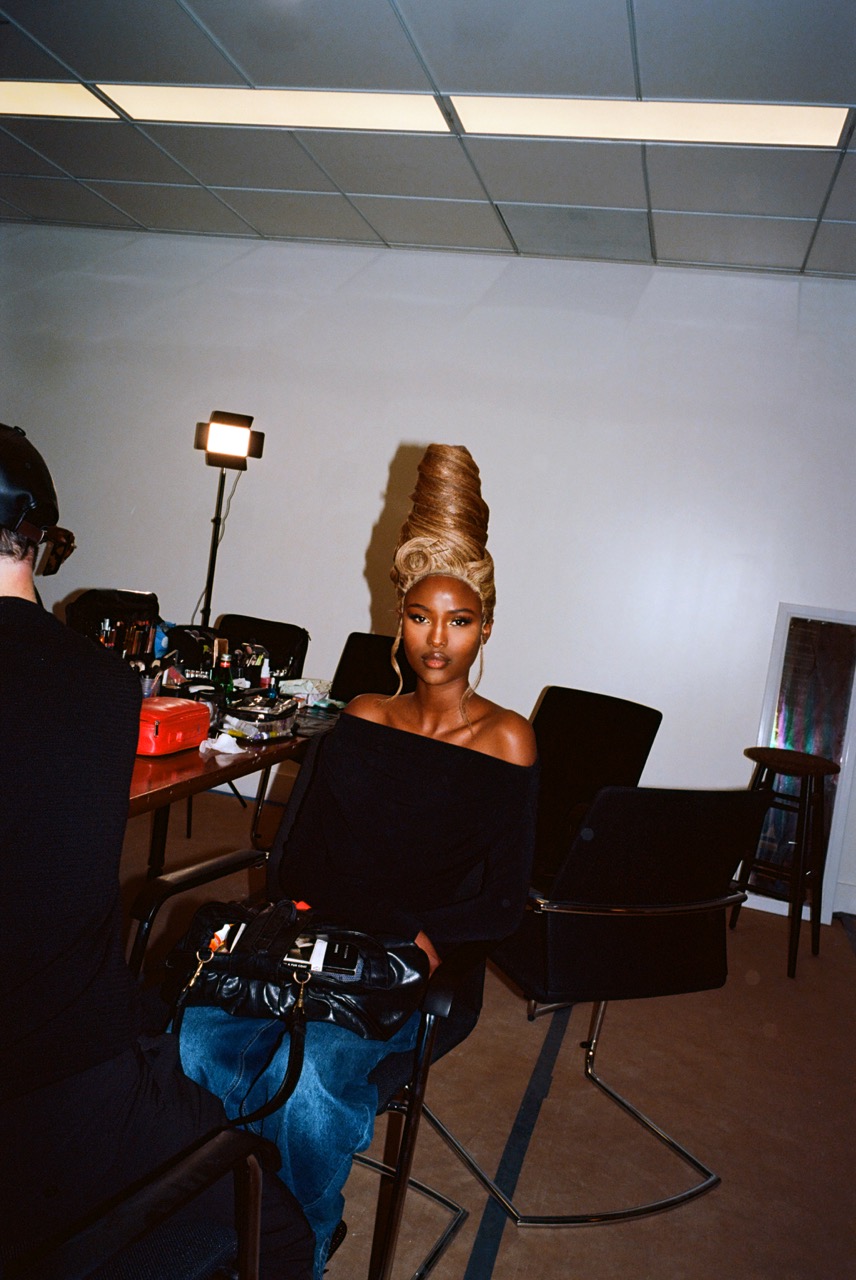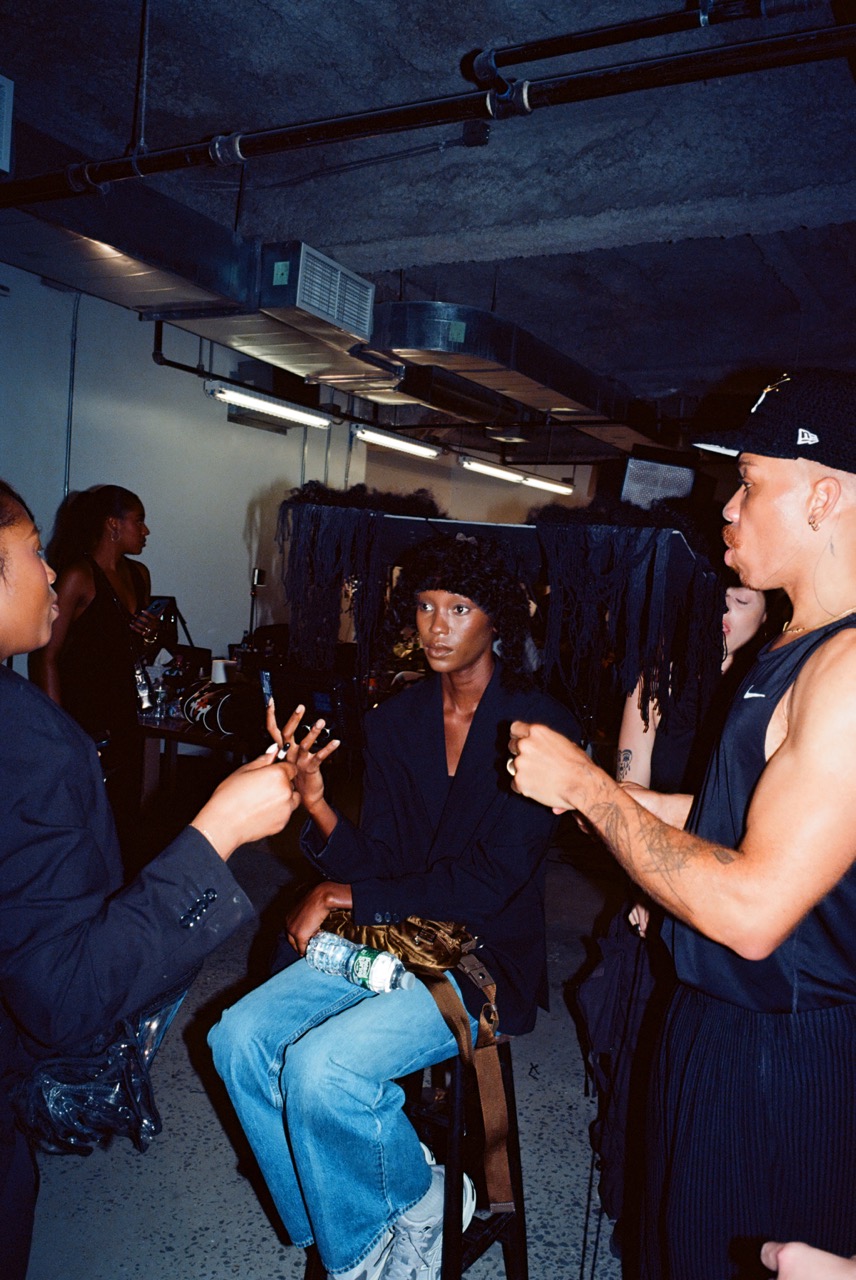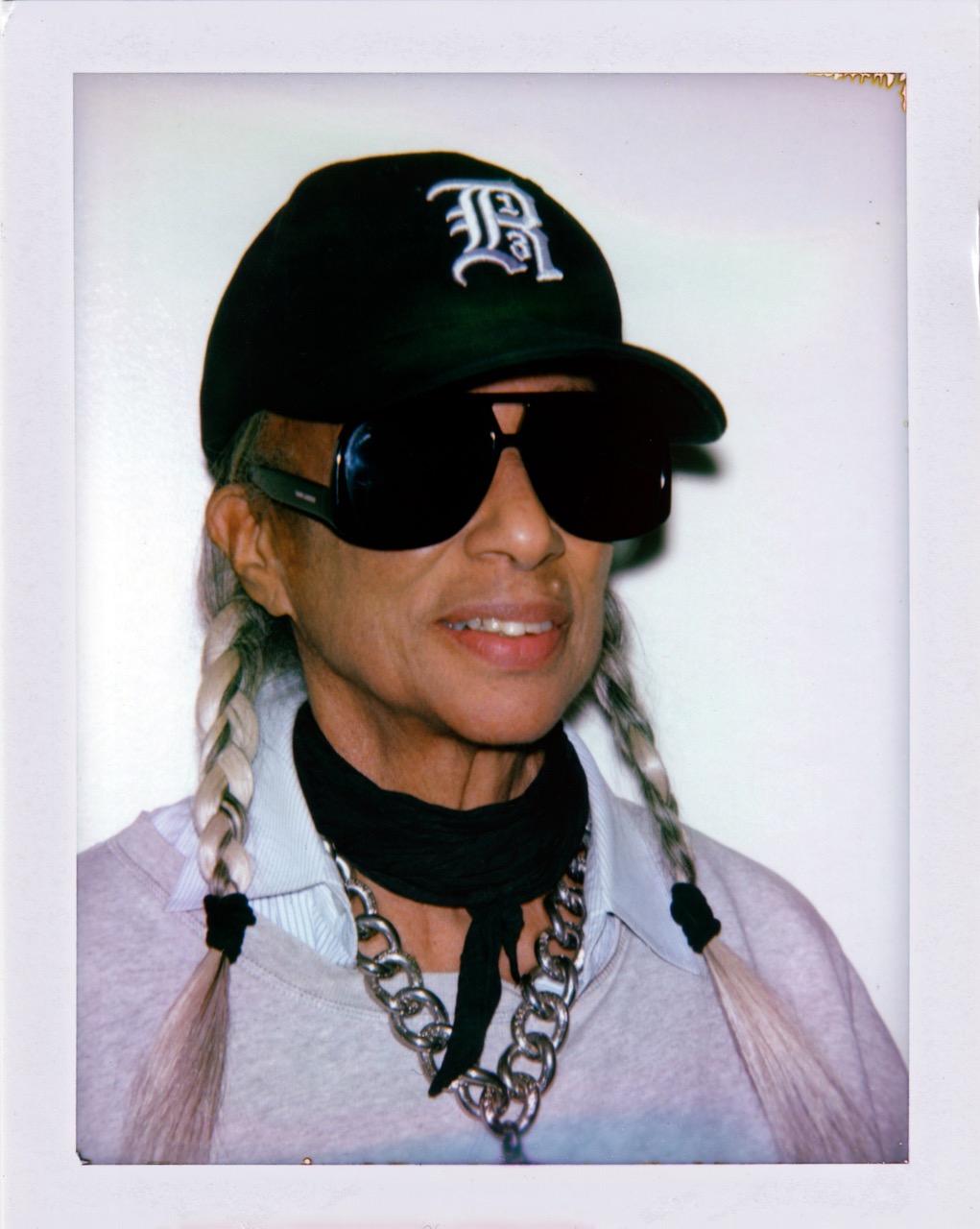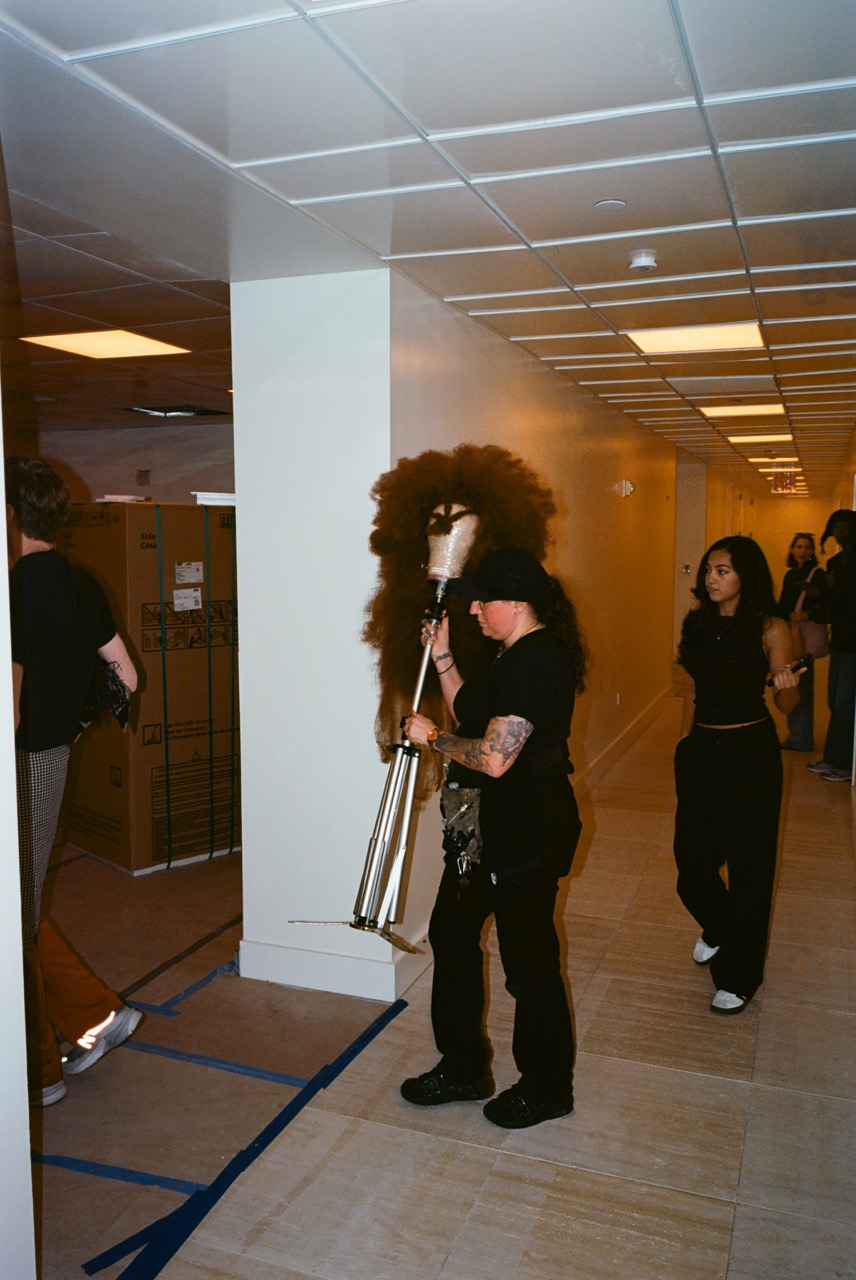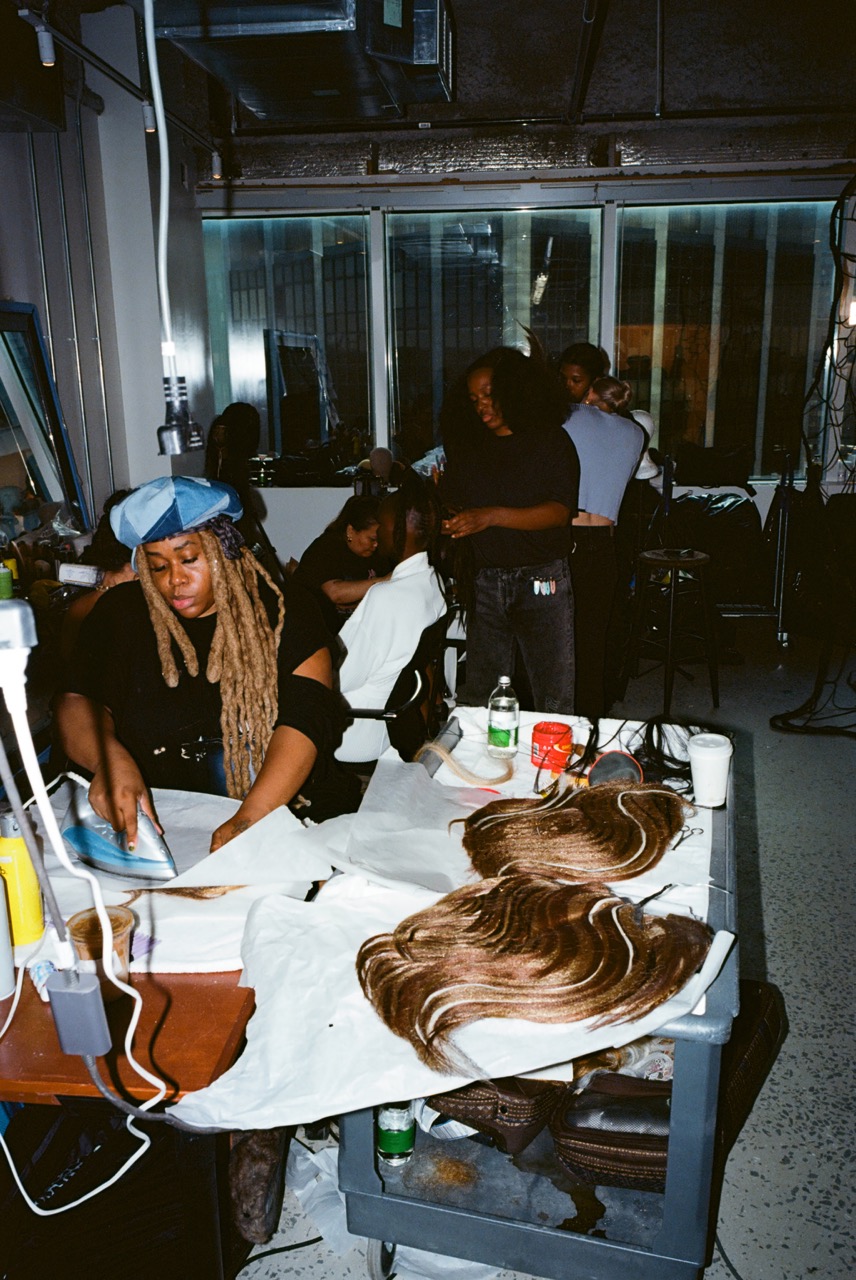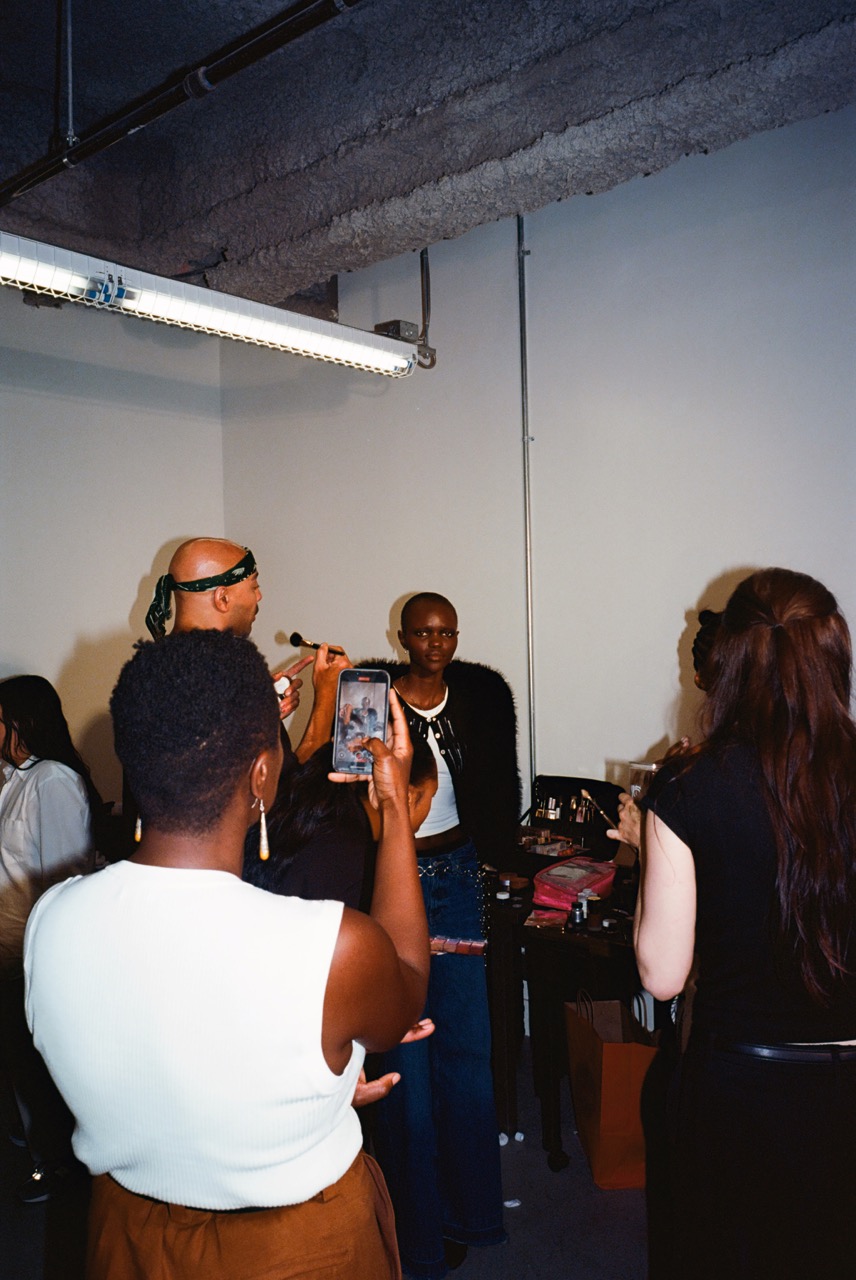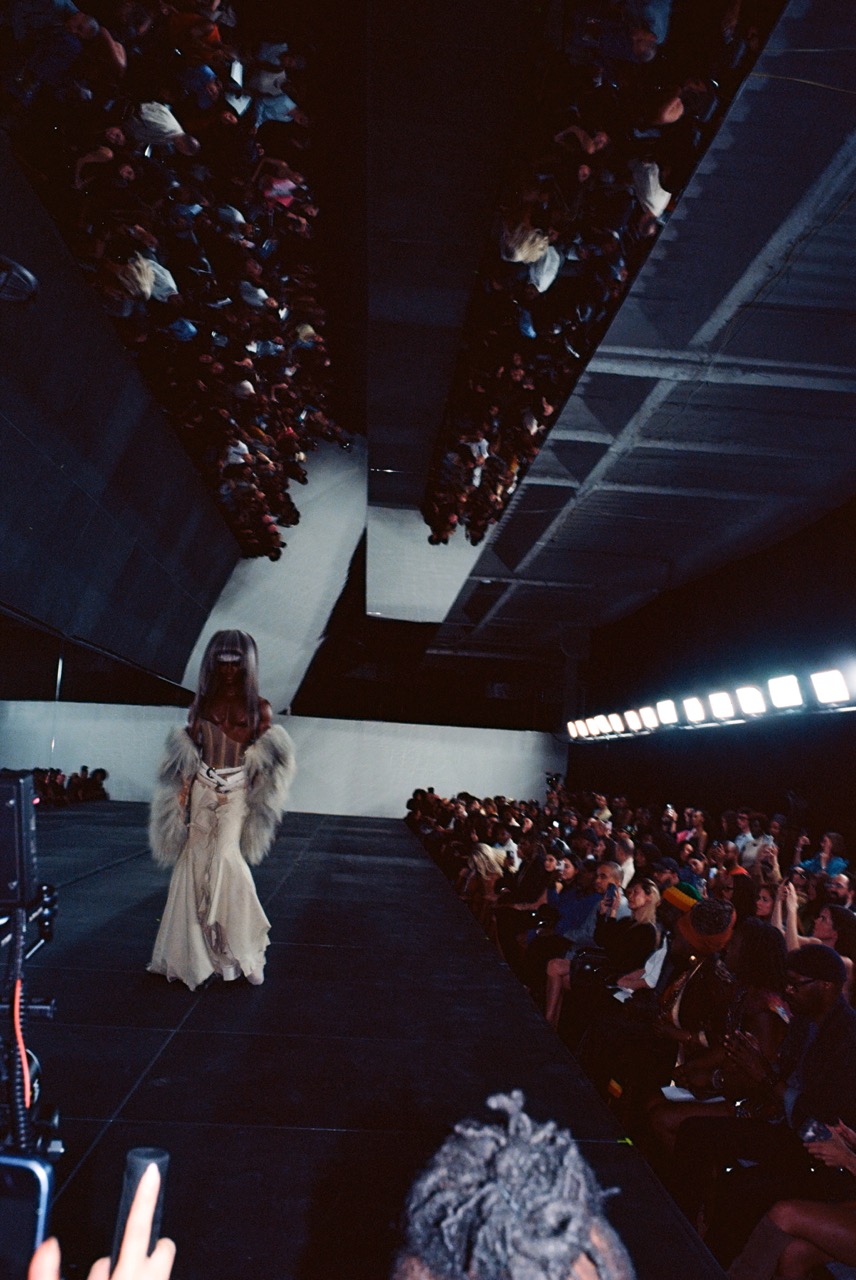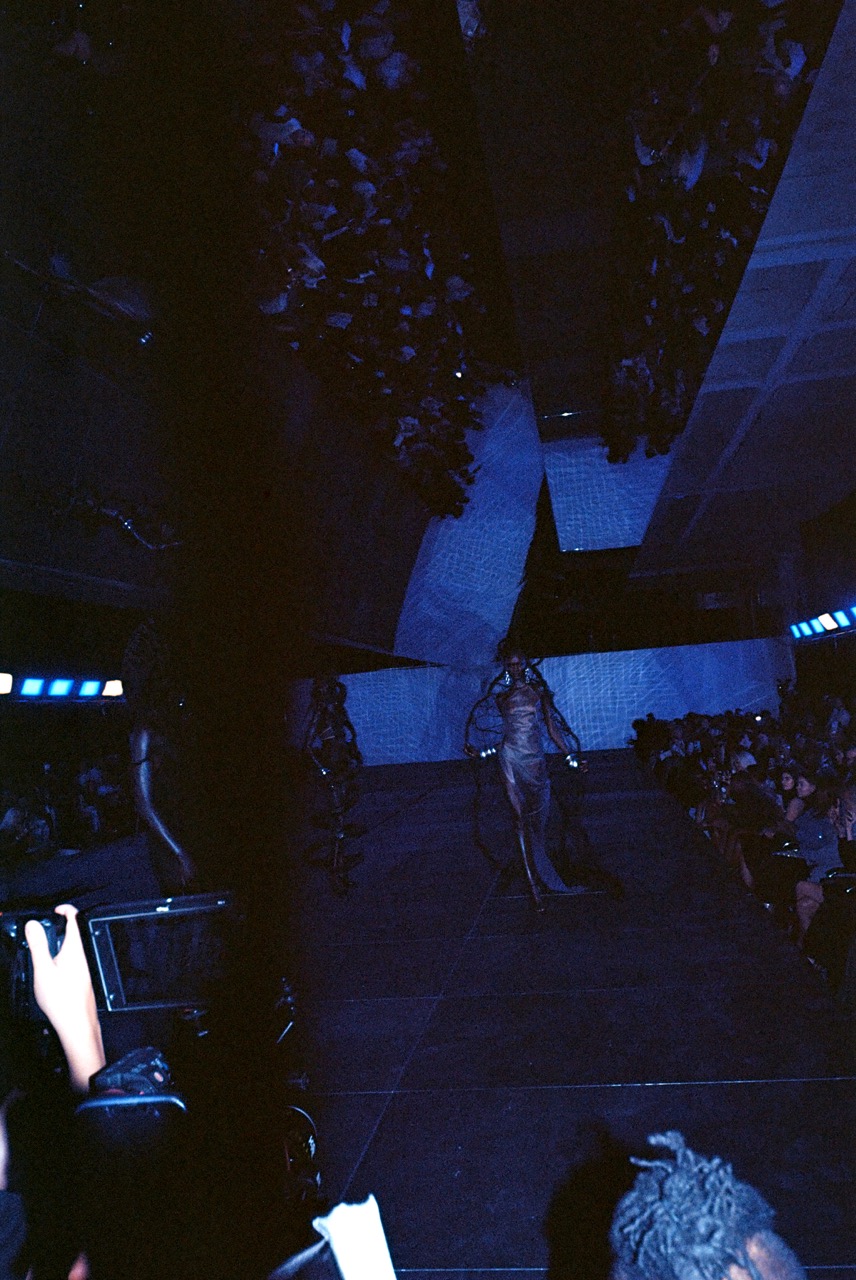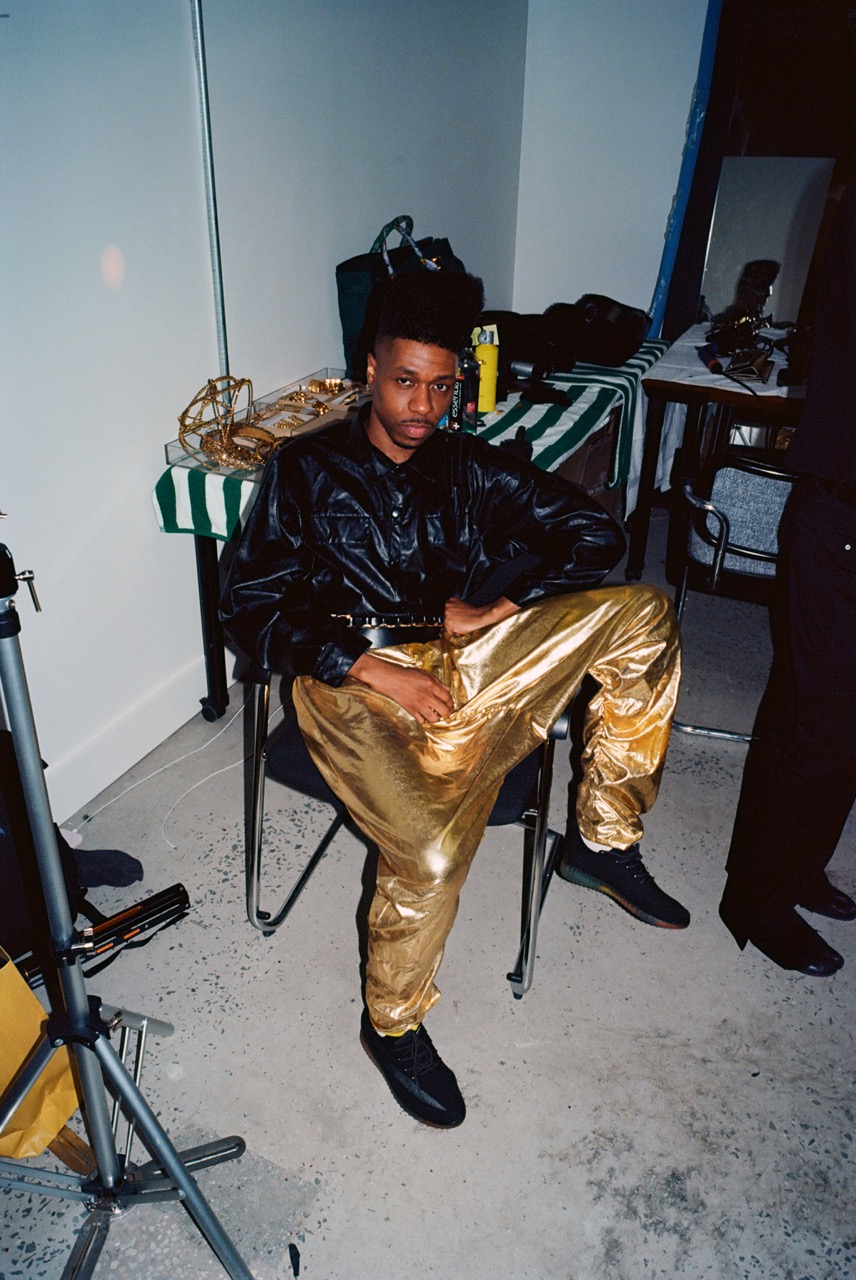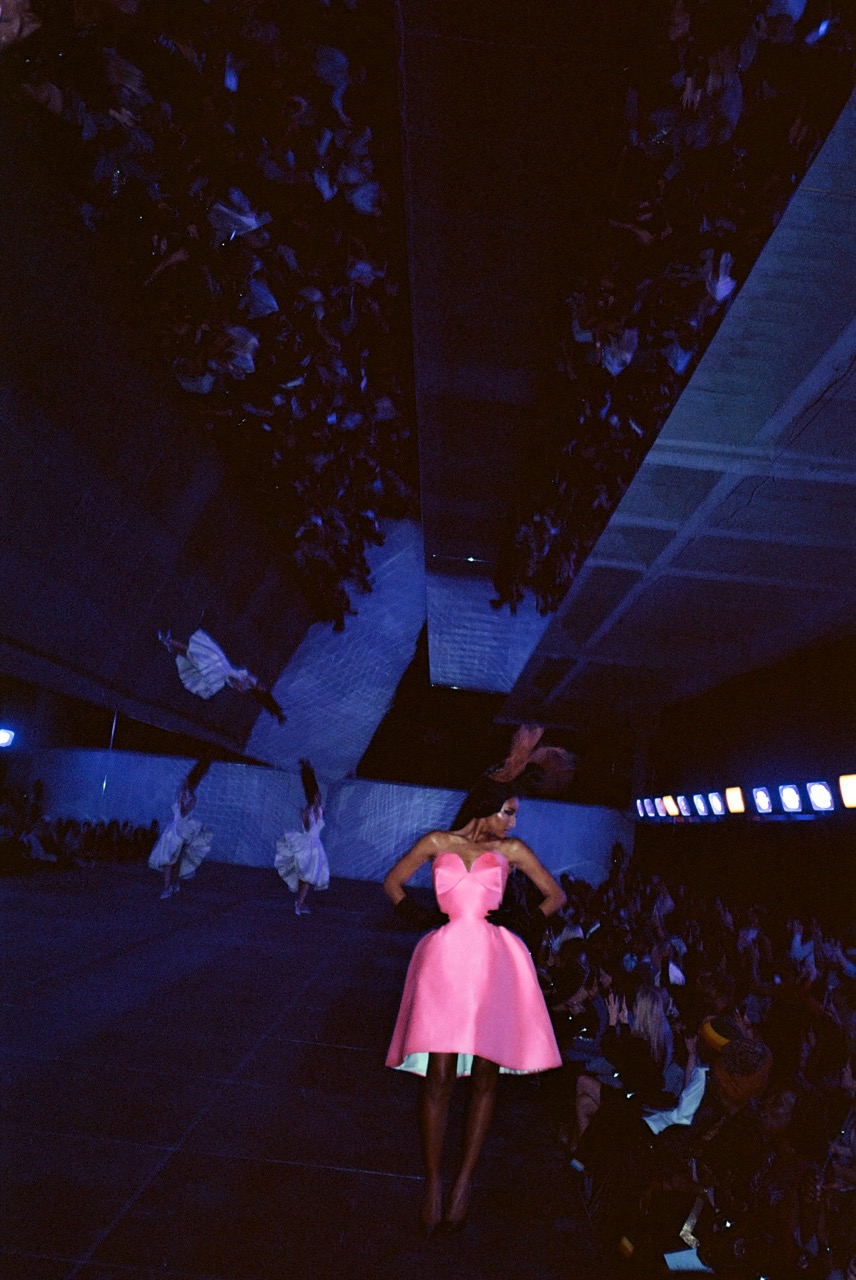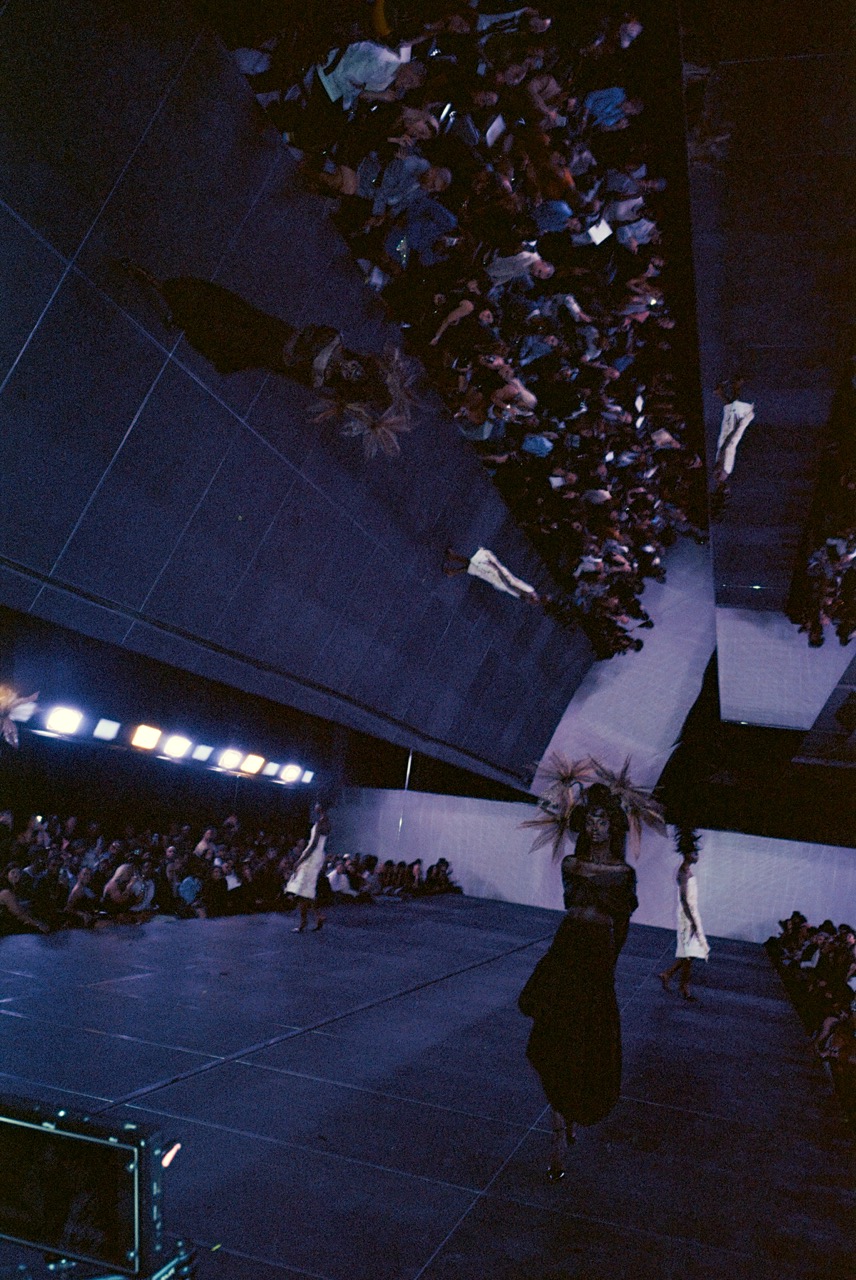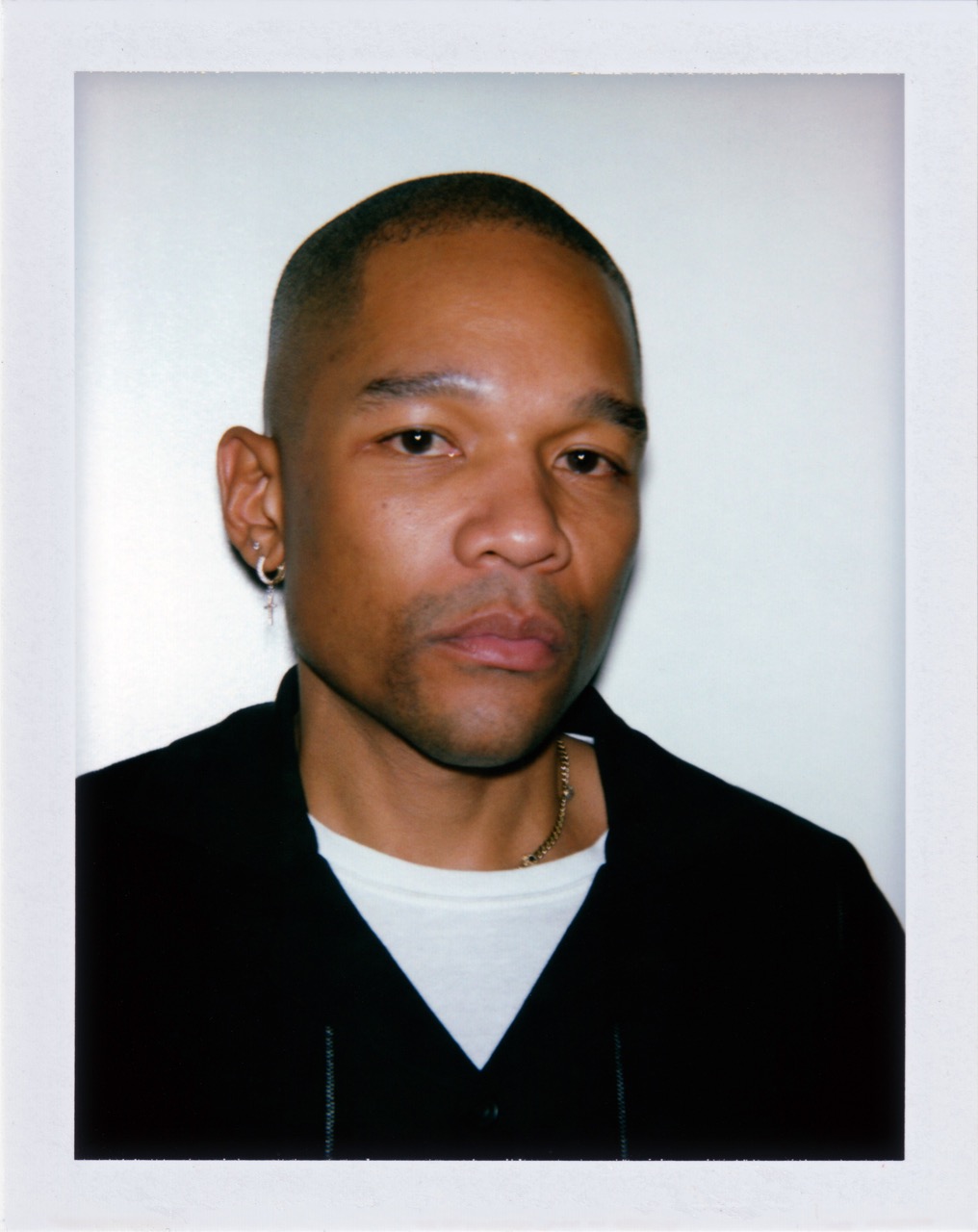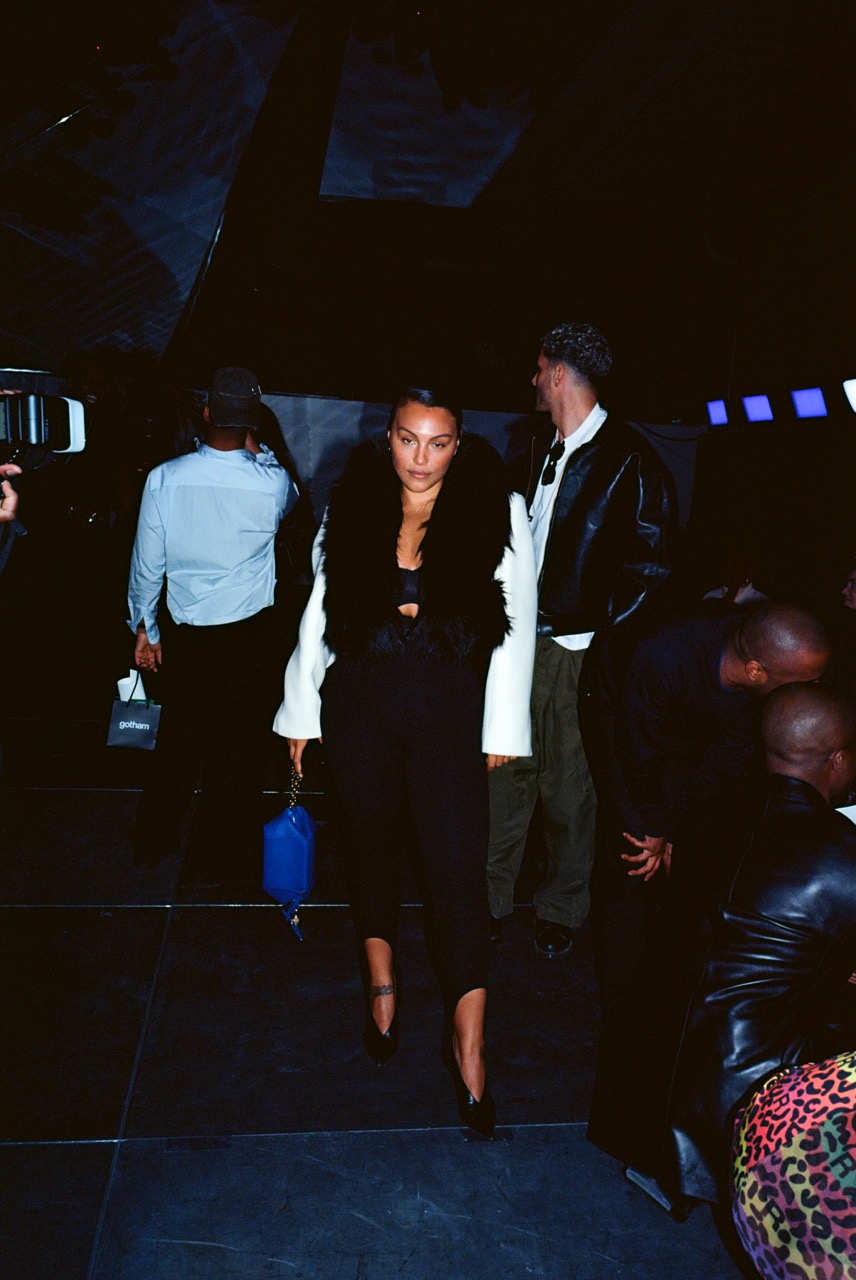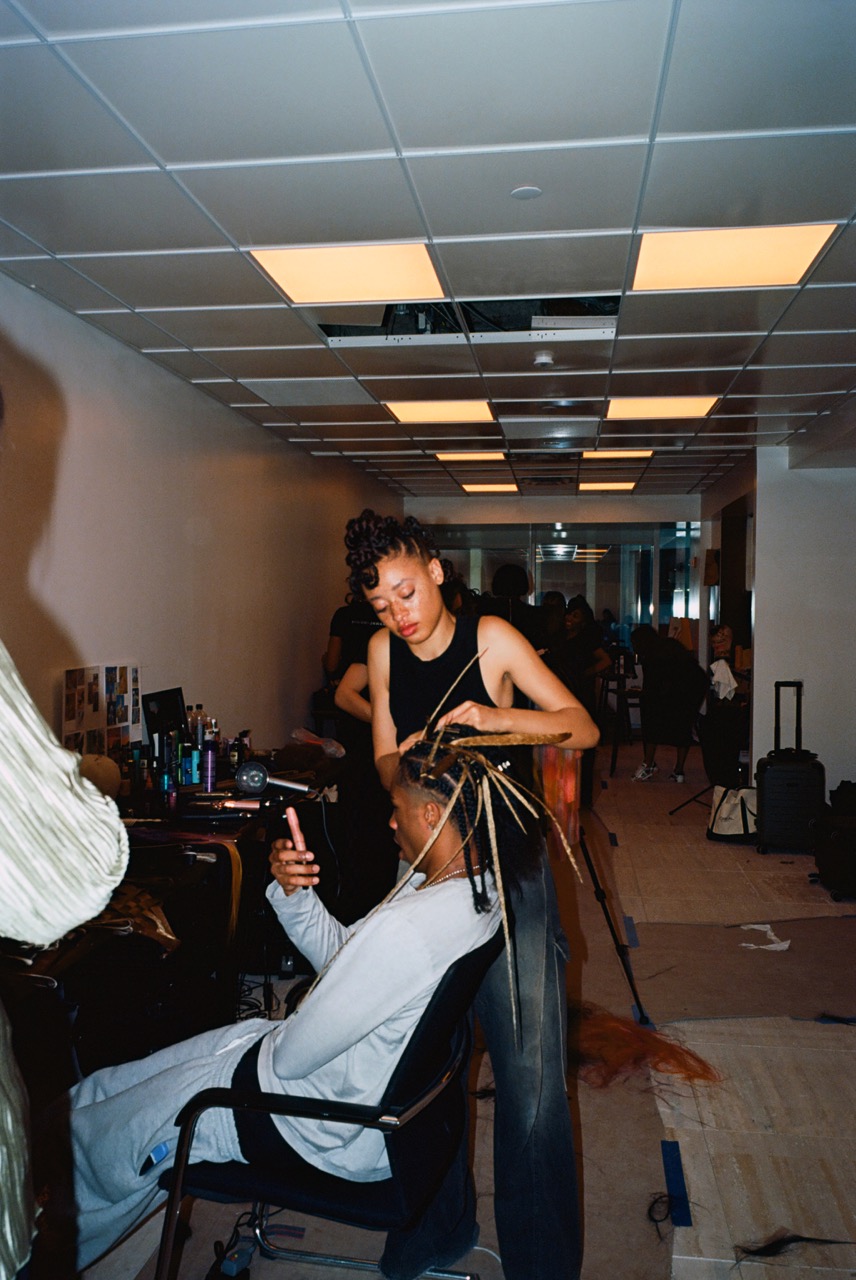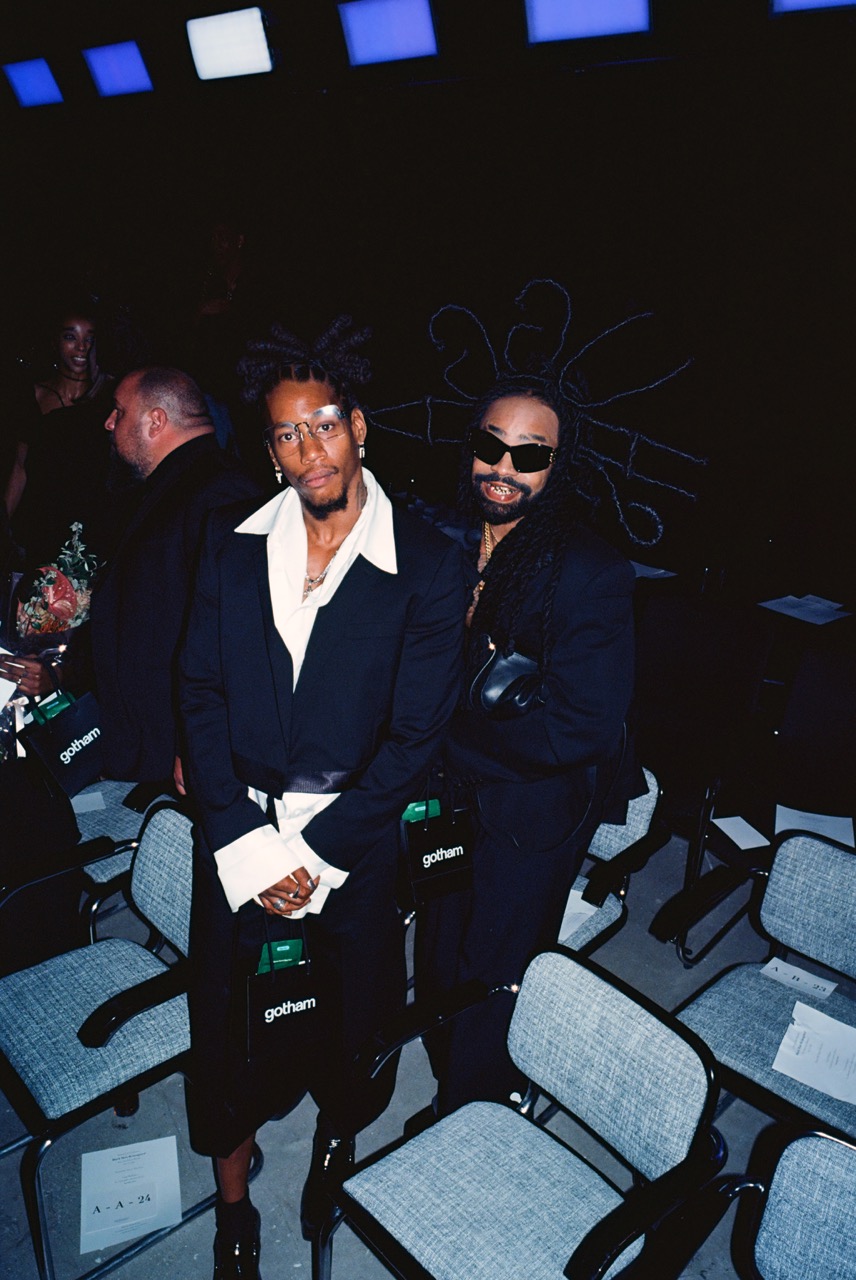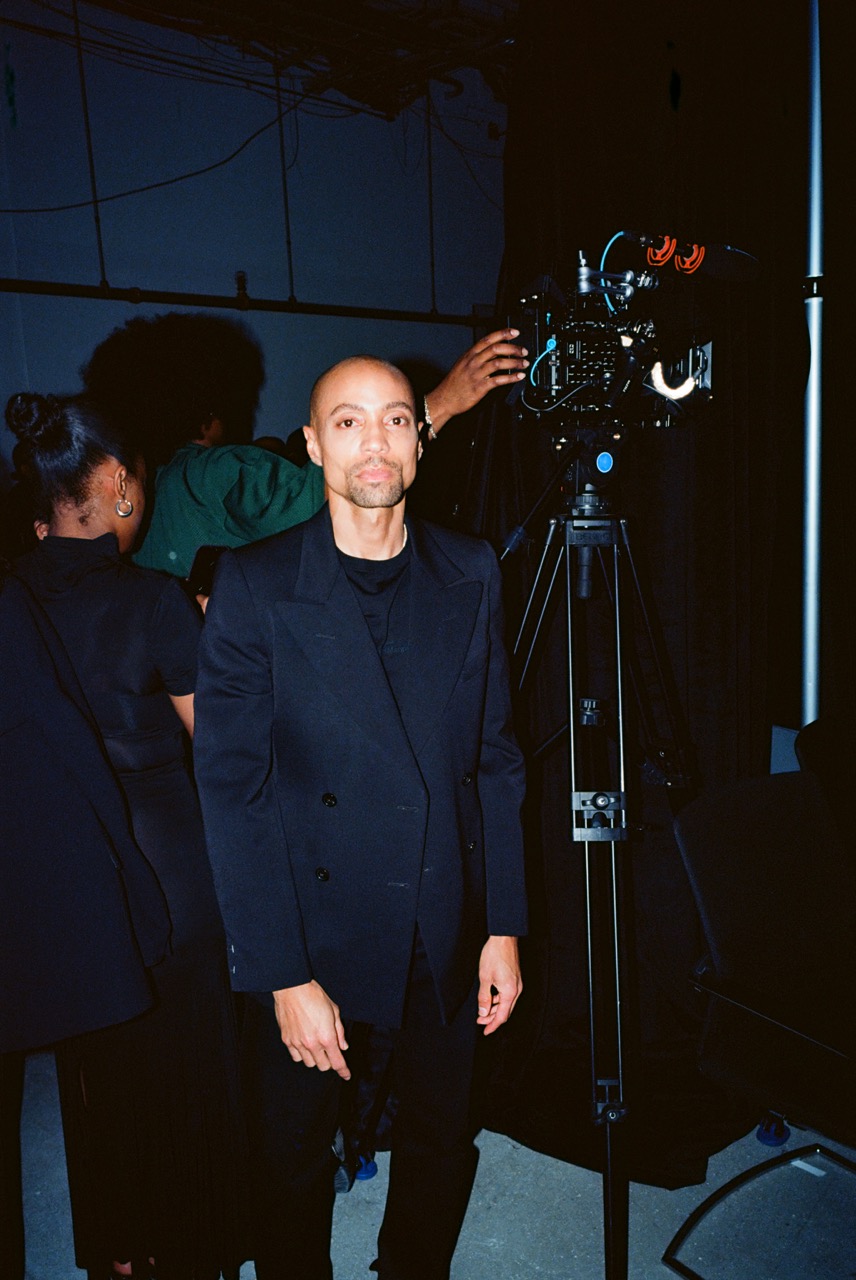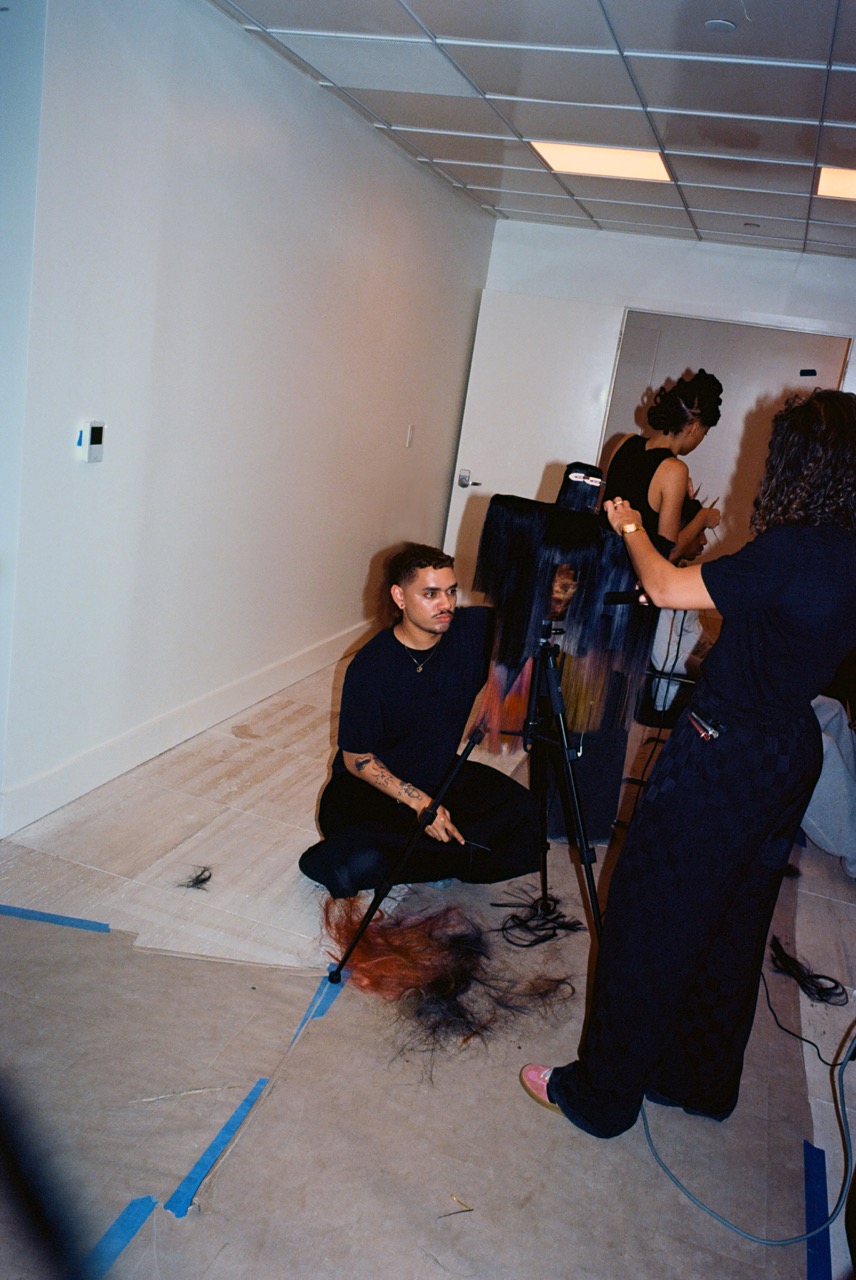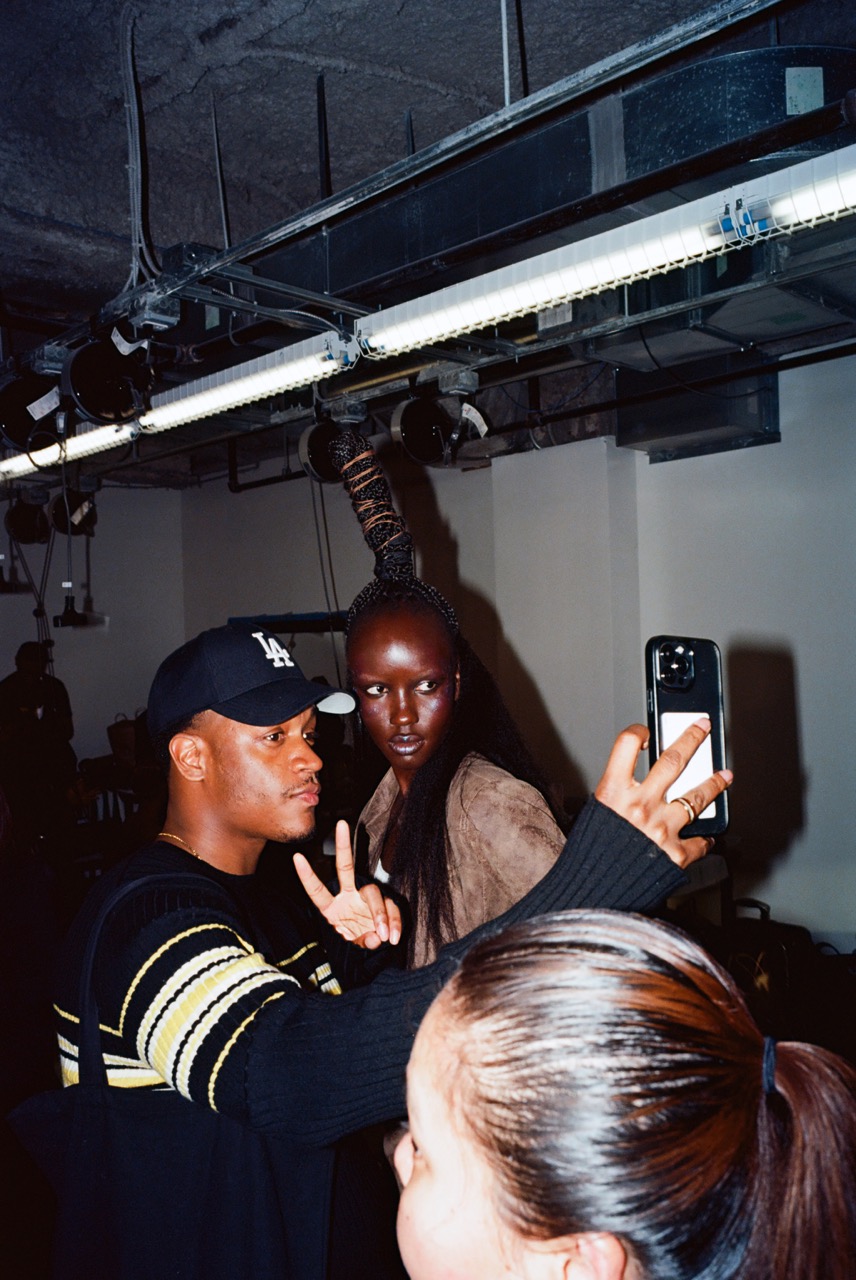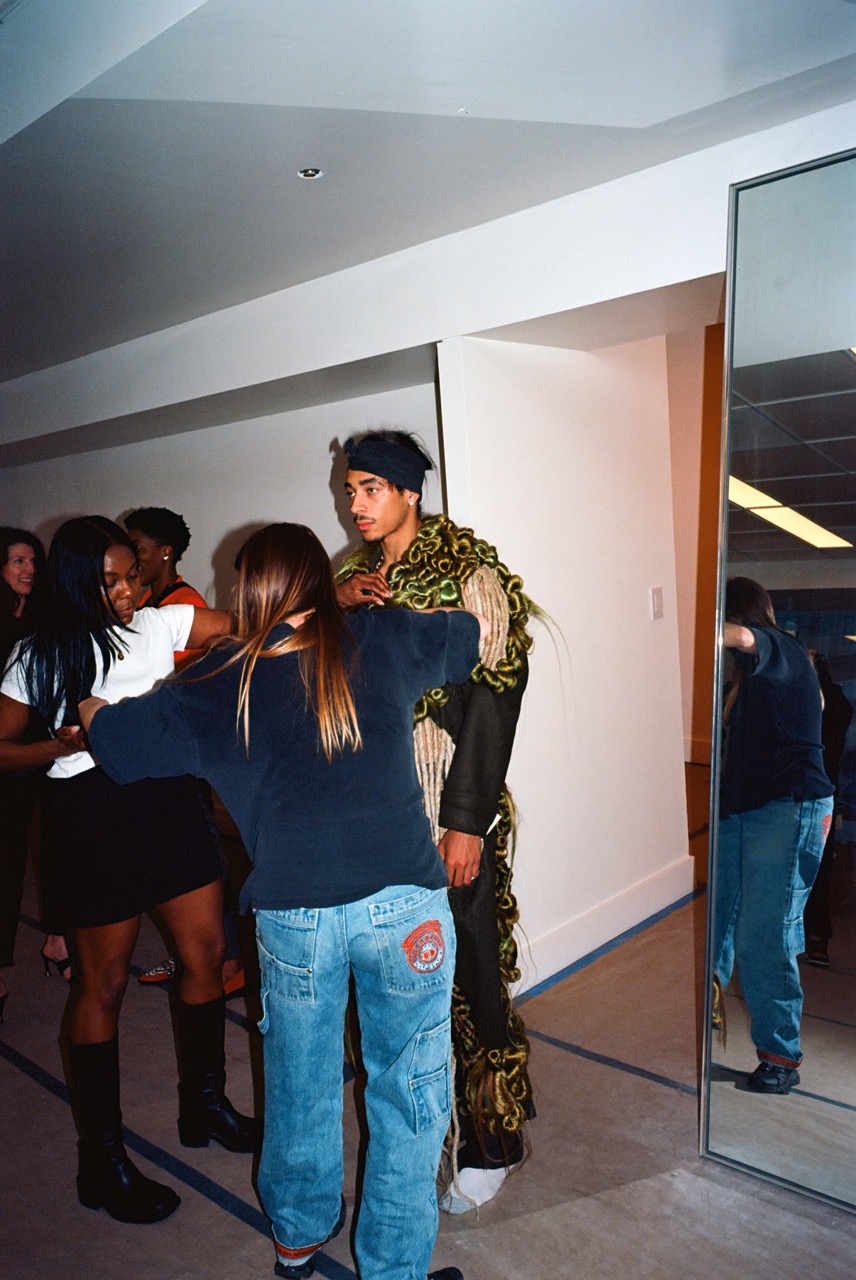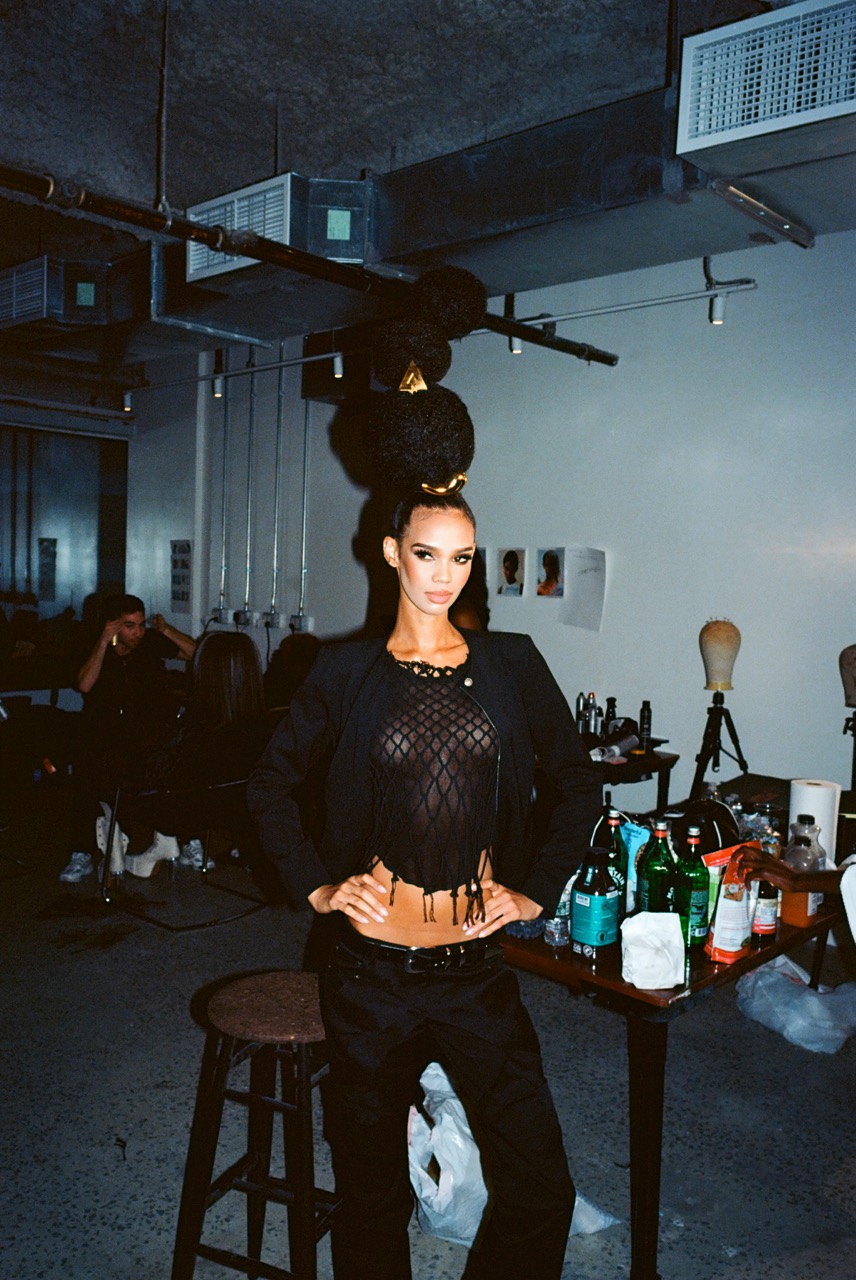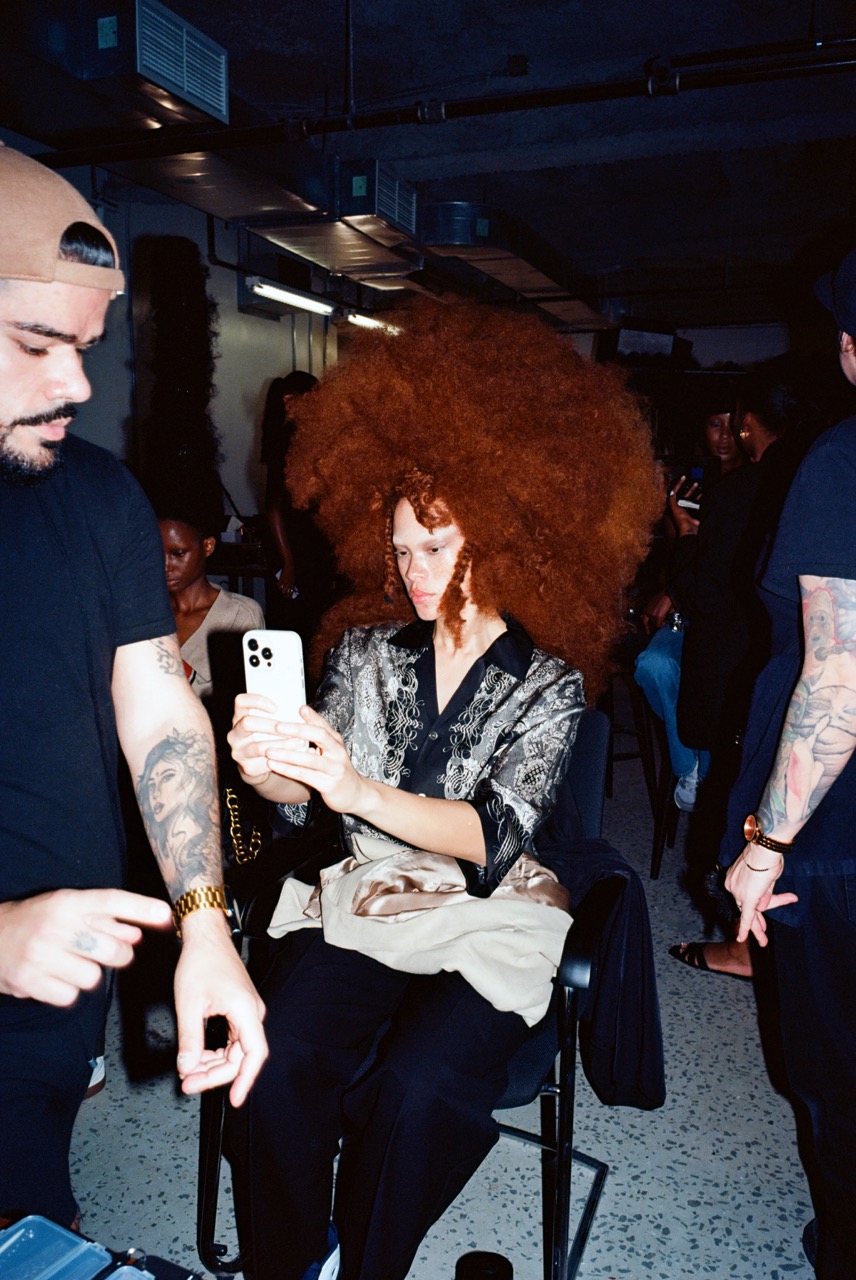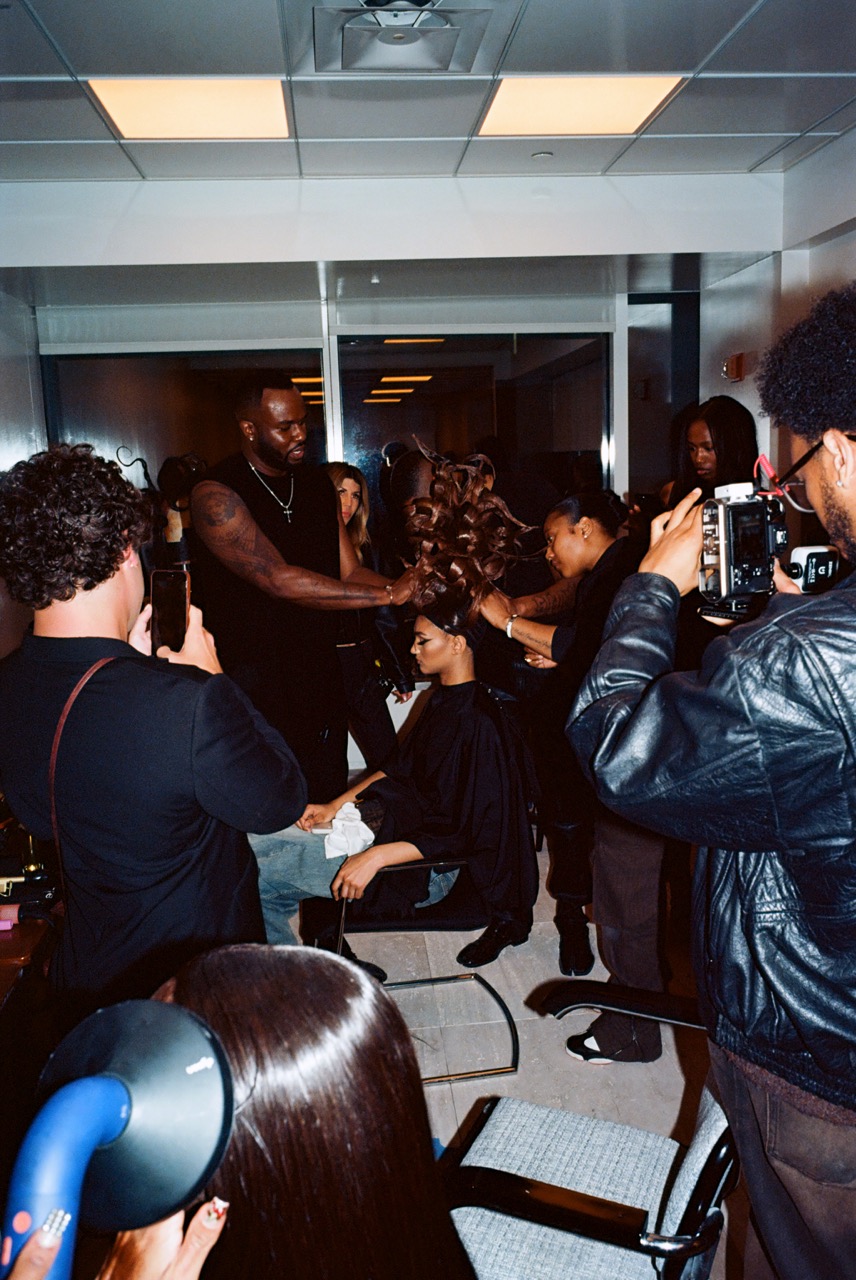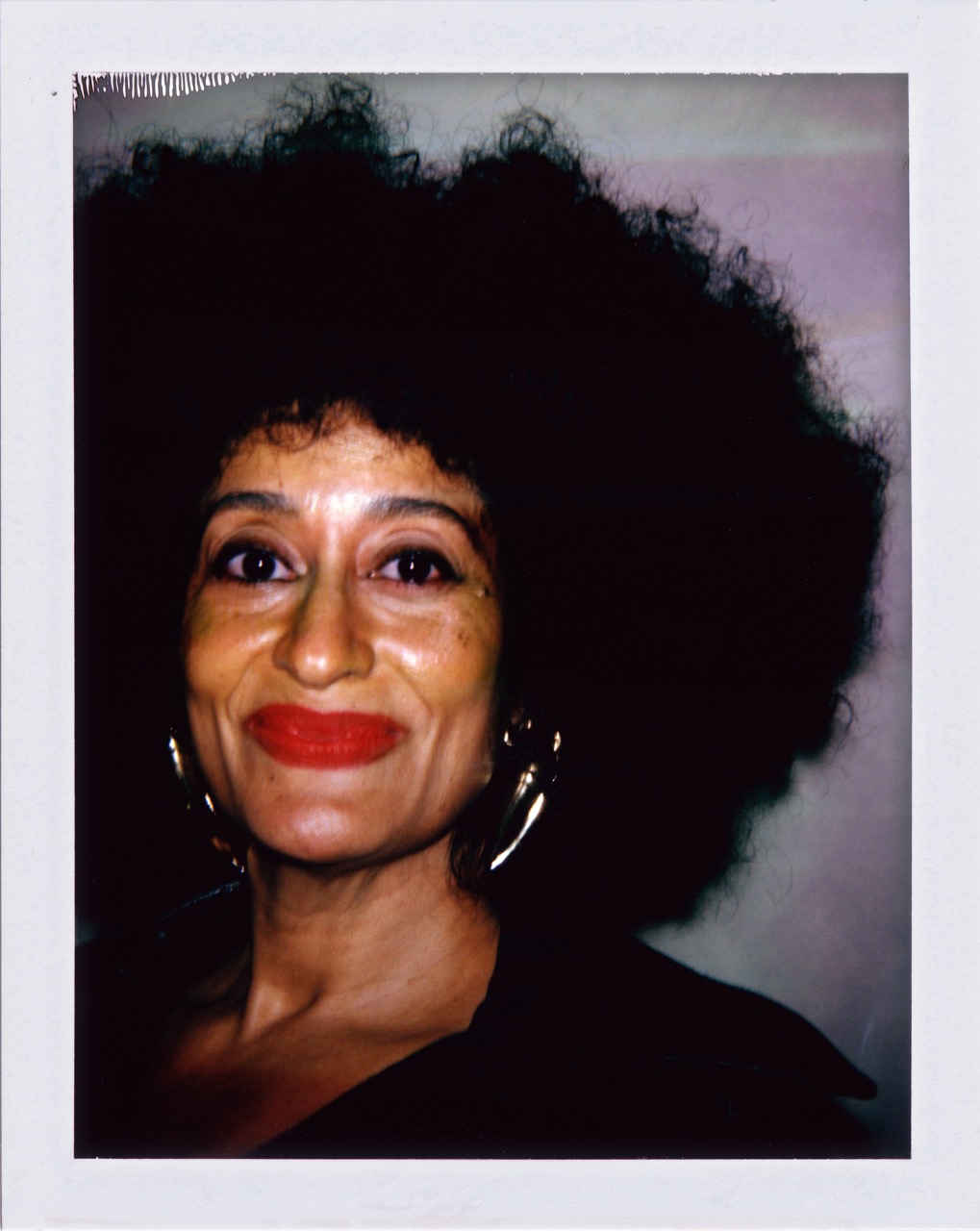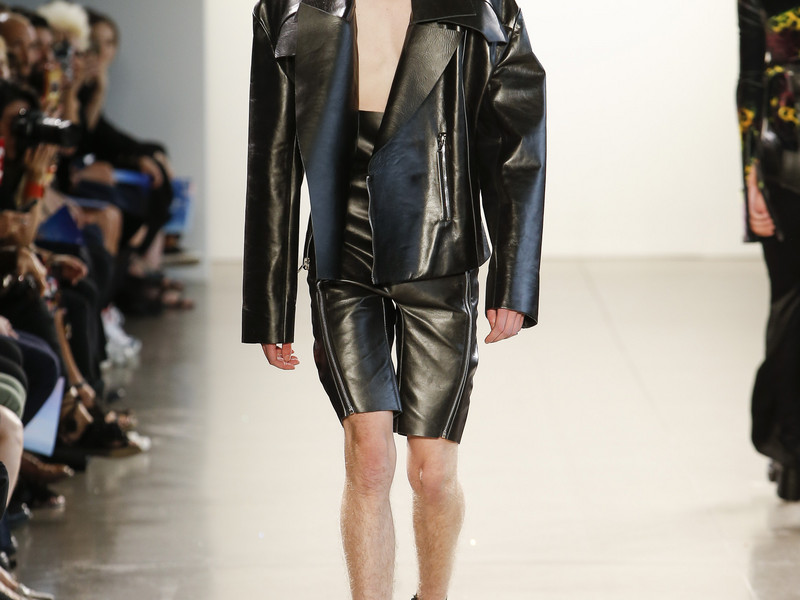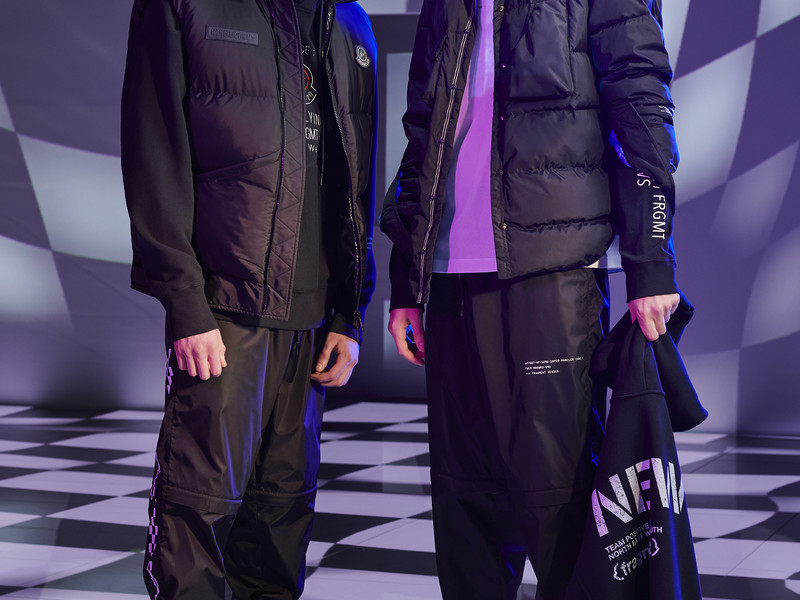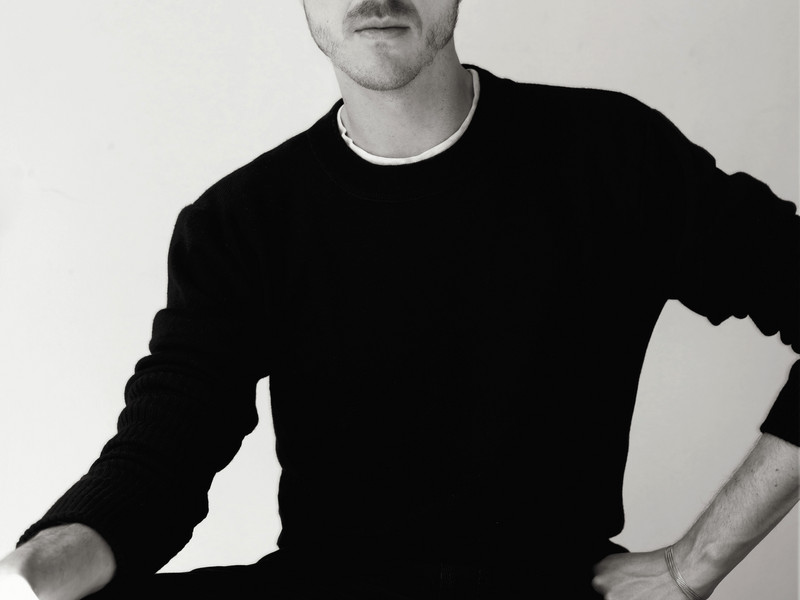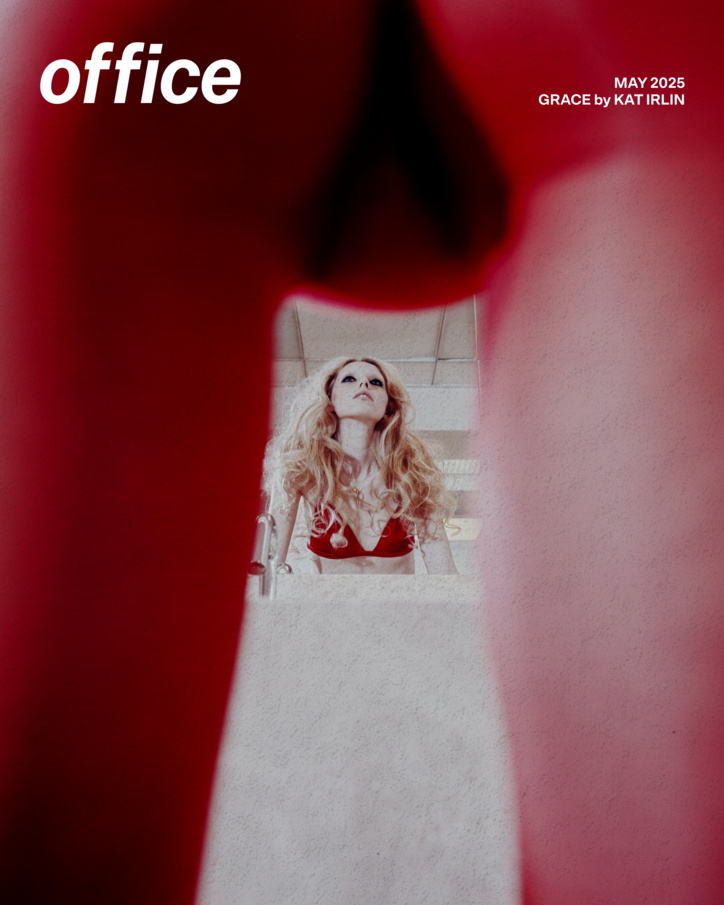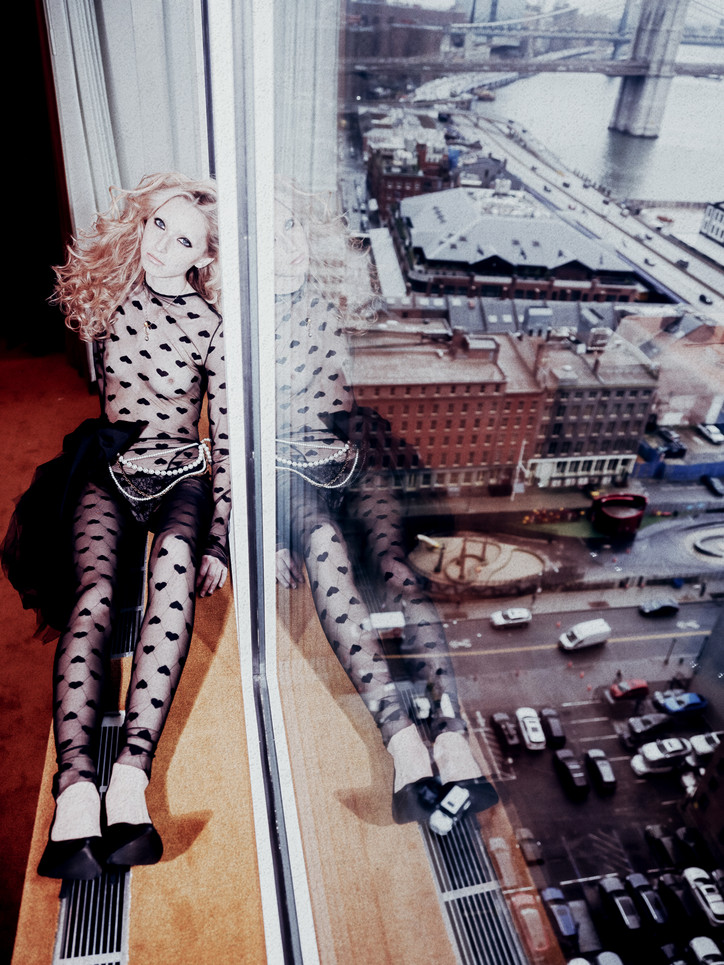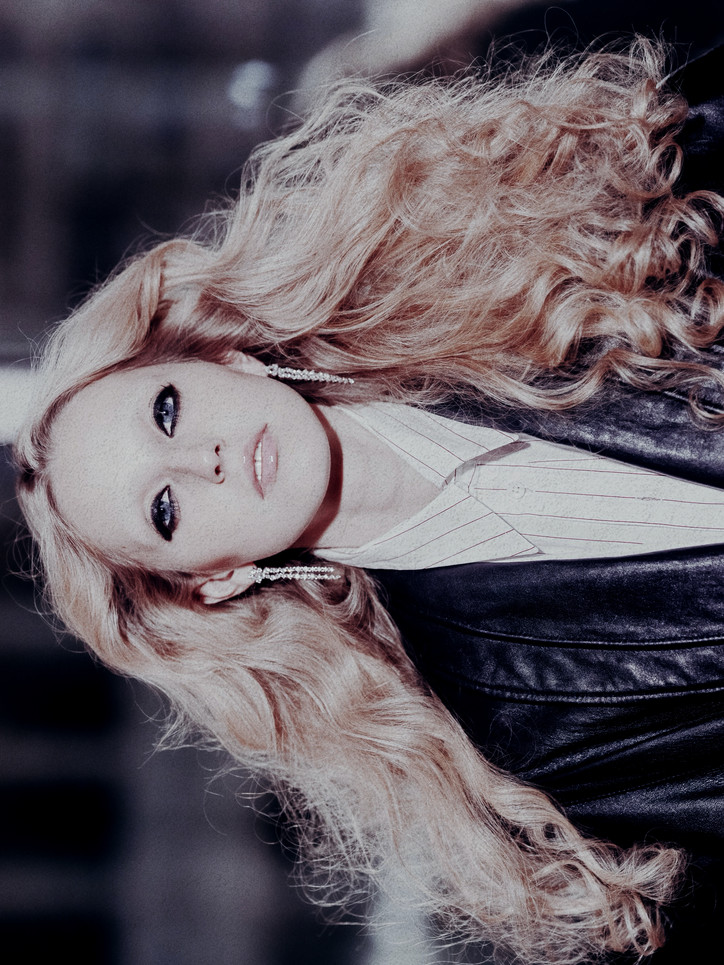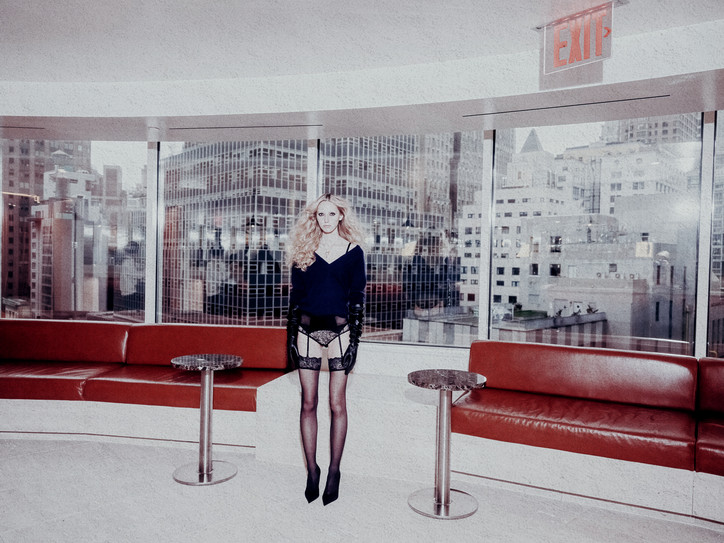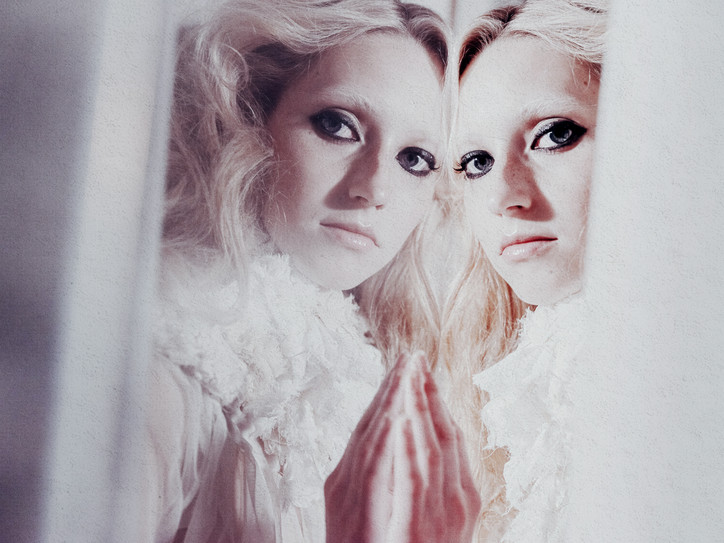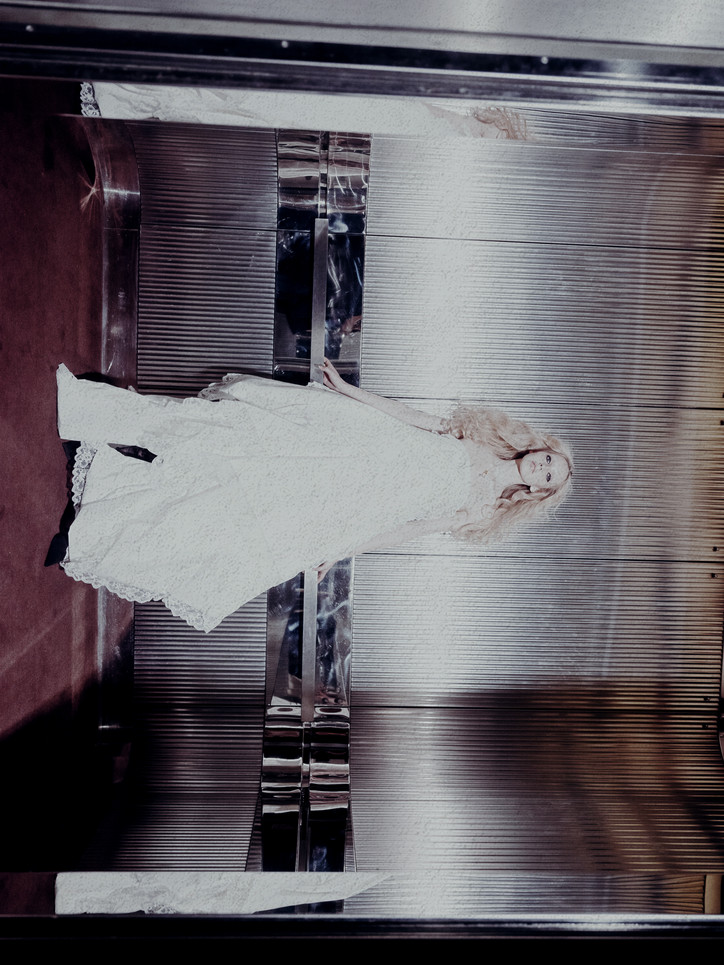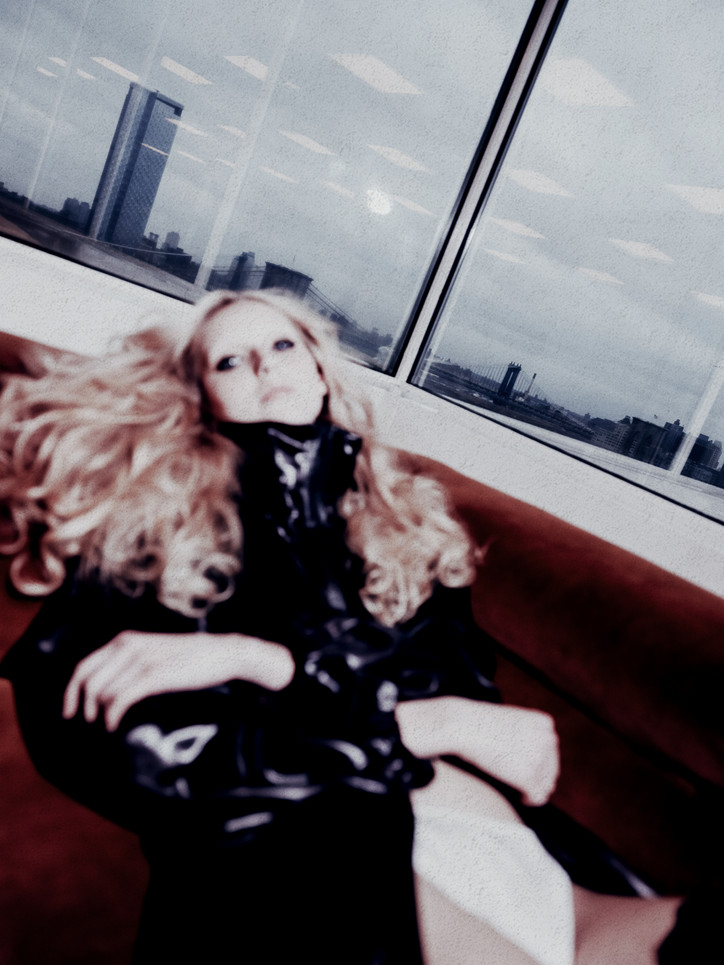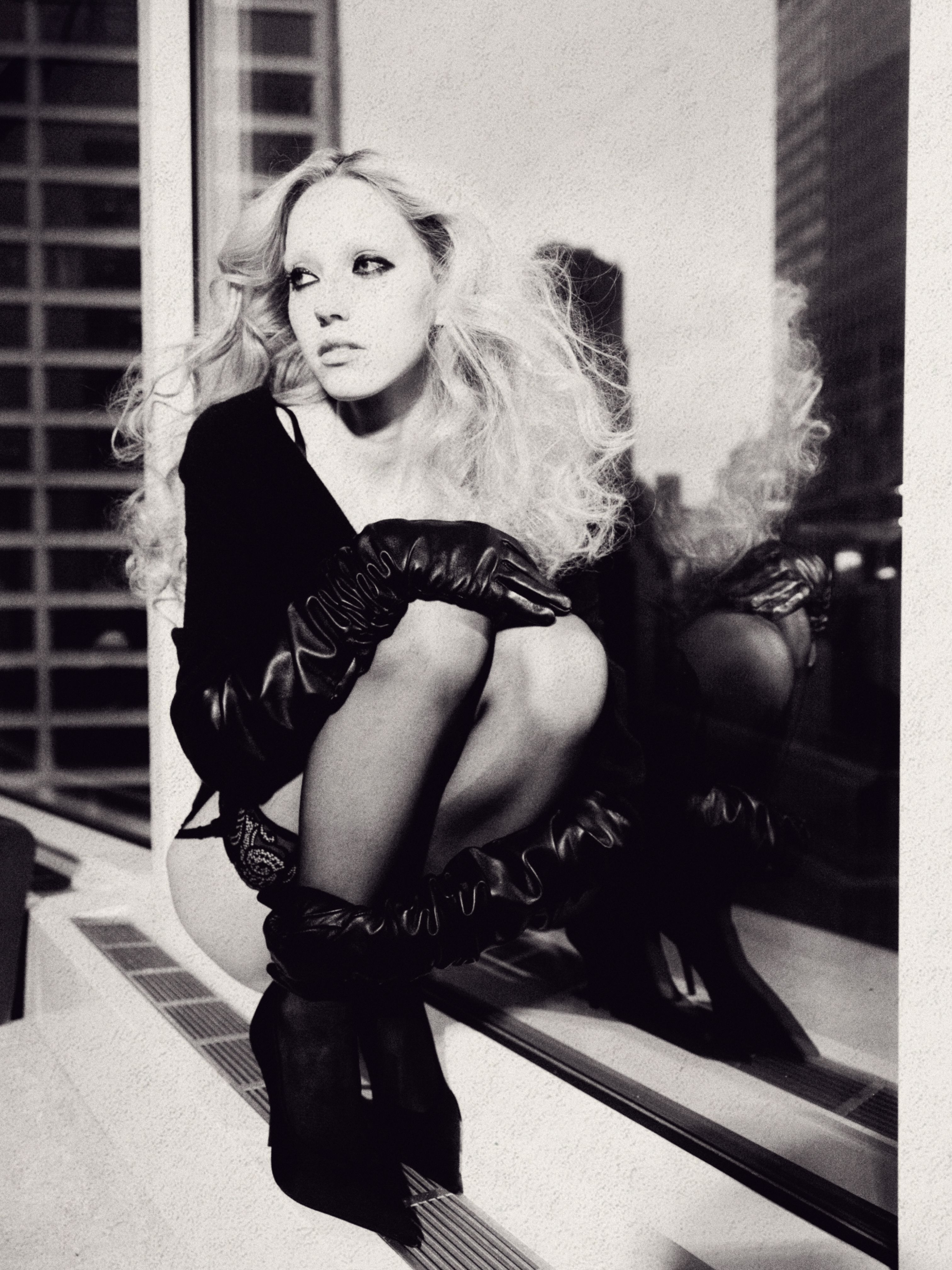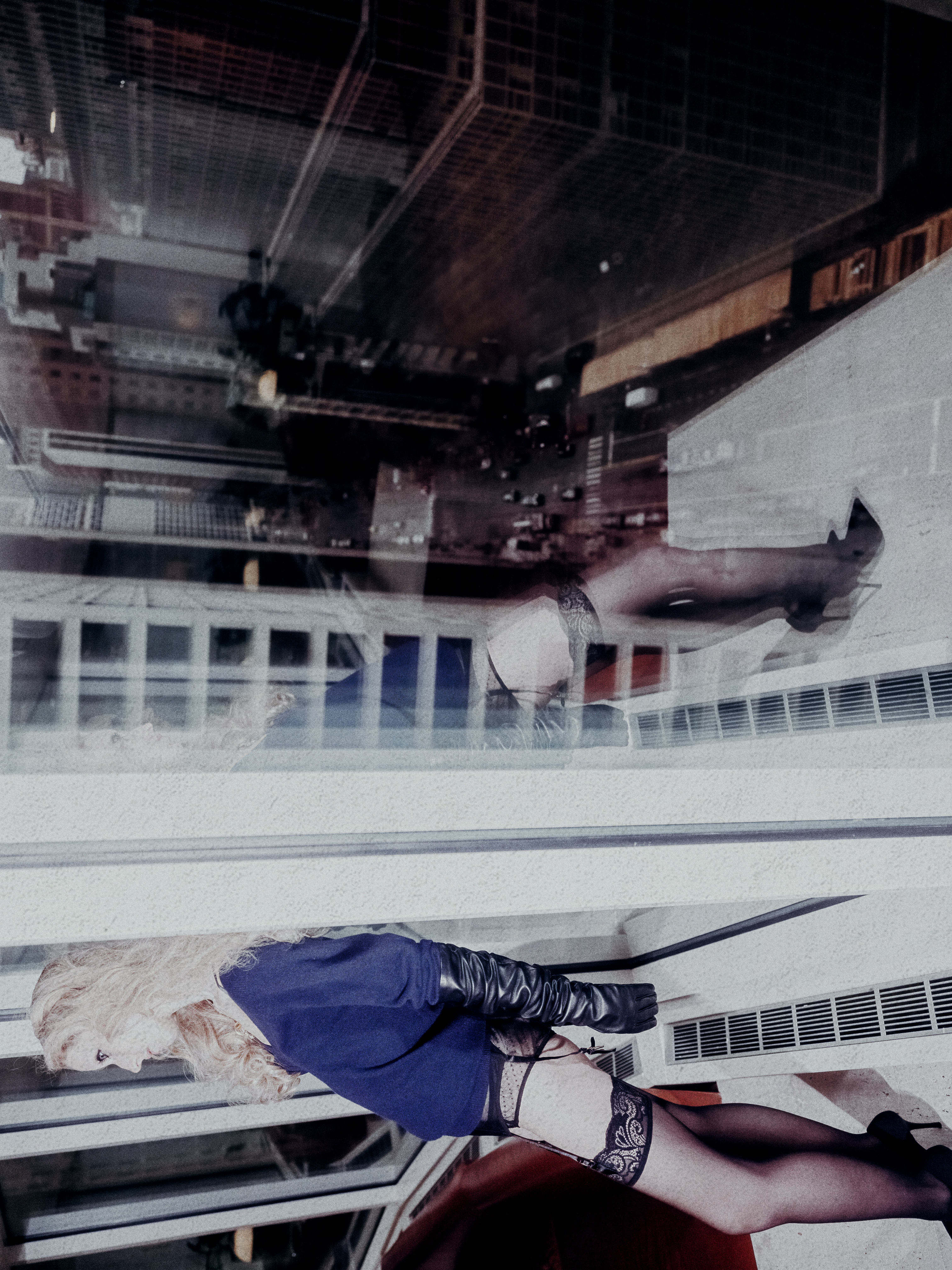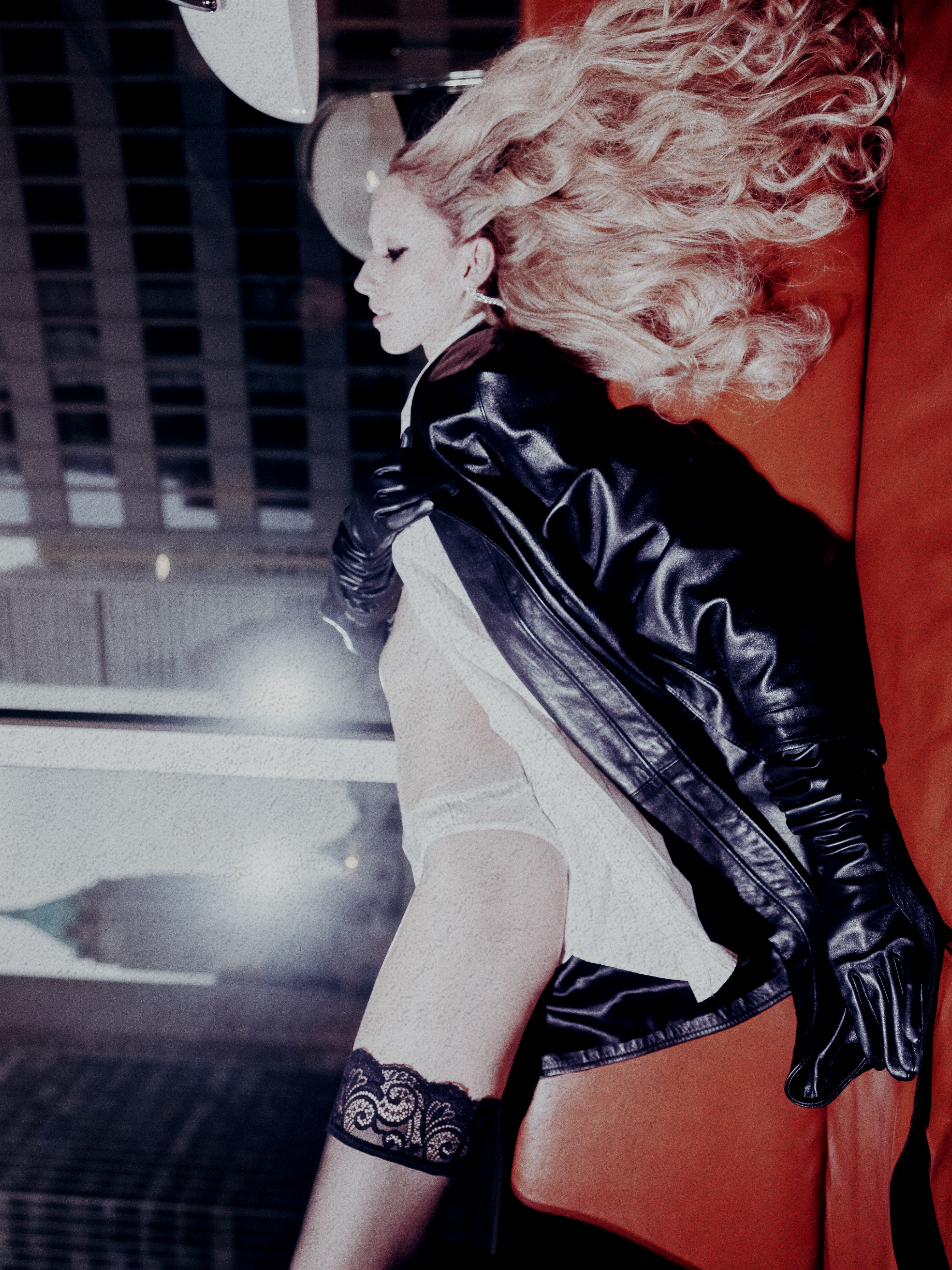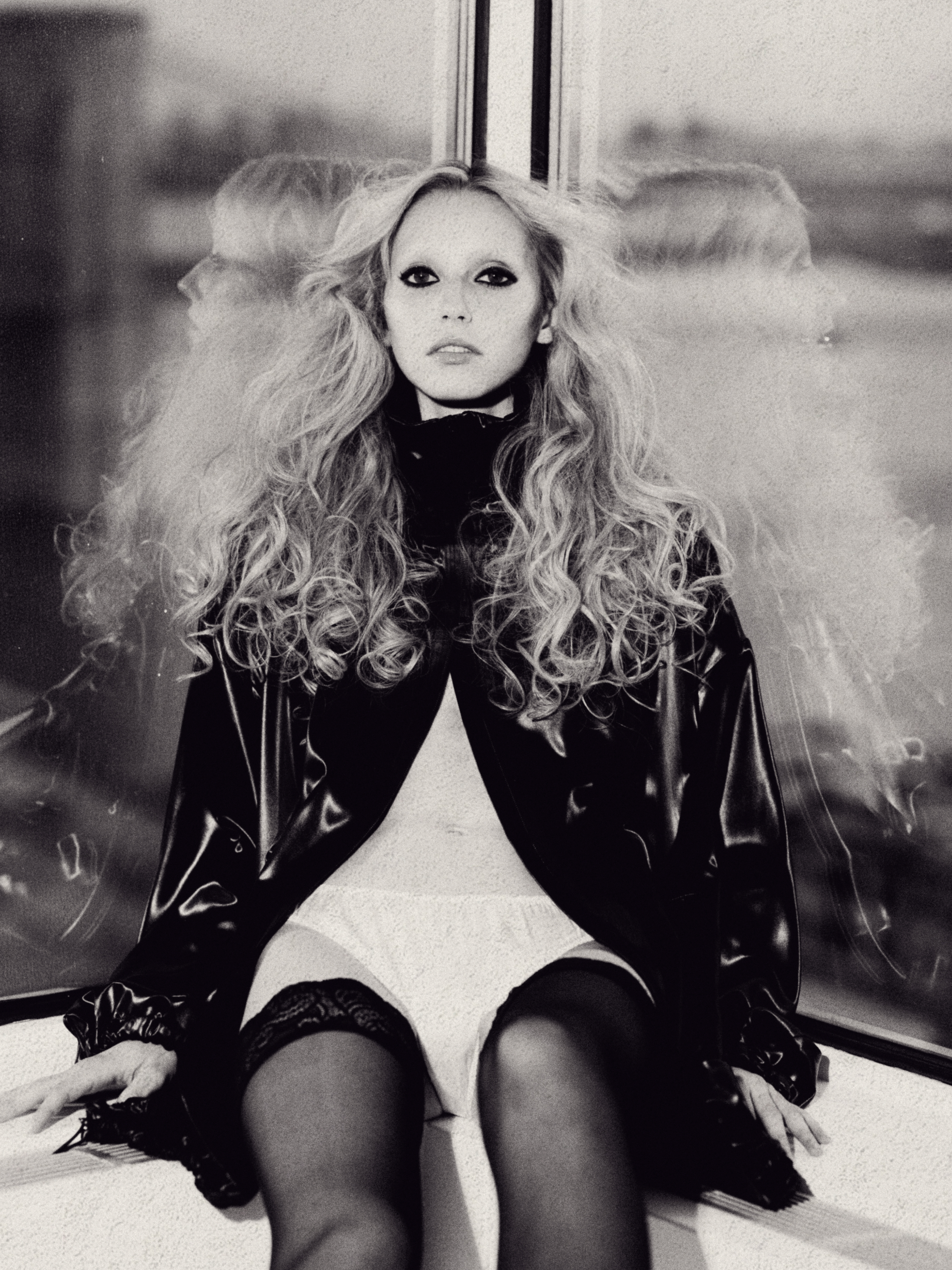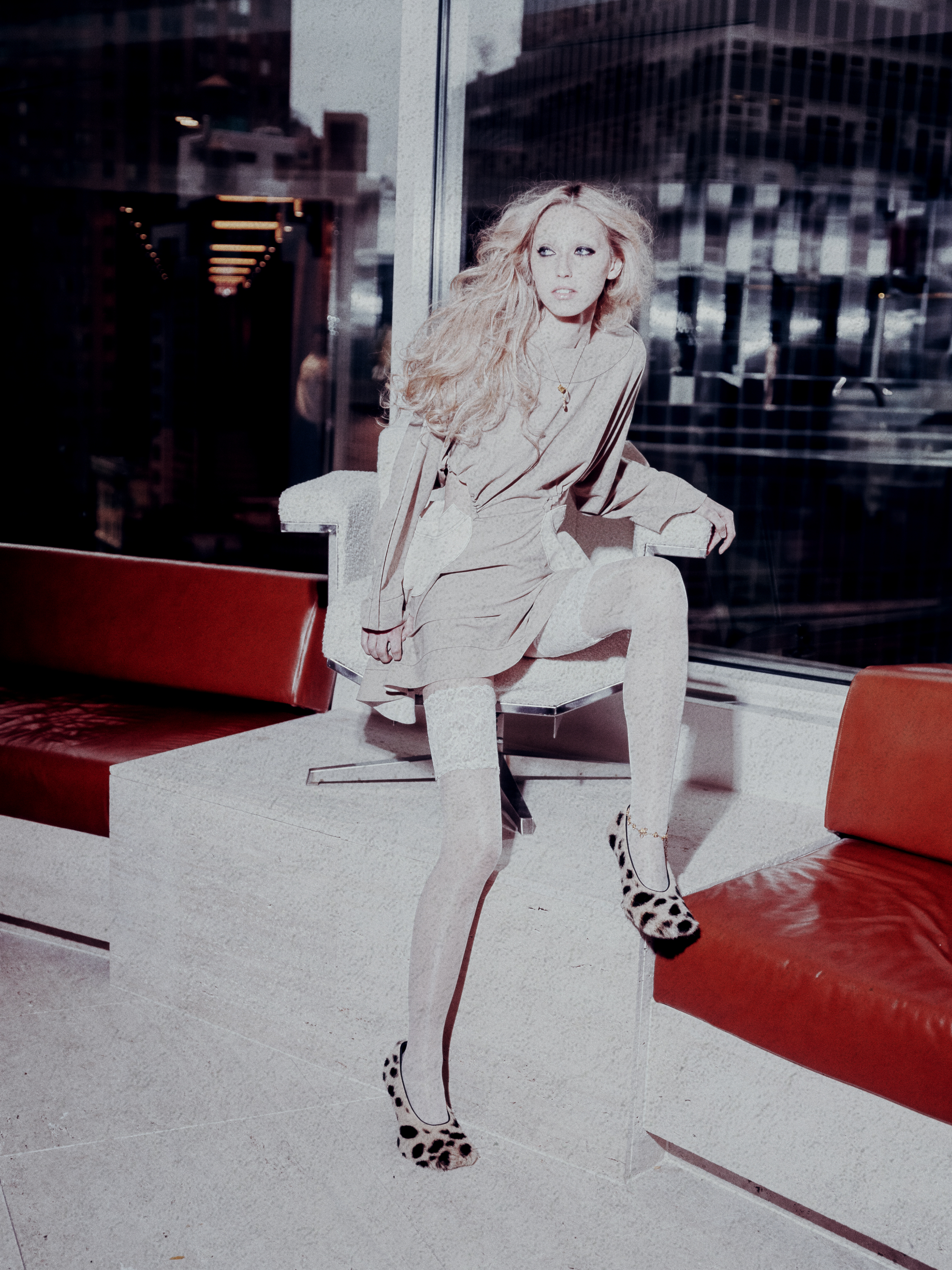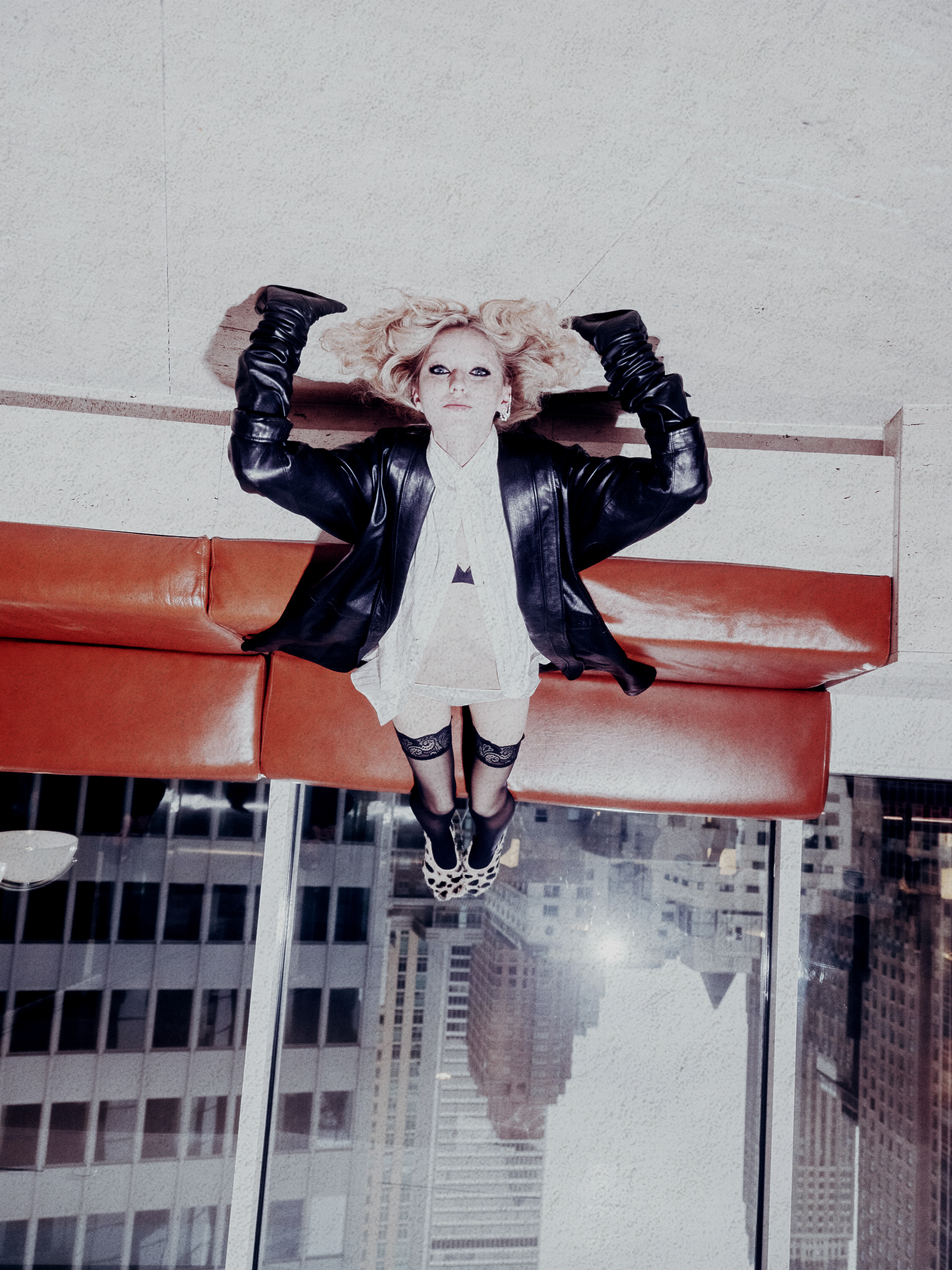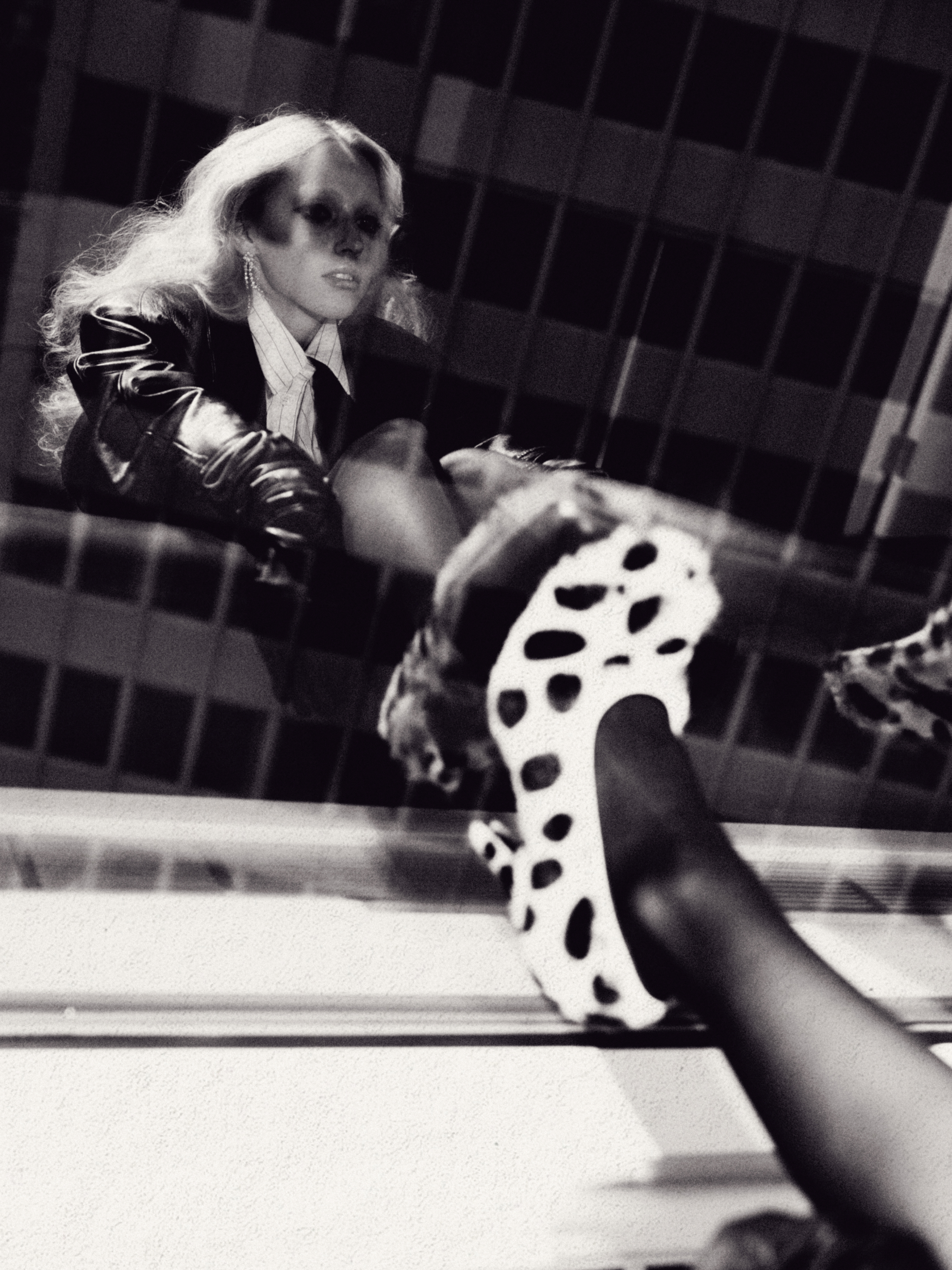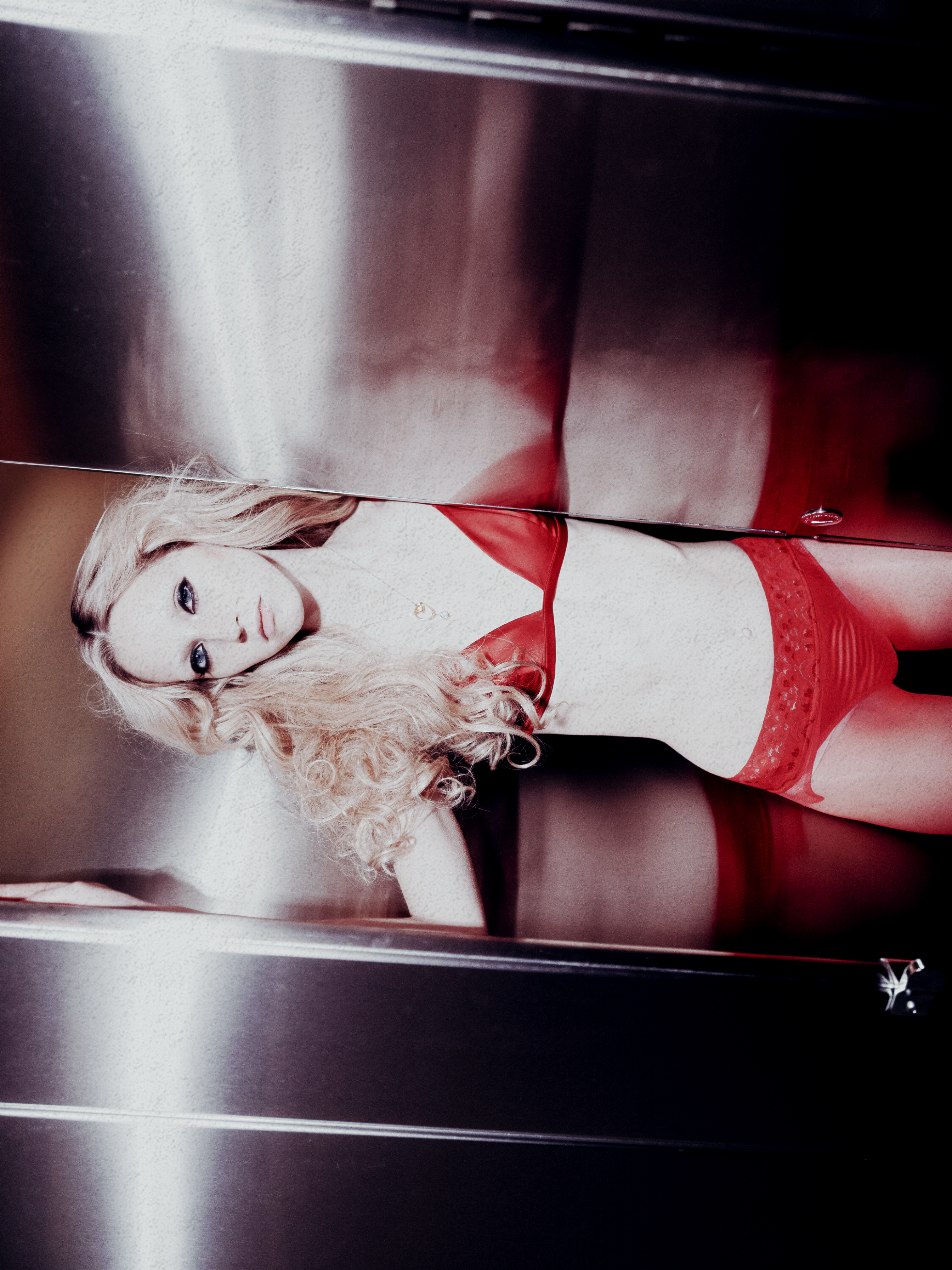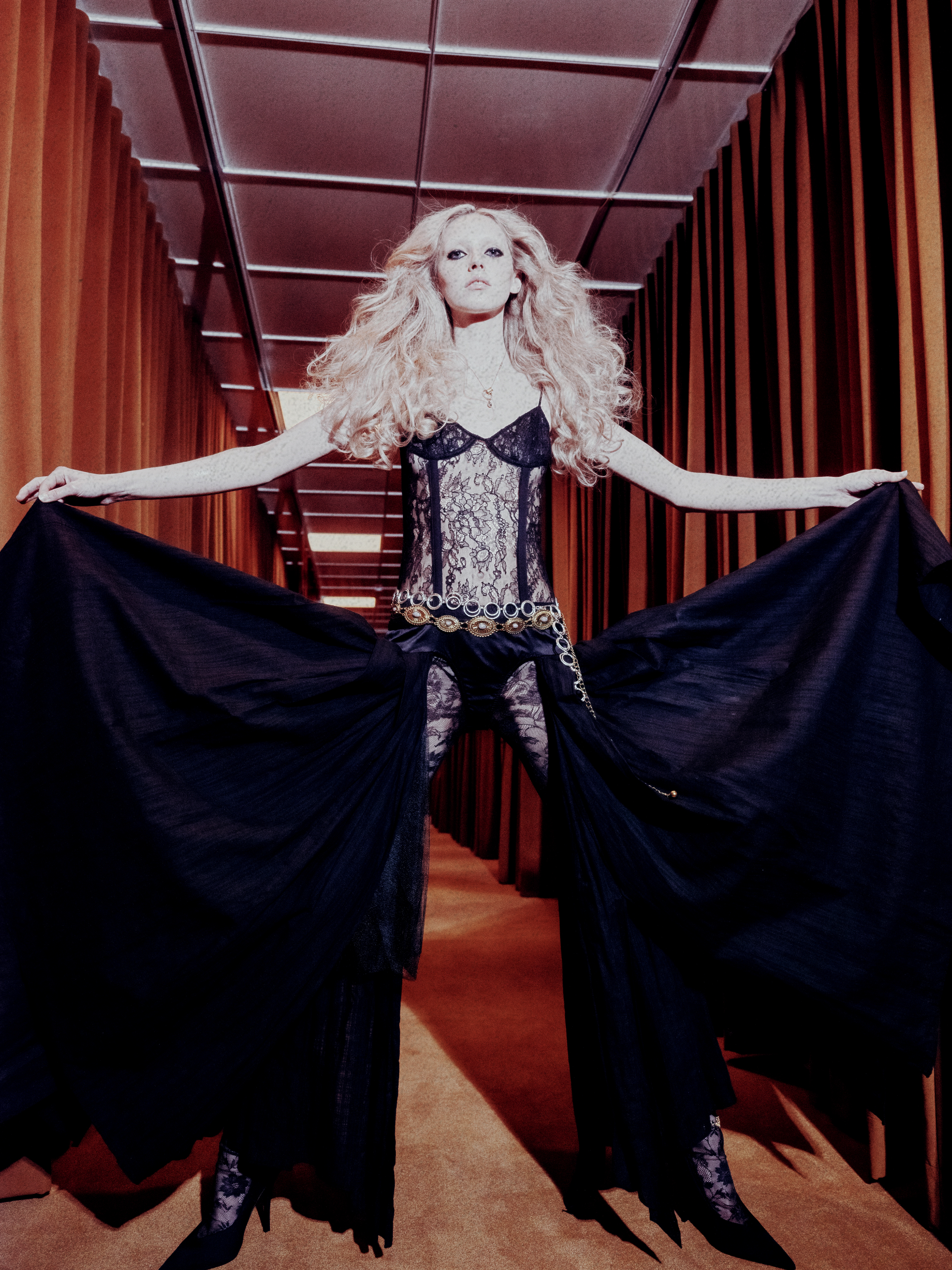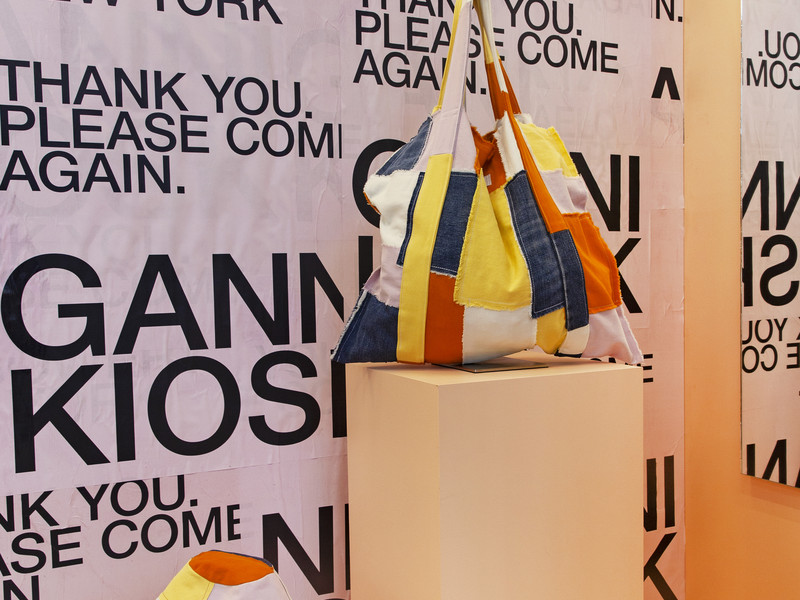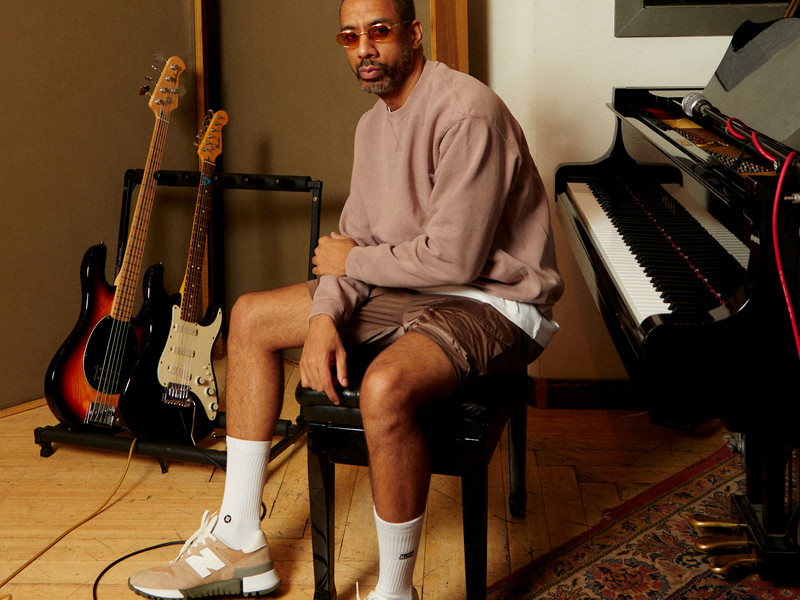All work is play with Bokeum Jeon
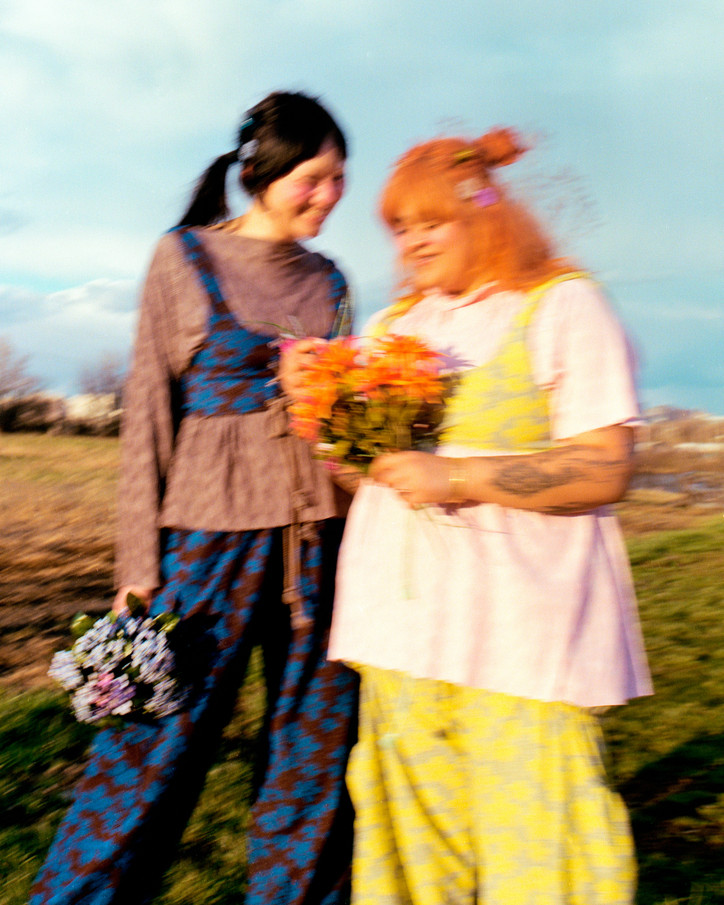
Her practice in textiles, which began with hand-sewing at age 4, utilizes and draws inspiration from natural resources, rather than the built environment to reimagine ‘utility’ and the purpose it serves for its wearers. Jeon’s utility chooses sustainability in the face of overproduction; aims to accentuate rather than exploit; and, ultimately, weaves play into the world of work.
Jeon’s work finds balance in extremes, building a connective tissue between the self and its environment. Proud to watch her garments and their wearers live and grow over time, Jeon uses natural dyes and treated textiles for each piece. Serving as a symbol for Jeon’s ethos, her pieces are built around the seemingly oppositional pillars of impermanence and longevity–giving grace to change to make way for evolution.
Chon, named for the slang term for “country” in Korean, celebrates Earth Day, and the childlike wonder of the natural world. With billowing skirt silhouettes, and terry cloth textures, Jeon’s collection, released on Earth Day, inspires us to evolve.
Learn more about Jeon’s evolution in our exclusive interview below and shop the collection here.
Hi!
Hi, it’s always awkward introducing myself. I’m Bokeum. I’m a multi disciplinary artist and designer. I was born in Seoul, South Korea, and I'm currently based in Philadelphia. And my background is in textiles and fiber. I make wearables, my practice is around making wearables that nurtures the identities of underrepresented people.
What were your first experiences with textiles?
I always loved sewing and anything textile growing up. I learned how to hand sew when I was four or five, and then I learned how to sew on the machine in middle school. And that was when I first started making clothes. So I had my eighth grade project where I made a collection of clothing and I decided to major in textiles and fiber in college. That's when I started taking it more seriously as my career path. And I would say I started, I was more broadly interested in textile in general, but I had an internship in Italy. It was a fashion internship preparing for Fashion Week. And that's kind of when I really learned the techniques and all the skills and as well as, witnessed what, what happens behind in the fashion industry. I think that's when I got to see that there are different approaches to fashion. And there might be something for me in this industry. So I think it was kind of an eye opening moment I had felt like I was the only one doing this approach. And then being able to see it on a really grand scale. I was like, oh, there are people out there, and people have been doing this for a long time. So yeah, it was really eye opening and made me want to be involved in a bigger scale fashion. Fashion empowers me while I navigate as a queer immigrant woman of color: this is why I am a designer.
Tell me about the role of sustainability in your work.
What's really important to me when it comes to making clothes is the connection to the person who's going to be wearing clothes, and also making sure that the processes I use are as least harmful as possible. So I use a lot of deadstock fabric, and recycled materials. I buy a lot of thrifted clothes and use the fabric of blankets and textiles like that. Also a big part of my practice is natural dyeing. So foraging flowers, dyeing with tumeric and onion skin and avocados. I did a lot of personal research during my thesis for natural dyeing. That's what my thesis was about. After graduating, I went to Korea and met up with natural dyers there and learned their processes there like safflower dying.
You mentioned using clothes to nurture identity, what role does culture play for you?
I think just how simple my forms are, I feel like it really speaks to Korean architecture. I grew up in a very traditional Korean house, hanok. And I think, living in Seoul, you are surrounded by palaces and temples and all this imagery that I wasn’t trying to directly pull from, but it shows up in my work a lot.
I think it's been very rewarding to connect back to seeing how Korean clothes like hanbok are made. I realized after taking a hanbok course after graduating that so many things that I do in my practice that relate back to Korean styles are so intuitive. It just made sense to me, but I didn't know where it was coming from. I learned that it's something that is very common in Korean clothing. So that was a very interesting connection that I had. Yeah, so I feel like in ways it felt like reclaiming my origins and building my own connection to my culture.
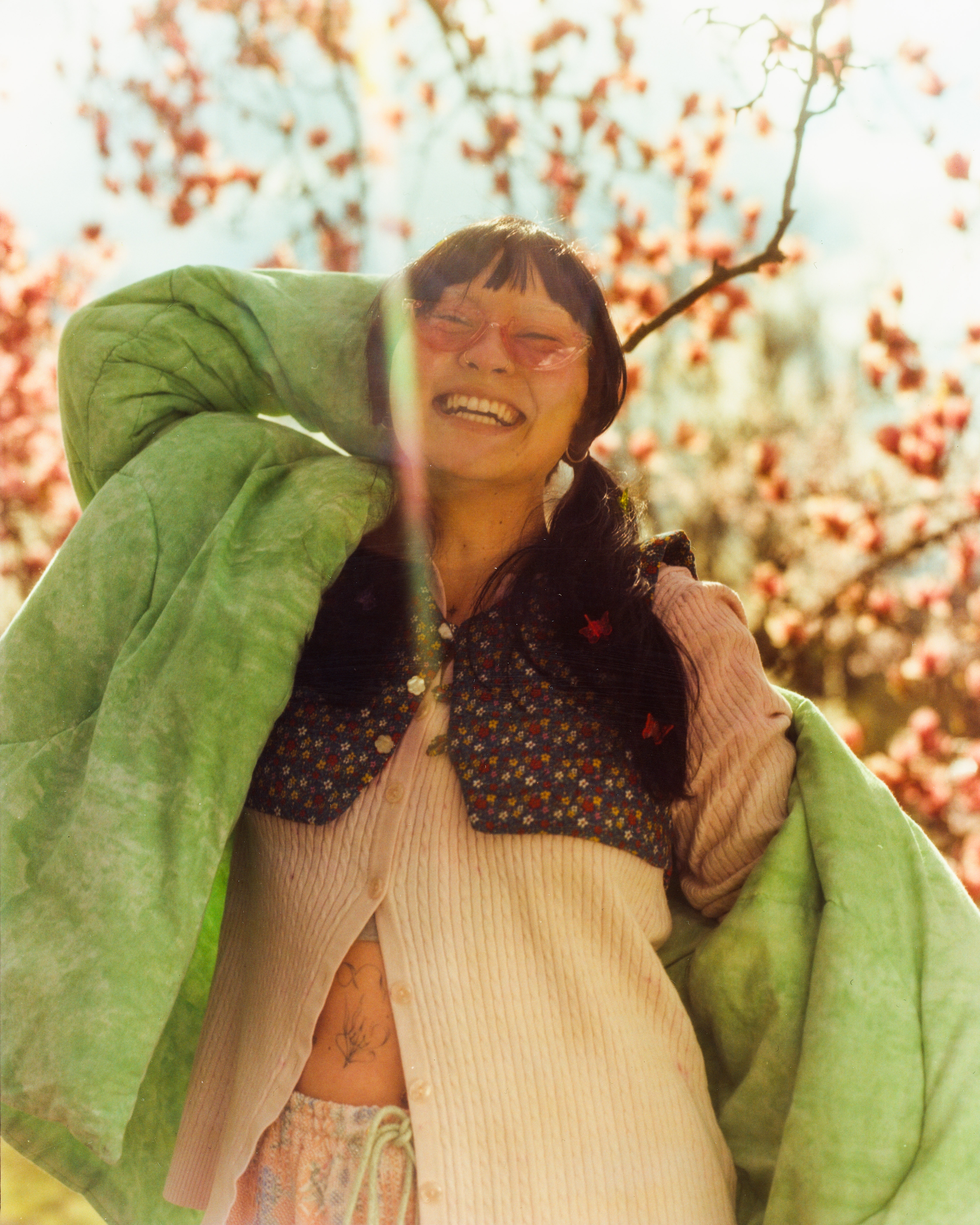
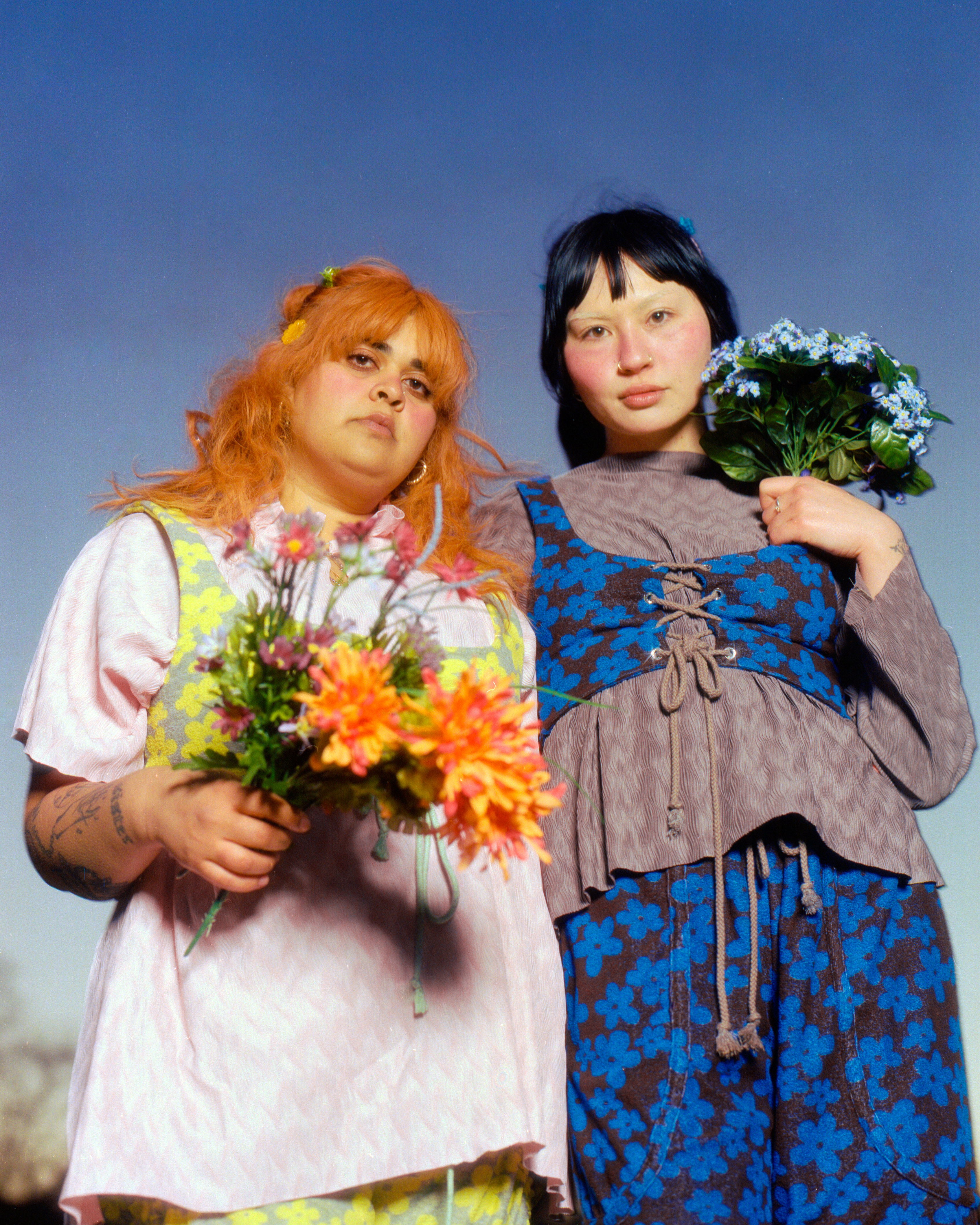
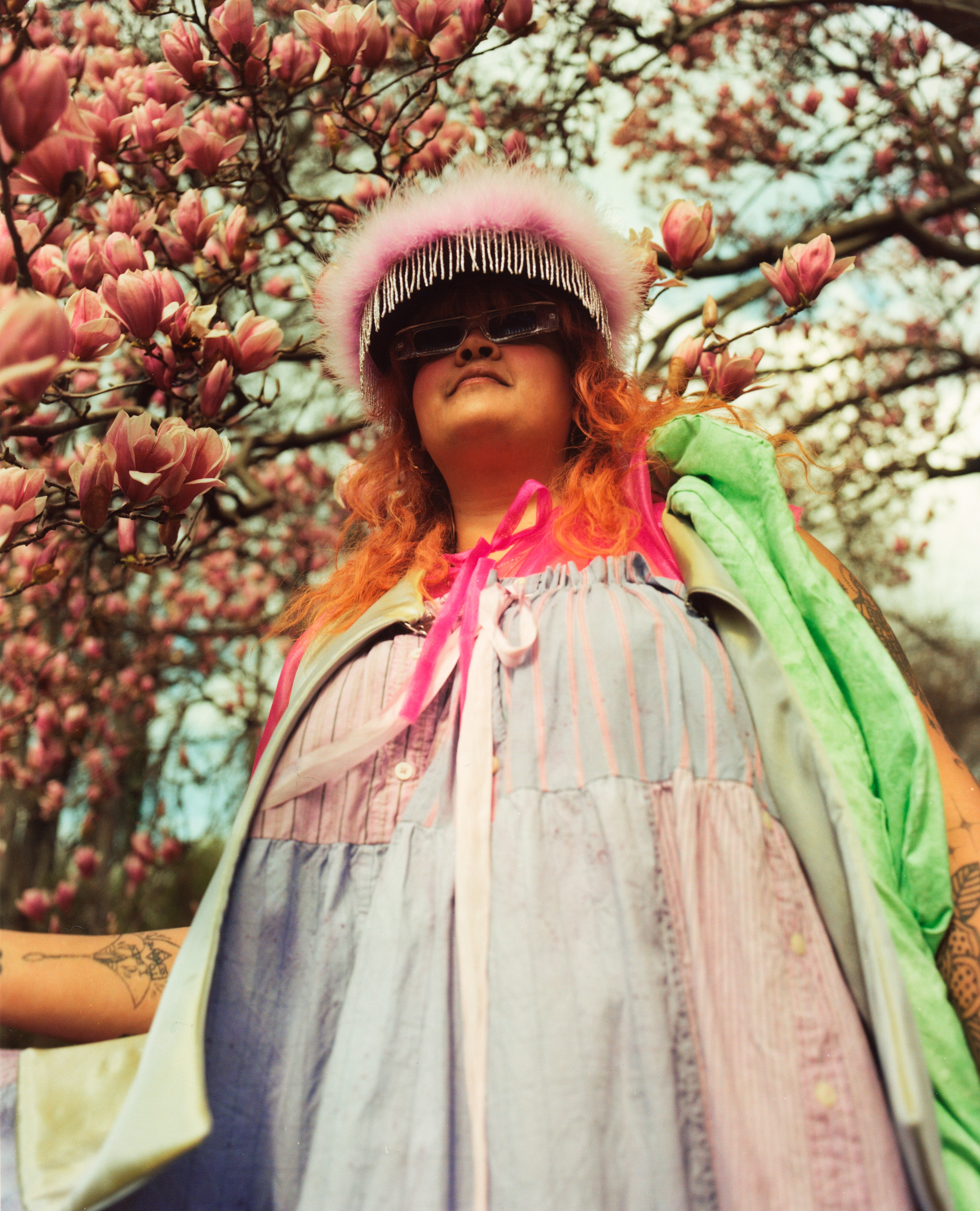
So how did you approach this collection?
I feel like my collections usually start with a question, usually with a question or some sort of statement, which is a strange place to start, maybe. But for this collection, I was really just in my room, thinking about why all the utilitarian wear brands look the same. Like, why is it all just this unbleached canvas, lots of pockets? And where's the fun in that? I started really thinking about what I wear when I'm working, which is something way more flowy. If I’m sitting at a desk for a long time, I want something like drawstring pants or comfy clothes. I don't necessarily look for stiff canvas pants to work in. So then that's kind of where I started. The question of, why quote unquote utilitarian wear was all just a very European military look? And what about all of the other workwear that exists in the world? For me, it was thinking about the Korean farmer and worker. That's also utilitarian. So I decided to call the collection chon, which means country in Korean. It's kind of used as a slang in negative and positive ways, like being out of style, or tacky. But it's also very charming and non conforming to what is trending or stylish and is very independent in a way. I feel like I wanted to play with the idea of humor and joy in this collection as a way of reclaiming that for ourselves and resisting what typical fashion looks like now. I've been thinking a lot about how utilitarian wear and workwear and all these styles are very popular, but how does that serve us? I think there's just generally a lack of color or pattern, and comfort when it comes to the style of workwear. And I feel like that's kind of what I'm trying to offer with this collection. I’m working with terry cloth and lots of florals. A lot of these materials and patterns are very inspired by Korean older women from farms. It’s the kind of thing you would find at a countryside market, something very vibrant, breezy and flowy.
Are there any direct inspirations that show up in Chon?
Yeah, actually. The vest is very inspired by–it has this particular wing shape at the bottom. It was directly pulled from this bobbin that my grandma made when she was getting married. It’s from her sewing kit. I definitely pulled a lot of inspiration from Korean traditional wear as well, like modern farms all have the cinched pants at the bottom. That’s a very farm look. A lot of my looks now have a lot of drawstrings and can be pulled apart because that’s something I am very conscious of as a wearable maker is making sure many different types of bodies and wearers can adjust to however they’re feeling. But yeah, right now I’m obsessed with the blanket pants. When I’m making a collection, I like to start with the world that they live in before I get into the detail. Like, this is their shirt. These are their pants. So I feel like a big part of it was just imagining what they can do in these pants or like, how do they move in this world, and how do the clothes reflect that?
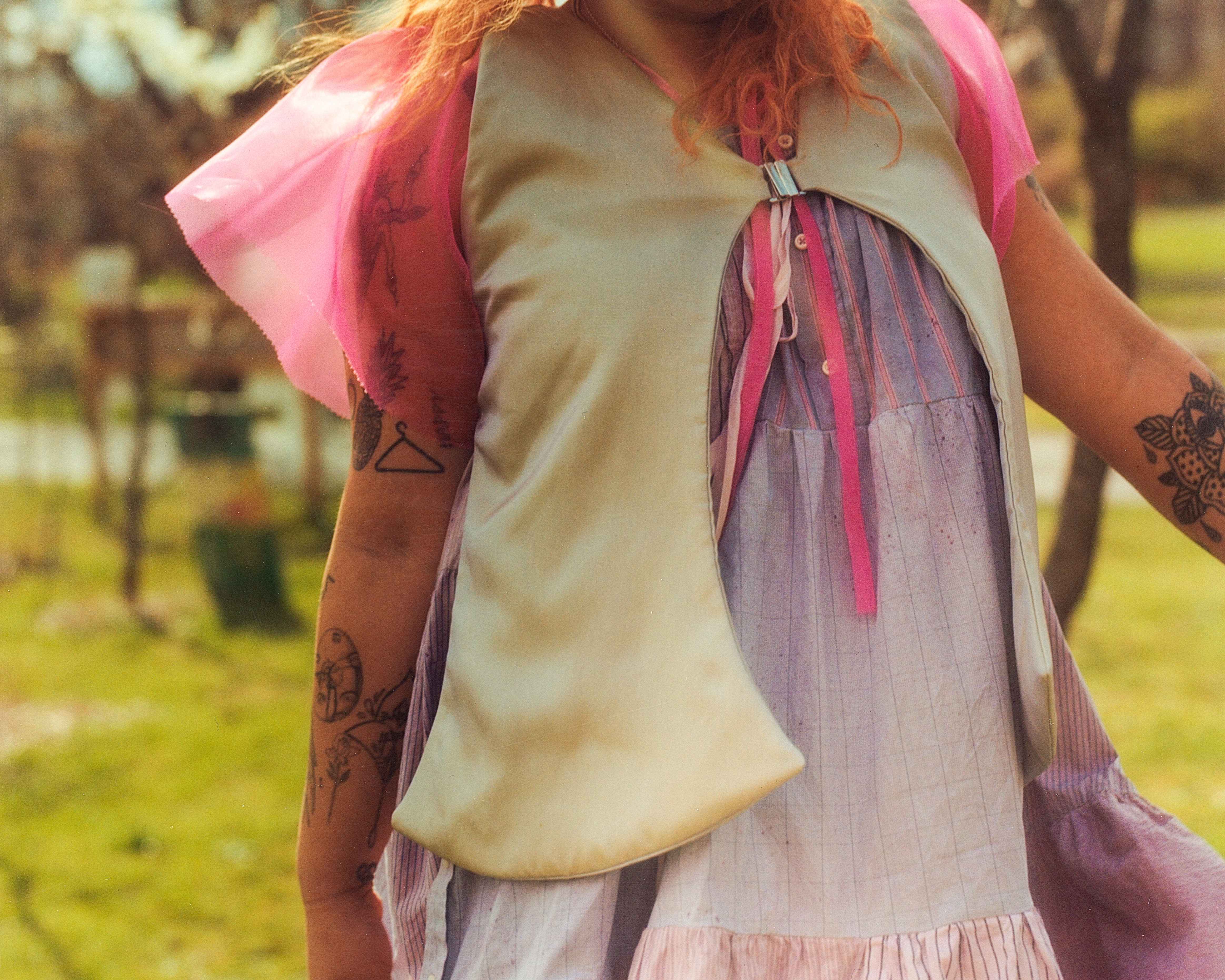

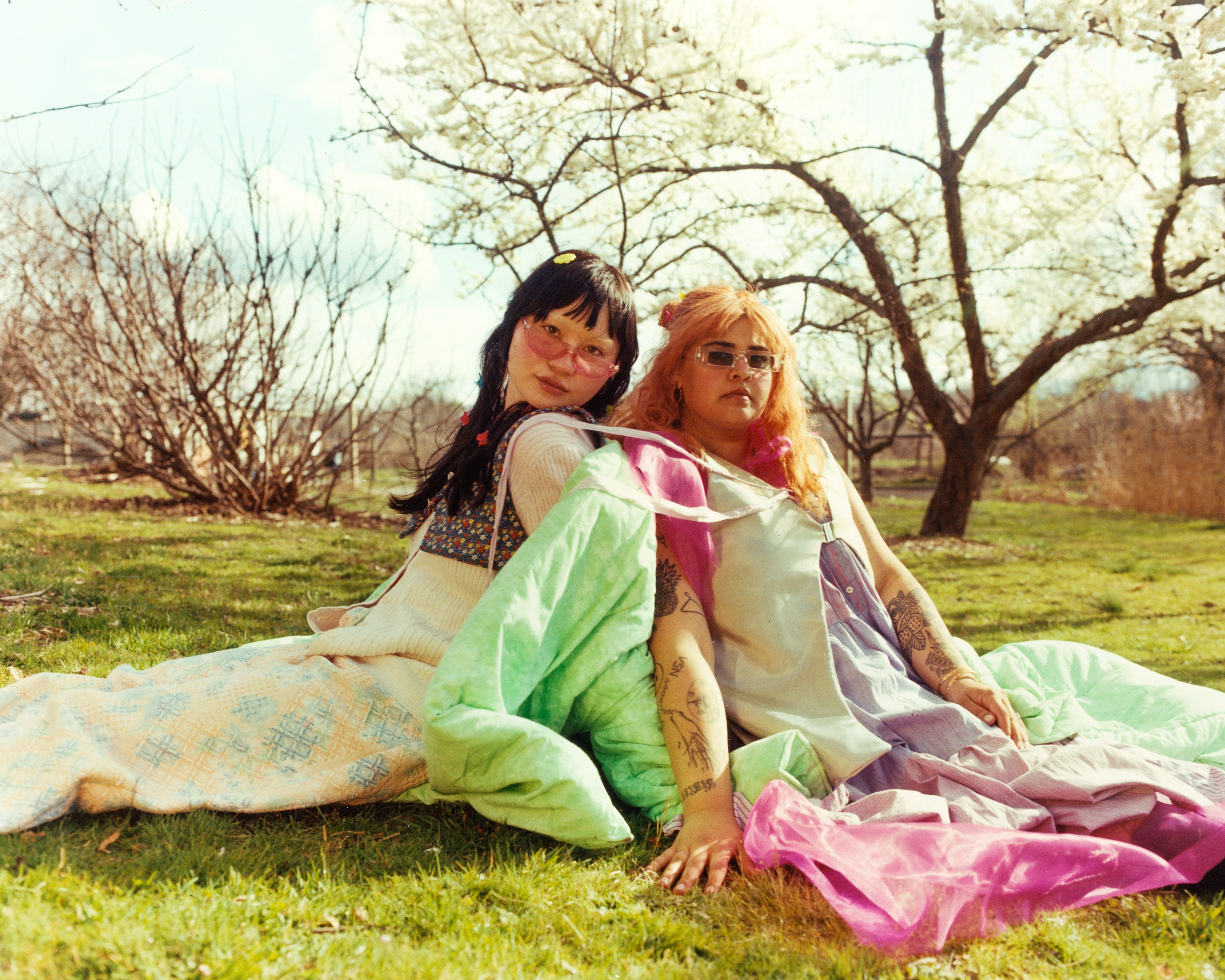
So who do you envision wearing your clothes?
What are they like? Definitely like giggly. I feel like there's a level of confidence for sure, or just being down to explore and experiment. Someone who finds joy even in difficult situations. Someone who is resilient, who still chooses to be tender, and moves from a place of love. When I was choosing the models it was really interesting actually. I was just drawing a random figure for my sketches. And I realized, I know this person. I was like, that’s someone that I know, Harumi, who is the model with the black hair. So I asked them to model for me because I was like, I was just literally just sketching it with you. Yeah, so that's kind of how I went about casting my models. A really big perk for making clothes and making collections is to work and invite people to share my vision with me as a way of connecting and collaborating and becoming friends.
With your work also being so rooted in the environment, how did your environment impact this collection?
I feel like this collection was literally coming out of seasonal depression and just feeling so still during all of winter. I just didn't touch my sewing machine for two months which is a sign of depression for me. And it was once I thought about this collection idea and decided to move forward with it, when everything else in my life started happening as well like people were contacting me to hang out and I got invited to do this pop up and things were moving again. And then, and I feel like that was the moment when, once I started moving, it felt like everything kind of clicked together. It was very inspiring to make the whole collection.
So what do you hope to continue moving towards, once this collection comes out?
Yeah, so a lot. I always have 10 million projects going at once. Something that I have been struggling with in the sustainable practice, is that can sometimes be limiting to do a production of any sort, because I'm using deadstock materials, so I can't source it again, or things like that. So something that I really tried to push with this collection was to find a balance both using recycled materials and also materials that I could source. And so I'm trying to do an approach of pre-ordering materials that I will be able to re-source and also a big collection, like two collections in one. So yeah, I'm excited to see how that pans out. And I have budding ideas of what the next collection will look like as well.
And how are you spending Earth Day?
I am launching my newest collection "Chon" on Earth Day, with enthusiasm! I've been working on this collection for over two months now, and I am super excited to share them with the world! I will also be joining many other sustainable makers at the Feminist Flea's A Sustainable Marketplace to celebrate Earth Day together!
